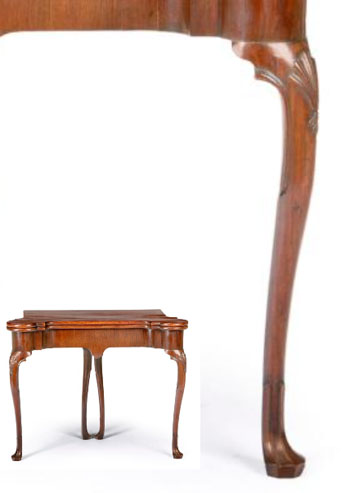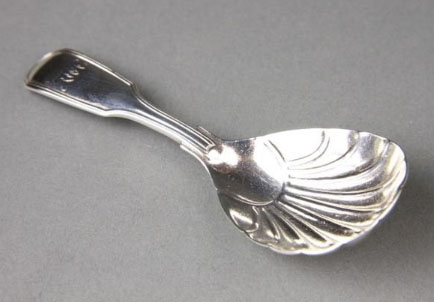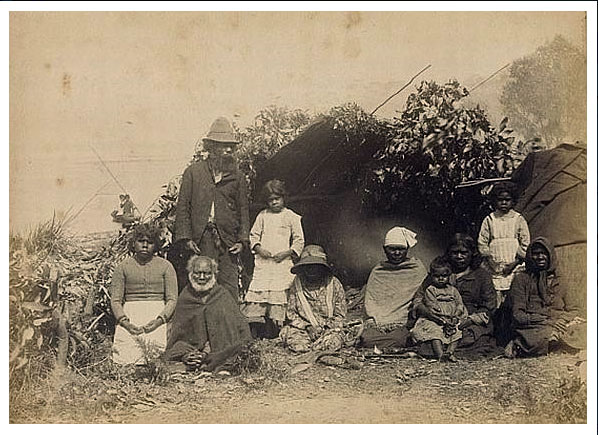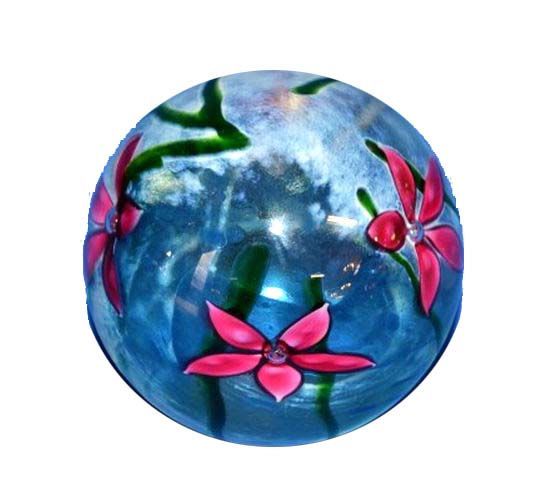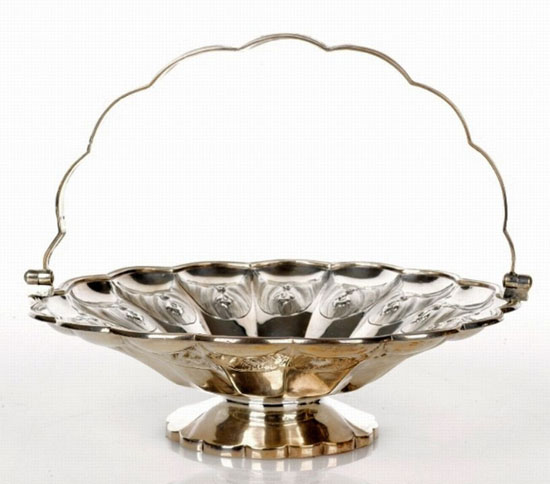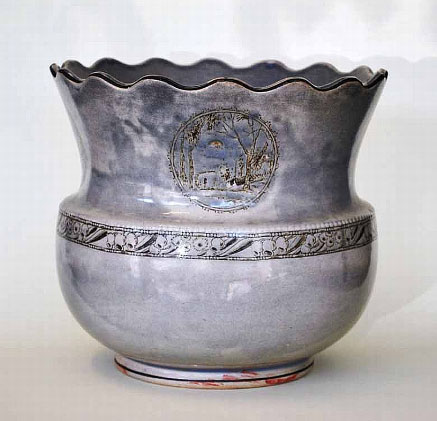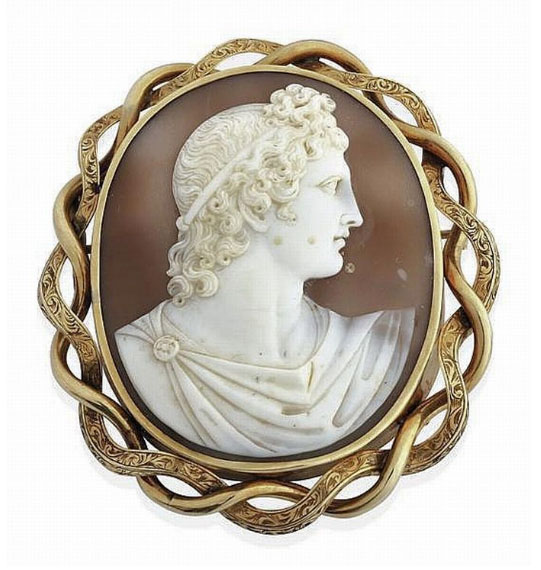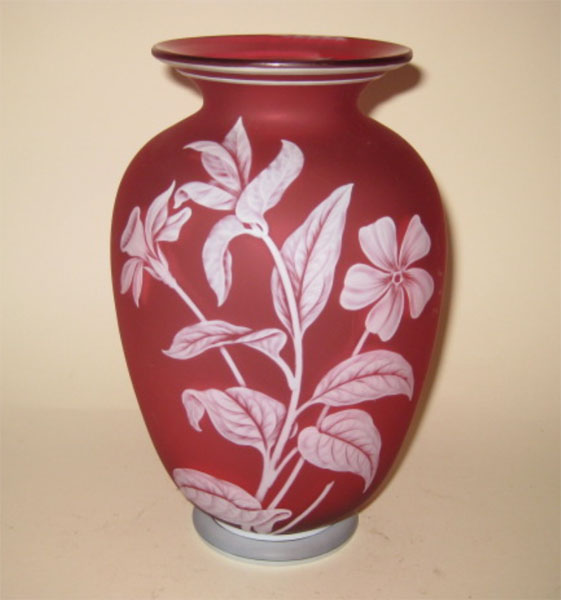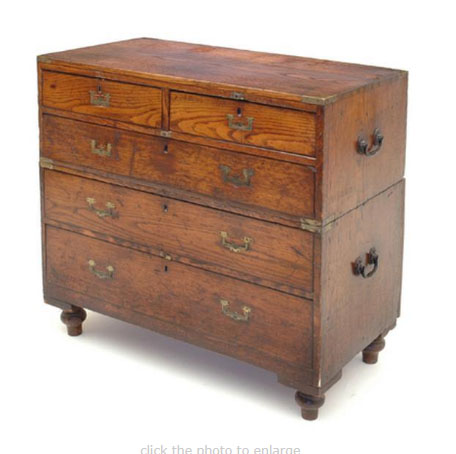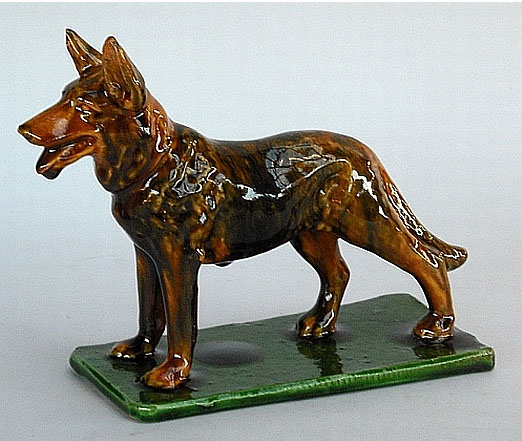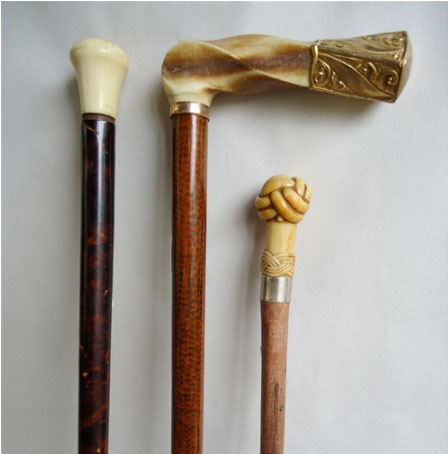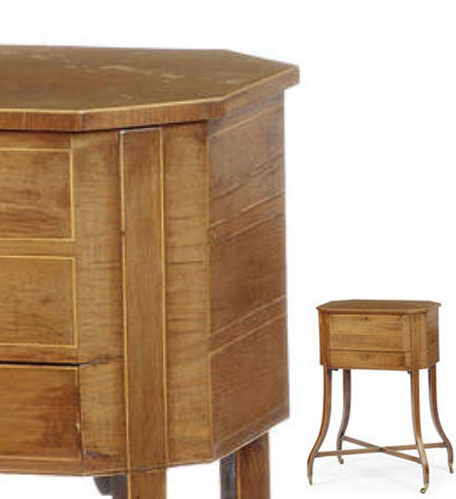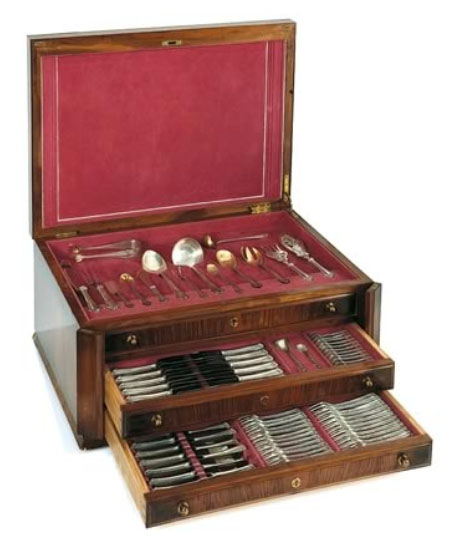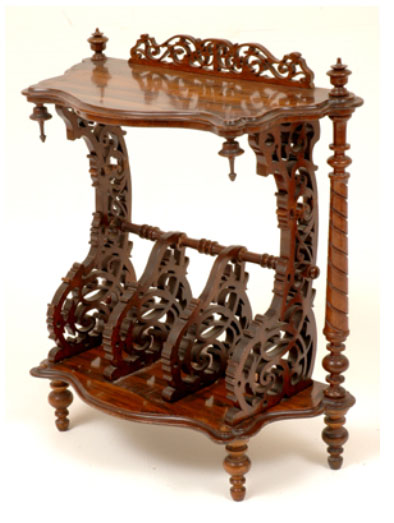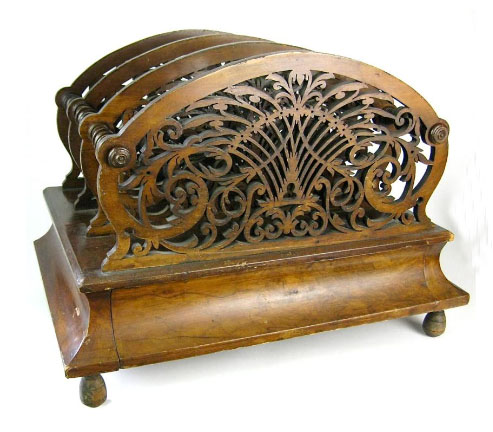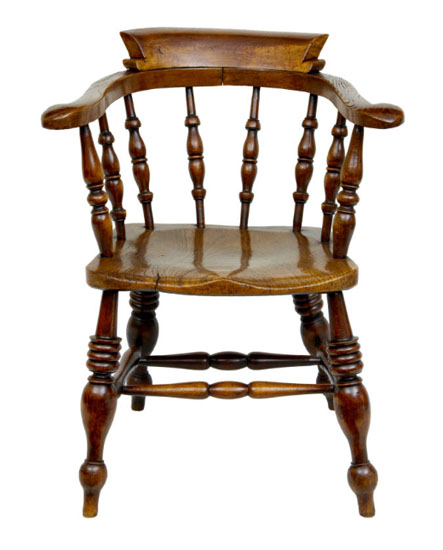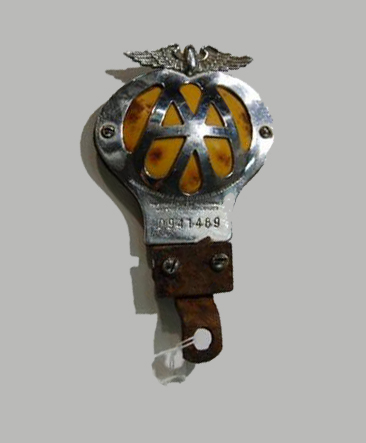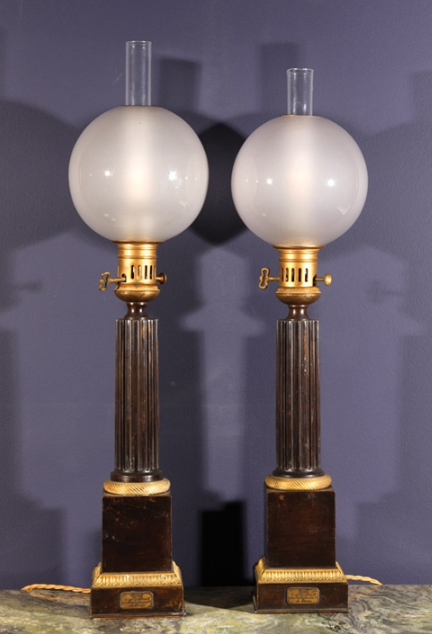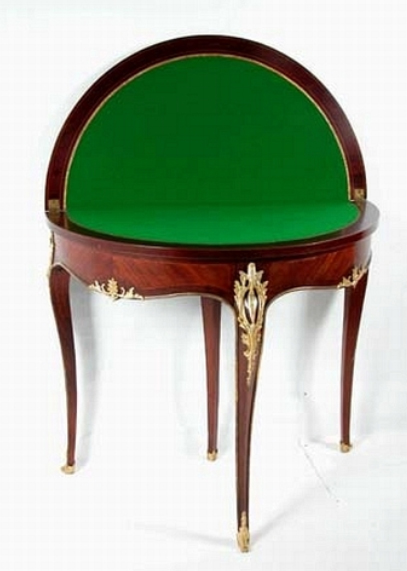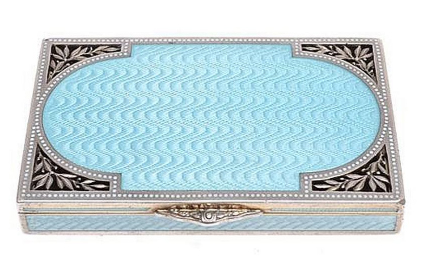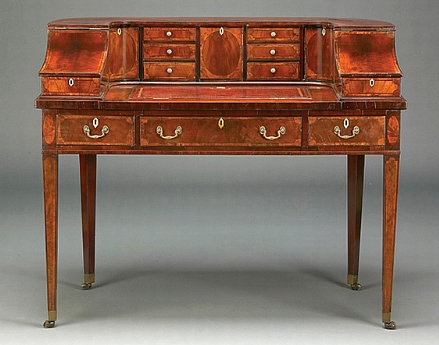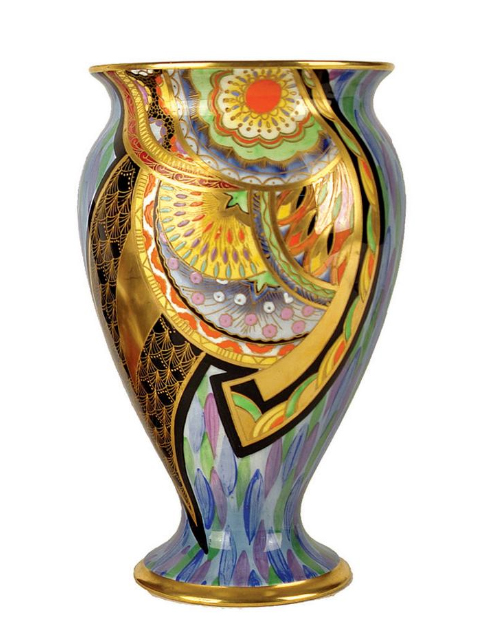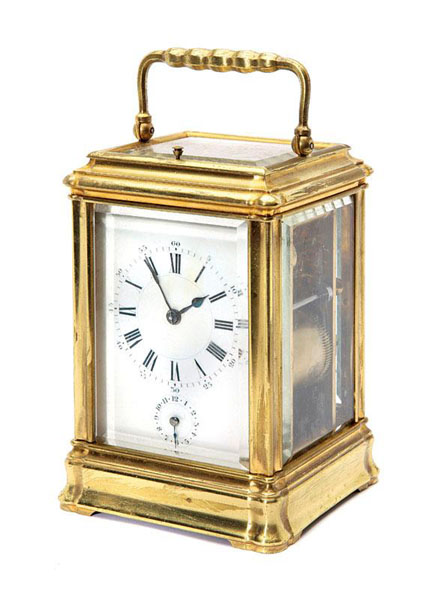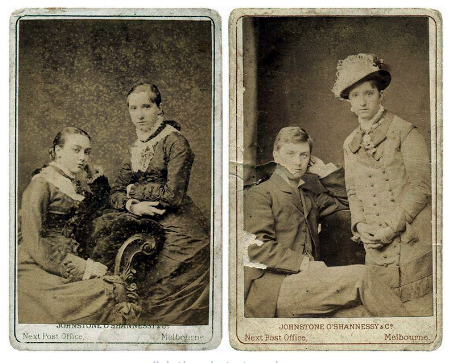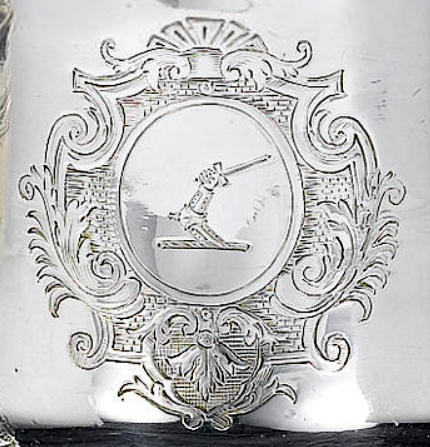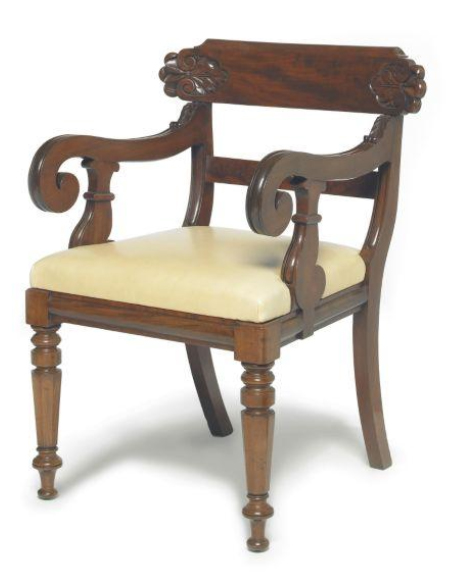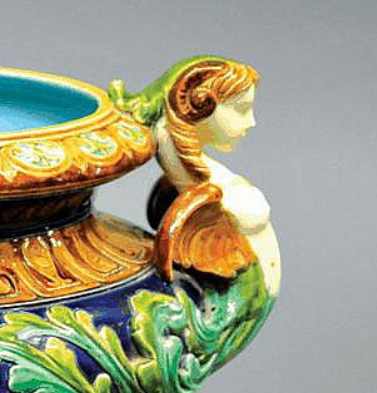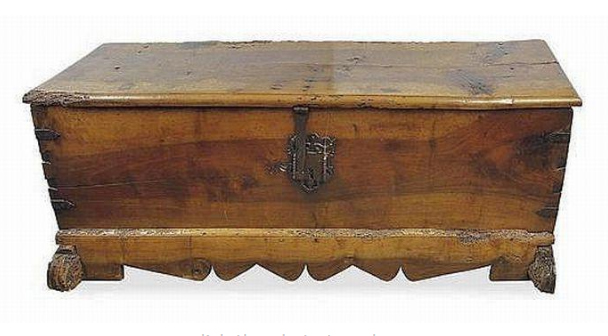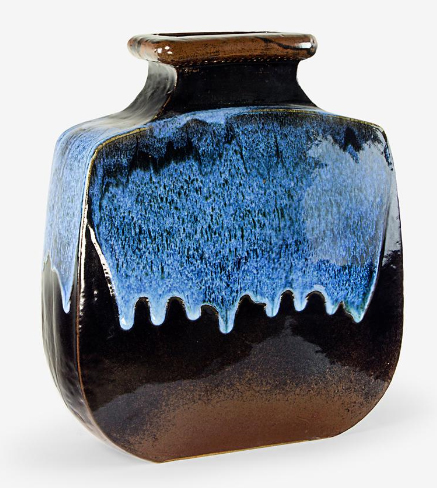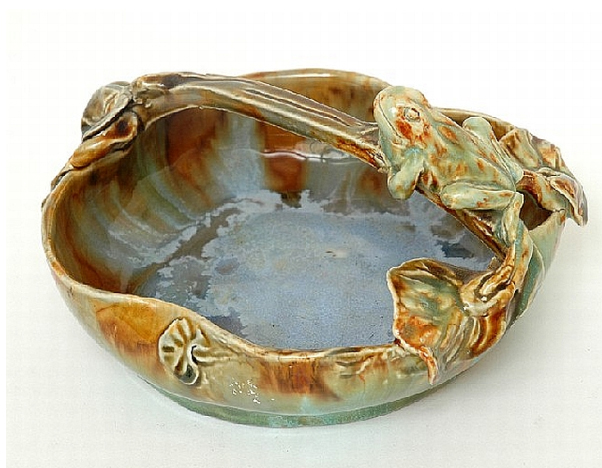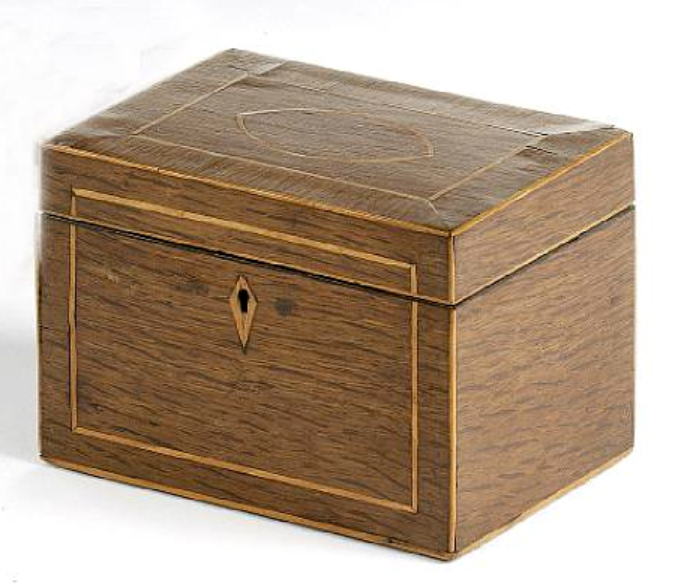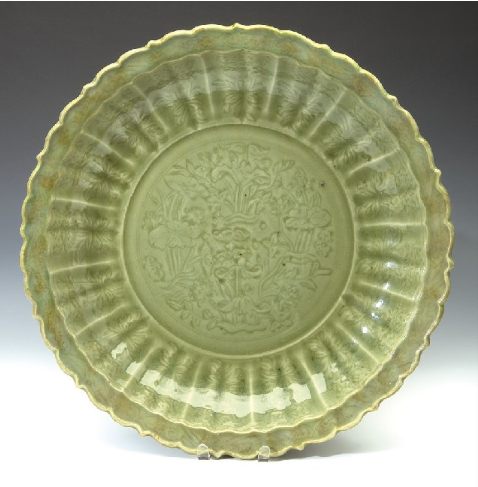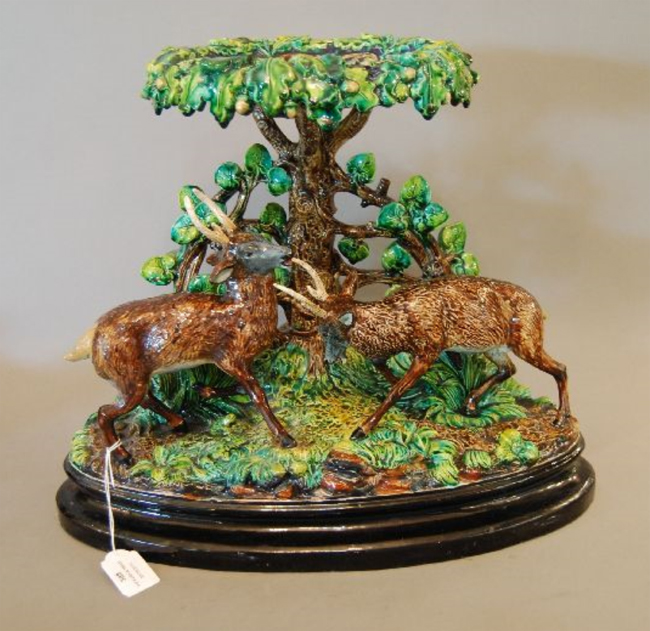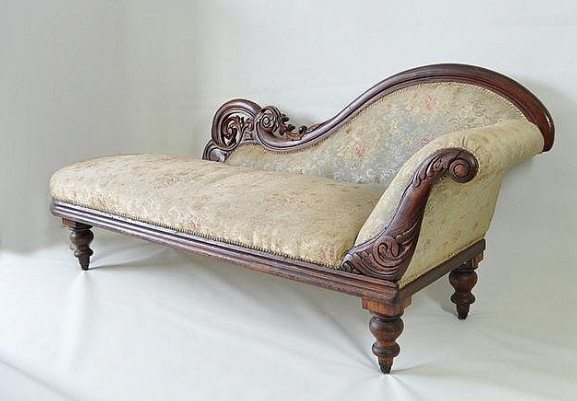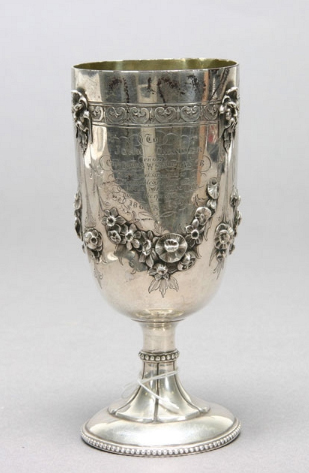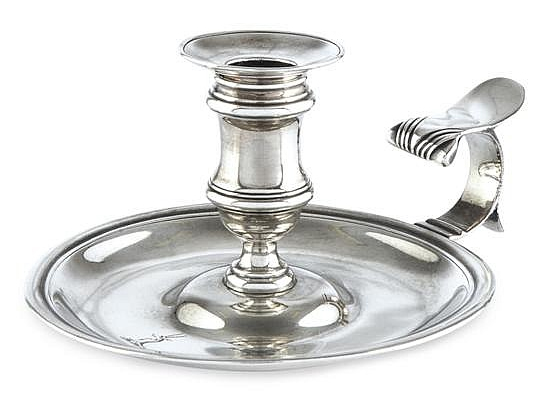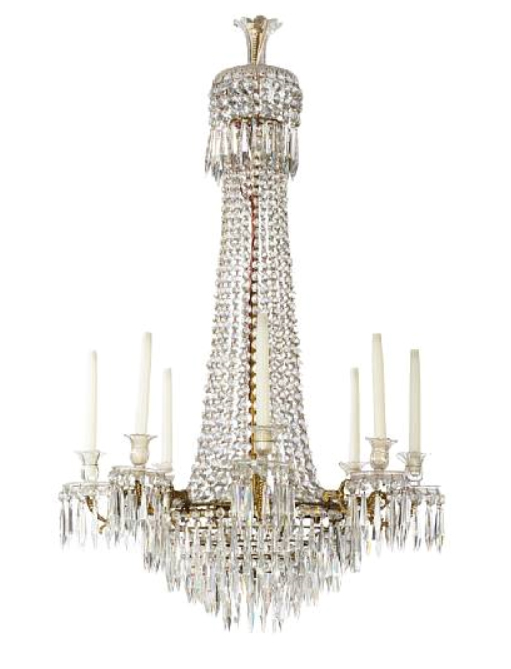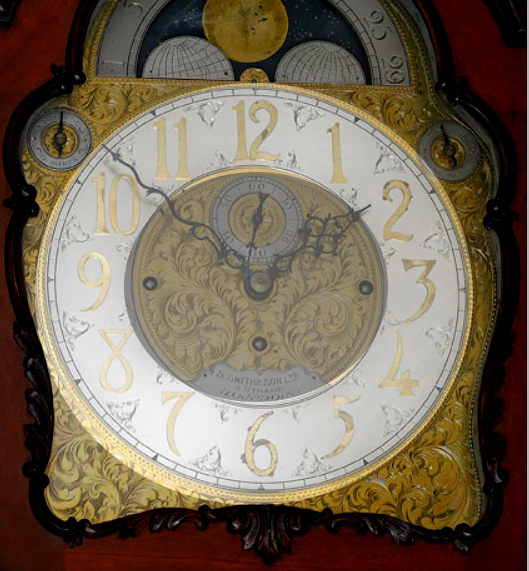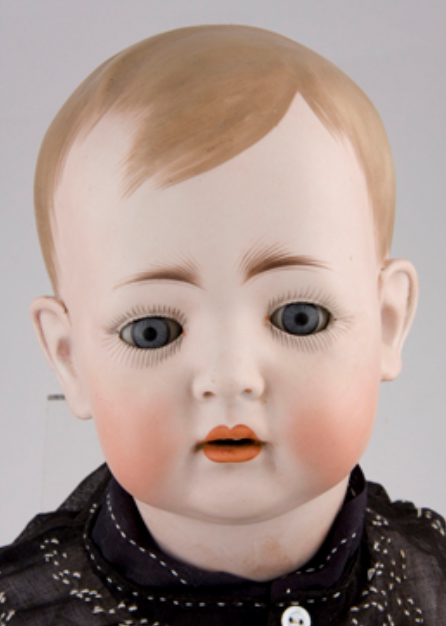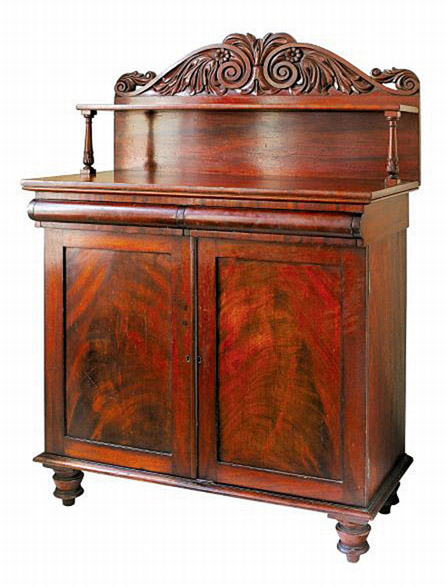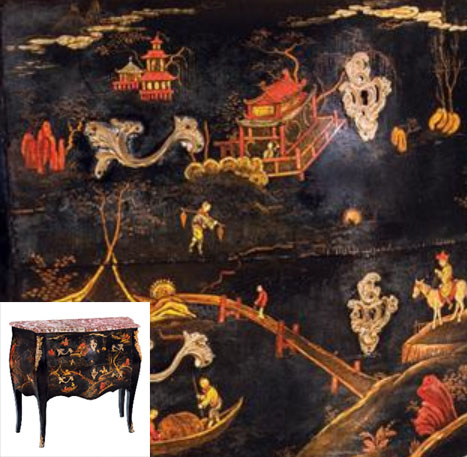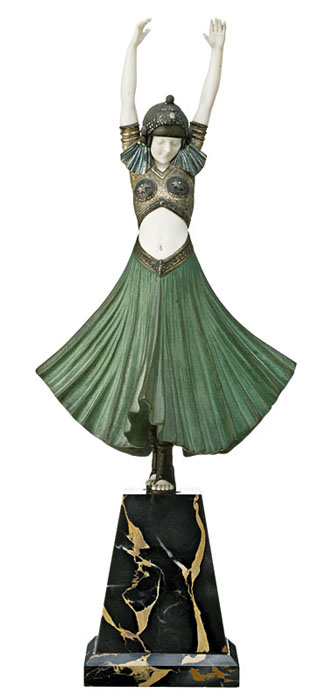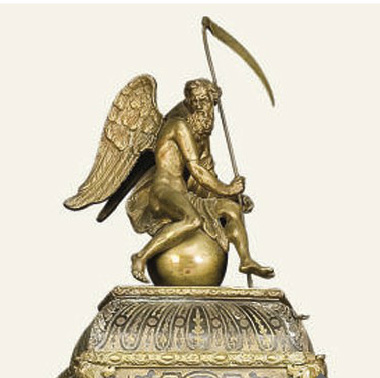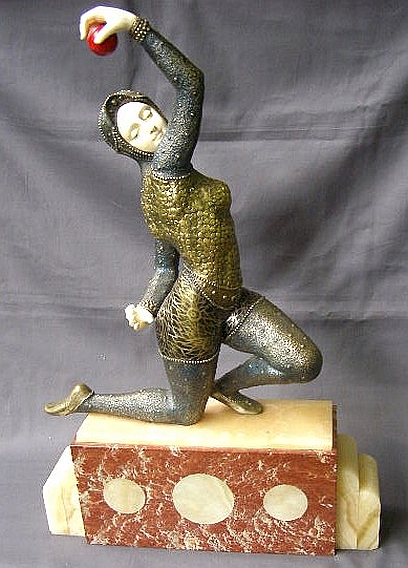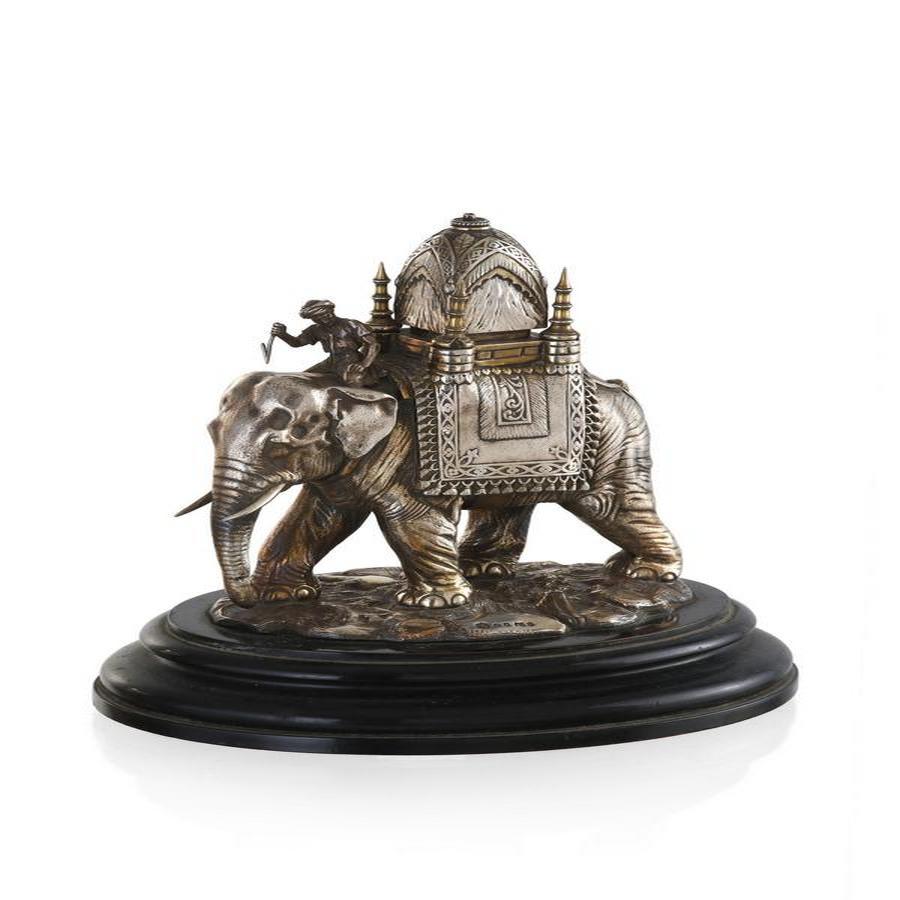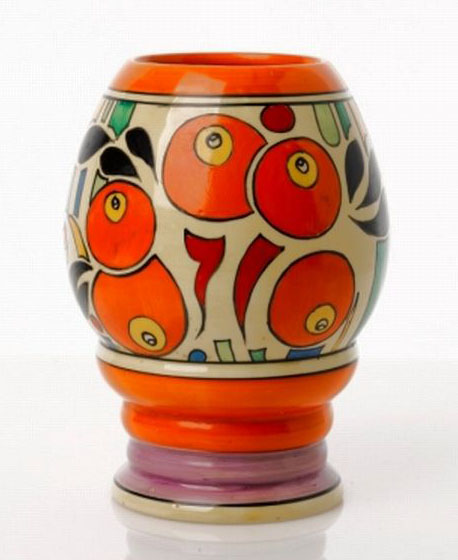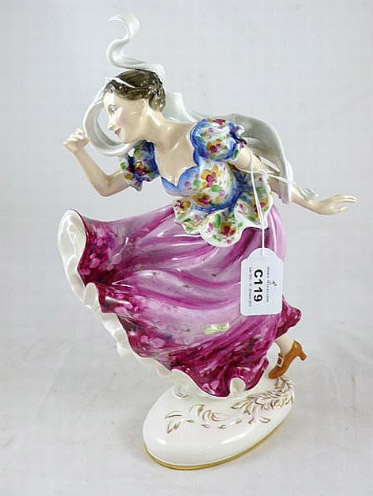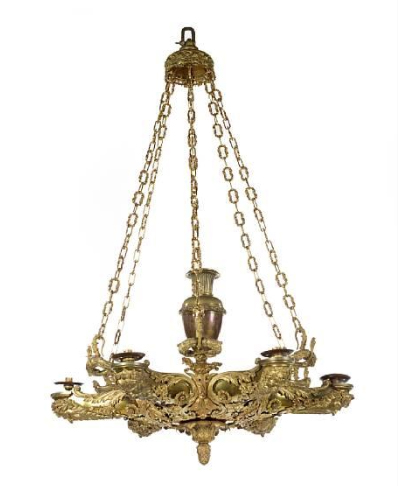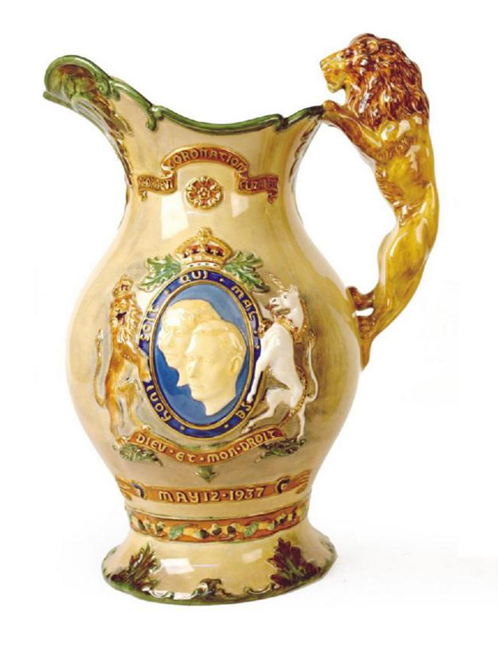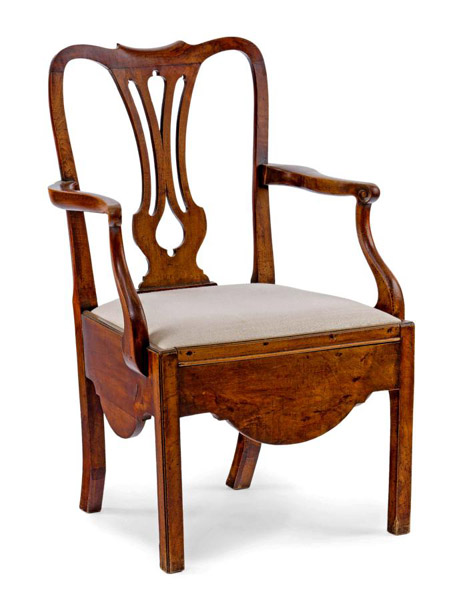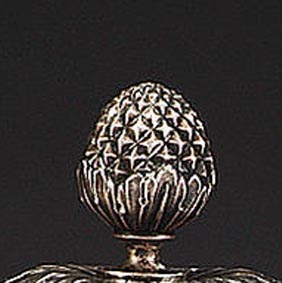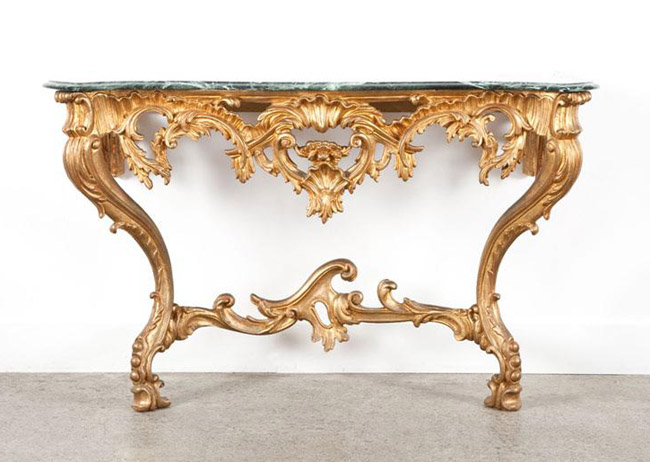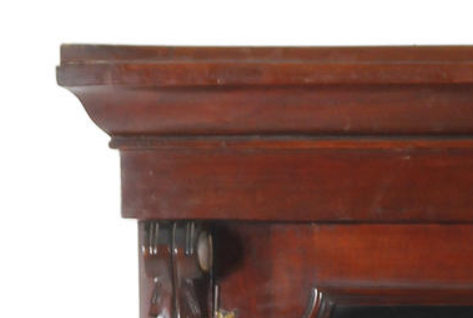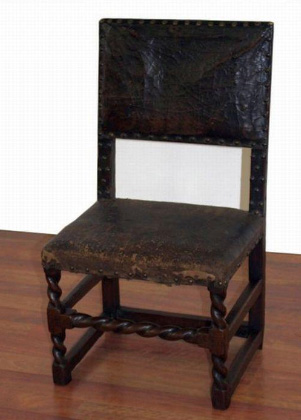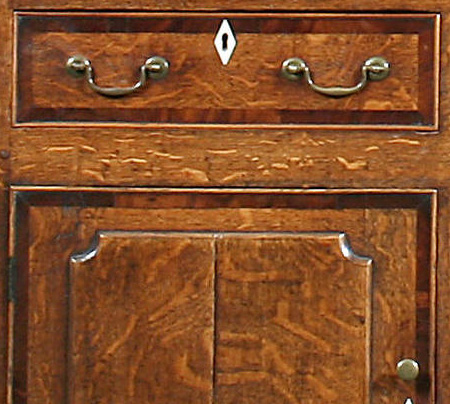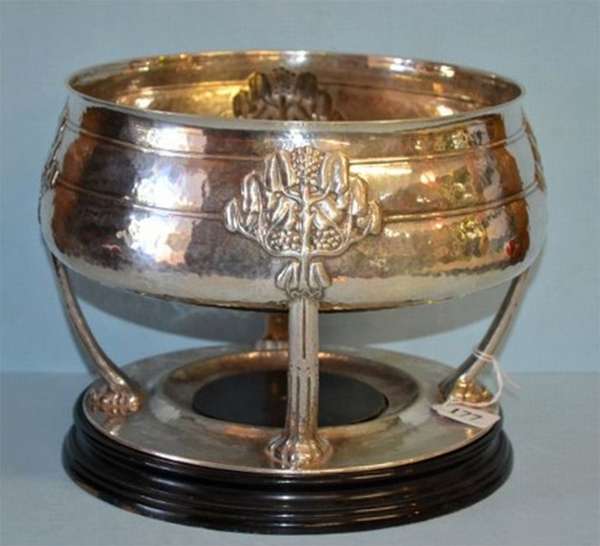Learn about antiques and collectables...
Click on a category below to show all the entries for that category.
Learn about and understand the items, manufacturers, designers and periods as well as the specialist terms used in describing antiques and collectables. Either click one of the letters below to list the items beginning with that letter, or click on a category on the left side of the screen to list the items under that category.
C. F. Martin & Company
C. F. Martin & Company is a guitar manufacturer. The business was founded by Christian Frederick Martin, Senior. who was born in Markneukirchen, Germany, in 1796. He was the son of a guitar maker, and he learned the trade from his father. In 1833, Martin emigrated to the United States and opened a guitar-making shop in New York City.
Martin's early guitars were made in the traditional German style. However, he soon began to experiment with new designs, and he developed a number of innovations that would become standard features on Martin guitars. For example, Martin was the first to use steel strings on acoustic guitars, and he also developed a new bracing system that improved the sound of the guitar.
In 1839, Martin moved his shop to Nazareth, Pennsylvania. This was a strategic move, as Nazareth was located in the heart of the American guitar-making industry. Martin's company continued to grow in the years that followed, and he became one of the most successful guitar makers in the world.
Martin was a lifelong innovator, and he continued to experiment with new designs and materials throughout his career. In 1843, he introduced the Dreadnought model, which became one of the most popular acoustic guitar body shapes in the world. In the 1930s, Martin began to produce electric guitars, and in the 1970s, he opened a custom shop, where guitars are made to the exact specifications of the customer.
The company is still based in Nazareth, Pennsylvania, and is one of the most respected guitar manufacturers in the world. Martin guitars are known for their high quality, their beautiful sound, and their timeless design. Its guitars are played by some of the most famous musicians in the world, including Bob Dylan, John Mayer, and Taylor Swift. Martin guitars are known for their high quality, their beautiful sound, and their timeless design.
C. J. Vander
C.J. Vander was a silversmith and retailer based in London. The company was founded in 1886 by Cornelius Joshua Vander, who was originally an apprentice to the firm of Macrae & Goldstein. Vander registered his first mark on 18 October 1886, while he was based in Soho, London. C.J. Vander produced a wide range of silver objects, including flatware, hollow ware, and jewelry. The company's work was known for its high quality and craftsmanship. C.J. Vander also had a reputation for innovation, and the company was one of the first to use hand-forged flatware.
The company continued to operate until 1996, when it was acquired by Syratech Corporation. Syratech continued to produce silver under the C.J. Vander name, and the company's products are still considered to be among the finest in the world. C.J. Vander was a maker of silver, not a retailer. The company's silver was marked with the maker's mark CJVR, which was registered with the Worshipful Company of Goldsmiths in London. The maker's mark was stamped on the underside of the silver object, and it was accompanied by the date letter and the silver standard.
Cabaret Set
A cabaret set, also known as a coffee or tea cabaret, is a set of matching cups, saucers, and serving pieces, typically including a coffee pot, tea pot, cream and sugar container, and a tray, used for serving coffee or tea. The term "cabaret set" comes from the fact that these types of sets were often used in cabarets, which are venues for entertainment such as music, dance, and theater. They were typically used in these venues to serve drinks during intermissions or after the performance.
These settings were also popular in the Art Deco period, where they were used to entertain guests in private homes. The sets were often made of luxurious materials such as silver or porcelain and were decorated with bold geometric designs, stylized figures, and geometric shapes which are the hallmarks of the Art Deco style. The sets were often used to showcase the host's wealth, taste and cultural sophistication.
Caberet Set
A cabaret set is another name for a small tea or coffee service, and usually consists of two cups and saucers, a small teapot, a sugar bowl, a cream jug and a tray.
Cabochon Cut in Jewellery
A cabochon cut is a type of gemstone cutting where the stone is cut and polished in a convex shape with a flat bottom and a domed top, with no facets. This type of cut is typically used for opaque or translucent stones that have natural patterns or inclusions that are best displayed in this type of cut. Examples of stones that are often cut as cabochons include turquoise, opal, and moonstone.
Cabriole Leg
The cabriole leg evolved from an elongated scroll, curving out at the knee which may or may not be carved, and forming a serpentine shape as it descends to the foot.
First introduced into English furniture in the late 17th century, cabriole legs were widely used during the Queen Anne and early Georgian periods, where they frequently terminated in a pad foot or ball and claw foot. The style has had many imitators since then. The cabriole leg was re-introduced in the mid-19th century, and is commonly associated with the balloon-back dining or drawing-room chairs made in walnut, mahogany or, in Australia, cedar. The Victorian cabriole leg, on the whole, was rather more slender than the earlier form, following the French style, which emphasized the delicacy and daintiness of the chairs they were designed to support. Cabriole legs are sometimes found on windsor chairs, especially those made during the 18th century.
Cache Pots
A cache pot, also spelt as cachepot, is a type of decorative container used to hold a flower pot containing a potted plant. The cache pot is a separate container from the plant's actual pot and is typically used to enhance the appearance of the plant or to hide an unattractive or functional flower pot. They are also used to protect the surface of furniture or floors from the water and soil of a potted plant. They can also be used to conceal an unsightly plastic nursery pot, or to provide a drainage layer for a plant.
Cache pots have been used throughout history to enhance the beauty of potted plants and were particularly popular during the Victorian era. Major manufacturers of ceramics cache pots included Minton, Wedgwood, Meissen and Royal Worcester.
Caddy Spoon
A caddy spoon is a short handled spoon used for measuring the dried tea from the tea caddy, where it was stored, to the teapot, and most commonly in use from the late 1700's to the mid Victorian period, although examples continue turning up dated into the early 1900s.
Caddy spoons were produced in all shapes and forms ranging from traditional patterns of the 18th century to striking designs by artist craftsmen of the 1920s.
Arts and Crafts caddy spoons in particular show the widest range and diversity of style. At the turn of the 20th century established designers of the day put their own interpretation on traditional forms and caddy spoons were produced in silver, copper, brass and pewter.
They are recognized for their simple elegant shapes, hand-hammered finish and are often decorated with enamel or cabochon gemstones.
Caddy spoon collectors may concentrate on specific makers and their individual hallmarks, and enthusiasts are always looking for less prolific or unrecorded makers.
Cado / Cadovius / Royal+system (denmark)
The history of Cado, Danish mid-century furniture makers, can be traced back to 1948, when Poul Cadovius founded the furniture company Royal System. Cadovius was known for his innovative and functional designs, and his Royal System modular wall system was an instant success.
In 1964, Cadovius acquired the Danish furniture company France & Søn and renamed it Cado. Under Cadovius's leadership, the company continued to produce high-quality modular wall systems, as well as a variety of other furniture, including chairs, tables, and storage units.
Cado's furniture was characterized by its clean lines, simple forms, and use of natural materials such as teak and rosewood. It was also designed to be functional and versatile, with many pieces serving multiple purposes. For example, Cado's modular wall systems could be used to create a variety of different configurations, from a simple bookshelf to a complete home office.
Cado's furniture was popular in Denmark and throughout Europe, and it was also exported to the United States and other countries around the world. The company's success was due in part to its commitment to quality and craftsmanship, as well as its ability to produce innovative and functional designs.
Cadovius retired in 1985, and the company was eventually sold. However, Cado's furniture designs remain popular today, and they are prized by collectors and design lovers alike. Cado's modular wall systems are still in production, and they are still considered to be some of the best examples of Danish mid-century modern furniture.
View further examples of Cado / Cadovius / Royal+system (denmark)
Cadogan Teapot
The Cadogan teapot or wine ewer originated in China. It has
no lid and fills from the base so that when standing upright they appear to
have no entry point, and so no way to be filled yet, there is a spout from which the contents are
poured.
The Cadogan teapot or wine ewer has a hole in the base with
an interior tube running from it to near the inside top, and so can be filled
through the base and then turned the right way up without the contents
spilling.
They were named after Lord Cadogan (1728- 1807) who
supposedly used them in his home. The Cadogan family, who were prominent
members of British society in the 19th century and were known for their love of
tea and their collection of beautiful teapots.
‘Cadogan’ teapots appeared in England during the early
nineteenth century after Chinese porcelain wine pots were imported and then
copied locally.
Caire, Nicholas
Nicholas John Caire was born in 1837 in Guernsey, Channel Islands. He migrated to Australia with his parents and arrived in Adelaide about 1860.
He had developed an interest in photography from a young age and with help and instruction from a local photographer soon becam competent in the art.
By his late twenties he was travelling and photographing through Gippsland.
In 1867 he opened a studio in Adelaide.
After marrying in 1870 he and his wife moved to Talbot, near Clunes, Victoria, where he worked for the next six years.
In 1876 when he bought an established studio in Collins Street, Melbourne but in 1885 he gave up his city studio and devoted the rest of his life to outdoor photography, working from his home in South Yarra.
He died at Armadale, Victoria, in 1918.
Cairngorm
Cairngorm is a type of smoky quartz, which is a variety of quartz that ranges in colour from light gray to dark brown. It is found in granite rock in the Cairngorm Mountains of Scotland, hence its name, and it is typically found in large clusters. The mineral is relatively hard, with a Mohs hardness of 7, and it is fairly durable, making it a suitable choice for jewellery and decorative objects.
Cairngorm is said to have spiritual and healing properties, it is believed to have grounding energy, and it is thought to help with focus and concentration. It is also said to be a stone of protection and is said to help balance the energy within the body.
The mining and collection of Cairngorms is heavily regulated in Scotland, and it is illegal to remove them from the Cairngorms National Park without a permit.
Caithness Glass
Caithness Glass was founded in Wick in North East Scotland in 1961. In 1962, Paul Ysart, who had worked for Moncrieff glassworks (Monart) in Perth, Scotland, and whose father was a glassblower, joined as supervisor and the company started producing paperweights.
Its early tableware and decorative production was very similar to the Scandinavian glass popular at the time, being mould blown with thin rims, heavy bases and strong colours. Colours were inspired by the Scottish landscape, hence names such as ‘heather’.
Before 1968 few pieces were engraved. Some engraved pieces were produced after that year when Colin Terris, who had studied in Norway, joined the company. Most designs are abstract, but some ranges were inspired by natural or marine subjects, and lead to the realease of a new modern style range of paperweighs.
Tableware remained in production until the 1980s, when the factory began to concentrate further on paperweights, with a few decorative glass ranges still being made, primarily in mottled coloured glass and often with ‘painted’ enamel effects.
In 1988, Caithness bought the Wedgwood Glass factory at King’s Lynn and at one point had three factories. In 1996, the company, now with headquarters in Perth, was taken over by Royal Doulton and then by glqass tableware producers, Dartington Crystal in 2006. and is still in production today, primarily producing paperweights.
Cake Basket
Popularly known as a cake basket, these baskets were probably also used for bread and fruit. They were introduced between 1730 and 1750, and at this time were usually oval in shape. Most cake baskets have a swing handle and pierced body. On important examples, the bottoms are engraved with armorials. Their popularity continued until the third quarter of the 19th century. Although oval shapes continued to be made, there were variations introduced and the designs became more flamboyant.
Calamander / Coromandel
Calamander wood, also known as coromandel wood or coromandel ebony, is a type of hardwood that comes from the Calamander tree (Diospyros quaesita), which is native to Sri Lanka, India, and Southeast Asia. The wood is known for its dark brown or black colour and its distinctive figuring, which can resemble a snakeskin pattern.
The wood is highly prized for its beauty and durability. It is often used in fine furniture making, particularly in the production of inlaid and marquetry work, as well as in the making of boxes, cabinets, and other decorative items. It is also used in the manufacture of flooring, paneling and other architectural applications.
Calamander wood is a very hard and heavy wood, it has a density of around 1.04 g/cm3. Its density and high natural oil content make it resistant to decay and insects, which is why it is a popular choice for outdoor furniture, flooring and other decorative items.
The wood is also used for turning and carving, but is difficult to work due to its high density and interlocking grain. However, it takes a high natural polish and has a beautiful lustre, which is why it is so sought after.
Due to the high demand and over-exploitation of the natural resources, the calamander tree is now a protected species, and the harvesting and export of the wood is heavily regulated.
Calendar Aperture
Calleija Jewellers
Calleija Jewellers is a luxury jewellery brand founded by John Calleija in 1987 in Australia. John Calleija was born and raised in Malta, and he began his career as a jewellery designer and manufacturer in Europe before moving to Australia in 1977.
In 1987, John Calleija founded Gold Coast. The company gained a reputation for its exquisite designs and exceptional craftsmanship, and became one of Australia's leading luxury jewellery brands.
In addition to its flagship store in Australia's Gold Coast, Calleija Jewellers has expanded to other locations around the world, including London and Las Vegas.
Calyx Ware
Calyx Ware was produced from 1921 until the late 1930s by a pottery in Perth, Western Australia, originally named Calyx Porcelain and Paint Company, but undergoing several name changes.
The range was mainly functional items, often decorated with Australian themes. Archibald Bertram Webb (1887-1944) was a British artist who migrated to Western Australia and decorated some ACalyx Ware items.
After production of Calyx Ware ceased, the pottery produced the Wembley Ware range and then later 'Bristile'.
The trade name Calyx Ware was also used by the British pottery, William Adams & Co. from 1896 to the 20th century.
Cameo
Cameos have been carved since antiquity, and a true cameo is a hard stone on which a design is cut in relief. Usually the stone used had a two colour bands, a dark band and a lighter band, and the image was cut into the light band leaving the darker band as background.
These cameos were carved from semi precious stones such as agate, onyx and carnelian.
However this summary is concerned with cameos produced in the 18th and 19th centuries, mostly as brooches, and most of the 19th century cameos are carved from shell.
If the cameo is carved from a semi precious stone, and well described it will usually name the stone or include the word 'hardstone' in the description, and if that word is not present the cameo can assumed to be a shell cameo. Hardstone cameos sell at a premium to a similar shell cameo.
However cameos can be made from other materials including ivory, lava, plastics and glass, and some are made by setting a relief carving to a contrasting background which could be of a different material.
Cameos that are created by a mould rather than carving are considered faux or fake cameos, although they are collectable in their own right as costume jewellery. This includes cameos in materials such as porcelain, glass, resin, Bakelite, celluloid or other plastics.
After 1850 demand for cameos grew, as they became popular souvenirs of the Grand Tour among the middle class. Italy was an especially popular destination due to its prestigious history in mythology, the arts and culture. Most of the finest cameos came from there, and were often bought as souvenirs, or sent back home as a gift for loved ones. Popular subjects for cameos included classical groups, the classical heads or busts of maidens, youths or warriors, and mythological deities.
By the end of the 19th century the popularity of the cameo was waning. Though they were still being produced, the quality of the carving in many cameos became poor, with figures and portraits being much cruder than their life-like predecessors of the Georgian and Victorian period.
When valuing a cameo, many factors have to be taken into account, including the materials used for the cameo, the quality of the carving, the desirability of the subject matter and whether the subject matter is rare. The quality of material and workmanship of the mount is also important. Any damage to a cameo can affect its value.
The evaluation of a cameo should include an examination to reveal any cracks or breaks, and this can be ascertained by holding the cameo up to a strong light, and/or examining it with a magnifying glass or jewellers loupe.
Cameo Glass
Cameo glass is produced by creating an object with several layers, usually incorporating an opaque glass on a coloured ground with a matt finish, and then removing the outer layer by hand or wheel carving or etching, to reveal the opaque glass underneath.
Revived in Britain in the late 19th century, the technique was known to the Romans, and is seen at its best in the famous Portland Vase, dated from 5 - 25 AD.
In Britain, the best and earliest cameo glass was engraved by hand, but towards the end of the 19th century when cameo glass increased in popularity, various mechanical processes were introduced. Cutting could be done on a wheel, but more often decoration was applied in acid-resistant materials and the surrounding area then removed by immersing in acid.
Cameo glass on a commercial basis, using acid-etching, was introduced by Thomas Webb in 1884 and from then until 1911, Webb Cameo glass, with its white floral or classical motifs on a coloured base, was exceedingly popular. These pieces were invariably stamped 'Webb's Gem Cameo' and many examples in the 1890s also bore the date of manufacture. Other companies producing cameo glass were Stevens & Williams of Stourbridge, and J. & J. Northwood.
From about 1884, Emile Galle began producing a type of cameo glass, in which the decoration was cut by a wheel into the various layers of coloured glass. Galle also adopted acid-etching in the 1890s to cope with the demand for cameo glass, mainly from the Near East and Mediterranean markets.
Cameo glass is sometimes confused with a white enamel-painted glass, of German or Bohemian origin, designed to compete against cameo glass
Campaign and Military Furniture
Most of the campaign furniture on the market is associated with the time of the British Empire in the 18th and 19th centuries when there was a high demand from military officers, administrators and colonists.
Campaign furniture is demountable, through clever use of wooden screws and sometimes metal hinges, so that it can disassembled and then packed into lots of manageable size for ease of movement by ship or animal between postings or camps.
The most common example of campaign furniture is the chest, which breaks into an upper and lower section, each with brass or rope handles at the sides. The corners are protected by brass cappings, and the handles are recessed so they are flush with front of the chest. The usual form is two half drawers and three full drawers, standing on baluster legs which usually unscrew, again for ease of transport.
Many campaign chests bear the label or plate of the retailer or maker, such as the Army & Navy Stores in London or Ross & Co. of Dublin, Ireland.
Other examples can be found that were made in India in the late 19th century, for use by the occupying British army, in local timbers such as camphor wood and teak, which resembles a paler version of mahogany when polished but without the grain markings.
The campaign chest is the most commonly seen item, but a wide variety of items were produced including beds, chairs, tables and desks.
Because of its situation, use and frequent moves, campaign furniture often bears the scars of its extensive travelled life.
Campaign Furniture
Most of the campaign furniture on the market is associated with the time of the British Empire in the 18th and 19th centuries when there was a high demand from military officers, administrators and colonists.
Campaign furniture is demountable, through clever use of wooden screws and sometimes metal hinges, so that it can disassembled and then packed into lots of manageable size for ease of movement by ship or animal between postings or camps.
Campana Form Vases or Urns
Campbell's Pottery
John Campbell was born in 1857 in New Zealand and moved to Victoria with his family as a child. He became an apprentice at Bendigo pottery and his newly learned potters skills were rewarded by winning medals in the 1879-80 Melbourne Juvenile Intercolonial Exhibition for his exhibits - a stoneware fountain, a whisky still worm and two terracotta fire grate backs.
At around age 23 he moved to Tasmania and in 1881 in partnership with his father in law, bought Alfred Cornwell’s 'Victorian and Tasmanian Potteries Launceston pottery works. In the 1891-2 Tasmanian Exhibition in their home town of Launceston, Campbell’s exhibited a range of pots and urns, vases, teapots, cheese dishes with covers, jars, bottles and Toby jugs.
Pipe and brick manufacture was the largest part of the Campbell business, but John Campbell's own interest were the hand-thrown decorative items that they manufactured.
John Campbell died in 19129 and the business was taken over by his eldest son, Colin who continued the business. After his death in 1956 the business continued. However pottery sales were declining due to overseas competition, and input costs such as glazes were increasing and the pottery closed in 1959.
The pipe and brick manufacturing business closed in 1976.
Canape
As well as a small item of "finger food", canape is also the French word for a sofa or divan, and like its English equivilent it will have a high upholstered back, upholstered seat and arms, and is designed to seat two or more. The canape will often have two or more matching bergeres, the French word for an armchair. The most common wood used in their manufacture is walnut, and where lesser timbers are used, the surface is often gilded or painted.
Candelabra / Girandole
A candelabra is a multi-branched candelstick for use on a large table. In addition to the central stem, they may have between two and six branches.
Long ago made redundant through electrification, their purpose these days is decorative. They were sometimes made in sets of two or more, although very few sets with more than two candelabra have survived.
Most commonly they were made in silver and silver plate from the mid 17th century, but other materials used were ceramic and pewter. Silver candelabra often had a flame shaped finial that fitted in each candle socket when the candlelabra was not in use. As an aid to cleaning, the ornate arms are often removeable.
The plural of candelabra is either candelabra or candelabrum.
A girandole is a type of candelabra that features several branches or arms for holding candles. It is often used as a decorative piece and can range in design from simple and functional to highly ornate and elaborate. Girandoles can be made from a variety of materials, including metal, glass, and crystal, and can be found in a range of sizes, from table models to large floor-standing pieces.
Candle Boxes
Candle boxes were used up to the nineteenth century to store candles, attached to walls to be out of reach of rats, mice and other vermin. They are made from wood or metal and generally rectangular or cylindrical in shape, usually with a lid. Earlier 18th century candle boxes are sometimes japanned.
Cane in Furniture Making
Cane, as used to make furniture is harvested from the ratan palm. The rattan palm is a type of climbing palm that is native to tropical regions of Asia and Africa. The stem of the rattan palm, also known as cane, is harvested, stripped of its skin, and then used to make a variety of furniture items. Rattan furniture is known for its durability, lightness and natural beauty. The cane is flexible yet strong and can be woven into various patterns, making it suitable for a wide range of furniture styles from traditional to modern. The furniture made from rattan cane is also known for its durability and resistance to extreme weather conditions. Popular items include chairs, tables, sofas, and cabinets. The natural colour of the cane can be preserved or it can be stained or painted for different looks.
Canes
Canes
From around 1550 to 1930, canes were a dressing accessory without which a lady or gentleman, properly dressed, would never leave the house. However their use went out of fashion after this, leaving the market to collectors.
For a collector, the main interest lies in the handle, which could be made of wood, bamboo, ebony, ivory, tusk, animal horn, or bone. Sometimes they were made out of porcelain, Bakelite, gold, silver, or glass; enameled or cloisonnéd; or sprinkled with precious gemstones. The height of good taste was a gold handle with minmal decoration, as silver handles were despised by the wealthier classes. However silver handled canes have survived in large numbers, and exhibit a wide variety of decorative treatment, from the comparatively plain, armorial or regimental style to the more flamboyant excesses of Art Nouveau.
Carved handles can be found depicting grotesque animal or human forms, and are highly prized nowadays. Also keenly sought are multi-purpose canes, with a concealed spirit flask, tobacco pipe or even a tiny fire-arm for personal safety.
Cannaged Leather
Decoration of leather by creating embossed, repeating patterns resembling canework in furniture, as in leather goods by Christian Dior.
Cannetille Work
Canopic Jars
Canopic jars or boxes were used by the Ancient Egyptians during the mummification process to store and preserve the internal organs of their owner for the afterlife. They were commonly either carved from a stone such as alabaster, or were made of wood or pottery.
Canted Corners
In decorative arts, especially furniture making, a canted corner refers to a technique where the corner of the piece is angled or "canted" to create a diagonal corner. This is different from a chamfered corner which is a technique where the edges of a corner are cut at an angle, creating a diagonal edge or "bevel" along the corner.
A canted corner is typically used to add visual interest to the item. It can be found in various styles of furniture such as contemporary, Art Deco, or traditional. It is often used to create a sense of movement and dynamism in a piece.
Canting a corner is a more complex technique than chamfering, and it is typically done by tilting the corner of a piece of furniture and then cutting the wood to match the angle. It's a technique that requires precise measurements and a good understanding of angles and geometry, and it is usually done by experienced artisans.
Canteen
A small cabinet, table or a box with drawers or lift out trays, for storing a set of cutlery.
Canterbury
A low, partitioned stand, used for storage of sheet music, and nowadays also used to hold magazines and papers. Invented in the late 18th century, most canterburies available on today's market date from the Victorian age, frequently in burr walnut veneer and with open fretwork galleries.
Early music canterburies are generally of plain design, in the form of a low-sitting magazine rack, in keeping with design principles of the period, whilst the later versions are much more flamboyant, and have an extra tier added, with a shelf on the top section.
Canton Enamel
Canton enamel is a type of Chinese decorative art that involves the application of enamel to metal objects. The enamel is typically applied in a variety of colours and designs, and the objects that are decorated with it include vases, bowls, and other decorative items. The technique was developed in the city of Canton (now known as Guangzhou) in the 18th and 19th centuries, and it became very popular for export to the west during the Victorian era. The enamels used in Canton enamel are usually made from glass powder, which is fused to the metal surface at high temperatures. This type of enamel work is known for its bright colours and intricate designs.
Cape Byron Studio
Cape Byron Studio was an Australian glass studio founded in 1982 by Colin Heaney. It was located in Byron Bay, New South Wales, and was one of the first glass studios in the region. Heaney was a self-taught glass artist who had learned the craft in England. He was inspired by the natural beauty of Byron Bay and the surrounding area, and his work often reflected these themes.
In the early years, Cape Byron Studio was a small operation, with Heaney working alone. However, as the studio's reputation grew, Heaney began to take on apprentices and assistants. He also began to collaborate with other glass artists, including Colin Terris, Colin Reid, and Tim Wilson. Cape Byron Studio soon became known for its high-quality art glass. Heaney and his team produced a wide range of pieces, including vases, bowls, sculptures, and paperweights. Their work was characterised by its bold colours, intricate designs, and innovative techniques.
Cape Byron Studio was also a pioneer in the field of glass education. Heaney offered a variety of classes and workshops, and the studio became a popular destination for glass artists from all over the world. The studio received a number of awards including the Gold Medal for Glass at the Crafts Council of Australia Awards in 1985, the Australian Glass Award for Outstanding Achievement in 2000 and was featured in the exhibition "Australian Art Glass" at the National Gallery of Australia in 1990.
In 2008, Heaney sold Cape Byron Studio to a new owner. However, the studio continued to operate under the same name and produce high-quality art glass. In 2016, the studio was closed permanently.
Cape Byron Studio played an important role in the development of Australian art glass. It was one of the first studios to produce contemporary glass art in Australia, and its work helped to raise the profile of Australian glass artists around the world. The studio also played an important role in educating and inspiring the next generation of Australian glass artists.
Capital
In architecture, a capital is the topmost member of a column, pilaster, or pier, which sits on top of the shaft and supports the entablature or architrave above it. The capital is typically the most ornate and decorative element of the column, and it can take many different forms depending on the architectural style of the building.
In classical architecture, the most common types of capitals are the Doric, Ionic, and Corinthian. Doric capitals are simple and have a circular shape with a flat top and bottom. Ionic capitals have a more elaborate design with scrolls or volutes (spiral shapes) at the top, and Corinthian capitals are the most decorative, with elaborate carvings of acanthus leaves and other motifs.
In other architectural styles, capitals can take many different forms, such as the bell-shaped capitals of Gothic architecture or the foliate designs of the Romanesque period. The capital is one of the most important architectural element in a building, it is the one that gives the most character and identity to the building.
Capodimonte
Capodimonte porcelain is a type of porcelain that was produced in Italy during the 18th and 19th centuries, specifically at the Royal Factory of Capodimonte in Naples. The factory was founded in 1743 by Charles of Bourbon, King of Naples, and was one of the first porcelain factories in Europe. The porcelain produced there was known for its high quality and intricate designs, which were heavily influenced by the rococo style of the time.
The factory's early production focused on tableware and figurines, but later expanded to include a wider range of decorative items such as vases, urns, and candelabra. The factory was known for its use of vibrant colours and gilding, as well as its detailed and realistic figurines of animals, mythological figures, and historical characters.
In 1759 the factory was closed, but it was re-opened in 1771 by the Bourbon king, Ferdinand IV of Naples. However, the factory faced financial difficulties throughout the 19th century and was eventually closed in 1806.
Today, Capodimonte porcelain is highly prized by collectors for its beauty and historical significance, however, it's important to note that there are also many imitations and fakes in the market.
Cappellini
Cappellini is an Italian furniture company founded in 1946 by Enrico Cappellini in Carugo, a small town near Milan. The company started out as a traditional furniture maker, but soon began to experiment with new materials and designs. In the 1960s, Cappellini began to collaborate with some of the most important designers of the day, including Mario Bellini, Joe Colombo, and Ettore Sottsass. These collaborations helped to establish Cappellini as a leading force in the Italian design scene.
In the 1970s, Cappellini began to focus on producing more affordable furniture, while still maintaining its commitment to high quality and design. The company also began to expand its international presence, opening showrooms in major cities around the world. Cappellini continued to grow and innovate in the 1980s and introduced a number of new furniture lines, including the iconic Up series of beanbag chairs designed by Gaetano Pesce. Cappellini also began to produce a wider range of products, including lighting, rugs, and accessories.
Cappellini continued to push the boundaries of design in the 1990s. The company collaborated with a new generation of designers, including Jasper Morrison, Marc Newson, and Konstantin Grcic. Cappellini also began to experiment with new materials, such as plastic and carbon fiber. Cappellini continued to be a leader in the world of design in the 21st century. The company introduced a number of new furniture lines, including the Air sofa designed by Patricia Urquiola and the Flip armchair designed by Jasper Morrison and continued to collaborate with a wide range of international designers.
Cappellini is one of the most respected furniture companies in the world. The company is known for its innovative designs, high quality, and commitment to Italian craftsmanship.
Captain Cook Period
As applied to New Zealand Maori artifacts, the artefact dates from the 1760s to the 1790s
Captain's Chair
A cottage chair, or Windsor chair, with a rounded back supported by plain or baluster turned spindles, providing an arm rest. The seat may be either caned or, more frequently, a saddled wooden seat. The term is applied to a variety of similar low-backed chairs made throughout the 19th and early 20th centuries. Other names include a 'pub chair', 'smoker's chair', and so on. A great many office chairs are of much the same design.
Car Badges
The first car badges were issued by the Automobile Association in Great Britain in 1906, following the formation of the association in the previous year.
The purpose of the AA was to educate drivers about road law, create and provide road maps and provide a meeting place where members could meet socially and no doubt talk about their automobiles. The AA also acted as a lobbying group to push for improvement of the abysmal roads, and lifting the restrictions on the speed limit which had been set to a maximum speed of six kilometres per hour on country roads and three kilometres per hour in built-up areas by the Locomotives on Highways Act of 1895.
The RAC (Royal Automobile Club) of Great Britain had been founded in 1897 but did not introduce their first badge until 1907 when Edward VII became their patron, and the first word in their name became "Royal".
Badges were designed to be attached to the bumper bar and were designed to be durable as they would be likely to be exposed to all weather conditions, so most had a chrome plated and enamel finish.
The Australian automobile associations followed the lead of their UK counterparts, with the Automobile Club of Victoria, the forerunner of the RACV) issuing badges in 1909, the RACWA in 1910 and the RACQ in 1911. The New South Wales motoring organisation, the NRMA was not formed until 1923 and NRMA badges were issued in the following year.
As well as the automobile associations, badges were issued by vehicle manufactures, owners car clubs and other clubs and associations.
Carafe
A carafe is a type of container, typically made of glass, that is used for holding and serving liquids such as water, wine, or juice. Carafes typically have a narrow neck and a wide base and are designed to be poured from easily. They often have a handle for easy pouring and carrying. Some carafes have a stopper or lid to keep the liquid fresh and prevent spills.
Carat
A carat (abbreviated "ct") is a unit of measurement used to describe the weight of a diamond or other gemstone, and separately is a unit of measurement used to describe the weight of precious metals such as gold,.
For gemstones, one carat is equal to 0.2 grams or 200 milligrams. The weight of a diamond is one of the Four Cs (along with cut, colour, and clarity) that are used to determine a diamond's value.
It is important to note that a diamond's weight does not necessarily correspond to its size. A diamond's cut, which affects how well it reflects light, can make a diamond of a lower weight appear larger than a diamond of a higher weight. Additionally, the carat is not the only factor to determine the value of a diamond, other factors such as clarity, colour and cut are important too.
In the gold industry, the purity of gold is measured in carats (abbreviated "ct"), with 24 karats being pure gold and lower carat numbers indicating a lower purity level. So, for example, 18 carat gold is 18/24 or 75% pure gold, and 12 carat gold is 12/24 or 50% pure gold.
Carbine
A carbine is a type of firearm that is similar to a rifle but is shorter and has a shorter barrel. The word "carbine" comes from the French word "carabine," which means "small rifle."
Carbines are typically used by military and law enforcement personnel, as well as by civilian shooters. They are often used by soldiers in situations where a full-size rifle would be too cumbersome, such as in close-quarters combat or when riding horseback. They are also used by law enforcement as a shorter alternative to a rifle for close-quarters combat or for non-lethal force.
Carbines typically fire the same ammunition as a rifle, but due to the shorter barrel, they have less range and accuracy than a rifle. They also tend to have a slightly lower recoil than a full-size rifle, making them easier to control.
Carboy / Carboys
A carboy is a type of container, typically made of glass or plastic, that is used for holding and transporting large quantities of liquids, such as water, chemicals, or fermented beverages. The name "carboy" comes from the Persian word "qarabah," which means "large jug."
Carboys have been in use for centuries, dating back at least to medieval times. They were originally made of glass and were used to transport and store wine, beer, and other fermented beverages. They were also used for transporting and storing water and other liquids, particularly in the chemical industry. They may can be fitted with a variety of different closures, such as screw caps, snap-on lids, or pour spouts, depending on their intended use.
Carcase
The main body of a piece of furniture, built in the solid, such as a chest of drawers, a chiffonier or bookcase. In some cases the carcase may be built in the solid, that is where the entire piece may be made of cedar, oak or other timber. In other cases, the carcase may be out of cheaper timber, such as pine, and the piece veneered and decorated with more expensive timber.
Carcase in Furniture
In furniture making, the carcase (or carcass) refers to the main structural components of a piece of furniture, such as the sides, top, bottom, and back, that form the basic frame or skeleton of the piece. In antique furniture, the carcase is usually made from solid wood and is the foundation upon which the decorative elements, such as the drawers, doors, and veneers, are added. In furniture making,is important to have a good and strong carcase to ensure that the furniture is durable and can withstand regular use.
Carcel Lamps
The Carcel lamp was invented by the French watchmaker Bernard Guillaume Carcel (1750–1818) to overcome the disadvantage of the Argand lamp.
Because of the weight of the oil, the reservoir of the Argand lamp was mounted above the burner, and the wick was supplied with fuel by a gravity feed.
The result was a shadow cast behind the reservoir of the Argand lamp.
Carcel invented a clockwork mechanism located in the base of the lamp, that that drove a small pump in the tank that fed Colza oil from a reservoir below the burner.
Both the Argand lamp and Carcel lamp were superseded when kerosene became available as a fuel for lamps.
Complete Carcel lamps (with their clockwork mechanism and pump) very rarely come onto the market.
Card and Games Tables
Also known as 'gaming tables'. From the early 18th century there have been a wide variety of styles and designs. The playing tops are usually covered with cloth or green baize. Queen Anne and early Georgian examples, with simple cabriole legs, often had recesses for gambling chips. Fold-over card tables, either rectangular or circular were introduced during the mid-18th century, and continued to be made until this century. In some versions, the table legs opened by a concertina or gateleg action to provide support for the top. Other tables, dating from the early 19th century, had a swivel top that rested when opened on the pedestal block or a box-like construction to contain the cards. Collectors will have to rely on stylistic and other evidence to judge the age of card tables, whether they be the elegant half-round tables on tapered and strung legs of the Neoclassical style, the early Victorian pedestal card tables, or the later 19th century card tables frequently veneered in burr walnut in the Rococo revival manner. The small, square tables with fold-up legs and baize or leather tops are a 20th century innovation.
Card Cases
In the early 19th century etiquette dictated that upper class ladies and gentlemen should carry a visiting card, also known as a calling card, being a small paper card, about the size of present day business cards, printed with the individual's details, and often bearing an artistic design.
In 19th century England, the caller or the footmen accompanying the caller (if he or she was very important) would deliver the visiting cards to the servants of their prospective hosts, introducing the arrival of the card bearer.
Card cases solely for the purpose of holding visiting cards were introduced at this time and etiquette dictated that ladies should always carry their cards in a card case, although it was acceptable for a gentleman to carry his cards in the breast pocket of his jacket.
Reflecting the fact that card cases were mainly used by ladies, the designs were feminine in nature.
The early card cases were made of silver and leather with fine gilt tooling. The earliest French cases, c1760, were made of gold, silver and enamel, sometimes with ivory panels or beadwork. Eventually they were made in a variety of materials, including silver, gold, ivory, enamel, mother of pearl and tortoiseshell.
With the advent of popular tourism in the 19th century, card cases were made to depict places of interest and examples include silver castle-top cases, Scottish Mauchline ware and tartan ware and, from Ireland, Killarney ware.
Among silver card cases, castle-tops are the most valuable, with versions of Windsor, Warwick, Kenilworth and Abbotsford popular. Rare examples fetch much higher prices.
The most prolific makers of silver card cases were Nathaniel Mills, Yapp & Woodward and Taylor & Perry.
Most card cases had a lid that was hinged to one side, but there were a variety of other opening methods.
The use of visiting cards declined at the end of the 19th century, reducing demand for and consequently the production of card cases.
Carillon
A carillon in a clock or music box refers to a mechanism that plays a melody or a series of melodies on a set of bells or chimes. These bells or chimes are typically made of metal and are tuned to specific pitches to produce musical notes. The carillon mechanism is activated by the clock or music box's movement and can play a melody at specific intervals, such as hourly or on demand. A carillon clock or music box is a type of mechanical music box that is designed to play a melody on a set of bells or chimes.
Carin Wilson
Carin John Wilson (born March 2, 1945) is a New Zealand studio furniture maker, sculptor, and design educator. He was a leader in the country's craft movement in the 1970s, 80s, and 90s and was one of the inaugurators of the design showcase Artiture in 1987. He is a descendant of the Ngati Awa ancestor Te Rangihouhiri and the founding chairman of Nga Aho, a design initiative that advocates for collaborative and creative practices among professionals within the M?ori tribal structure and community.
Born and raised in the South Island of New Zealand, Wilson enrolled at Victoria University of Wellington in 1963 to study law. However, he soon became bored with his legal studies and found employment as a sales representative for a Maori publishing company. During this time, he trained in organization and methods, which would later prove to be valuable skills in his career as a furniture maker and design educator.
In 1965, Wilson moved to Christchurch to establish his own furniture-making studio. He was largely self-taught, and his early work was influenced by the Scandinavian mid-century modern style, but he quickly developed his own unique aesthetic. His furniture is characterized by its clean lines, elegant proportions, and use of natural materials, such as New Zealand native timbers.
Wilson's work quickly gained recognition, and he began to exhibit his furniture at galleries and exhibitions throughout New Zealand and Australia. In 1978, he was a founding member of the Canterbury Guild of Woodworkers, and in 1981, he was elected President of the Crafts Council of New Zealand.
In the 1980s, Wilson began to explore the relationship between his Maori heritage and his work as a furniture maker. He incorporated traditional M?ori patterns and motifs into his designs, and he also collaborated with M?ori craftspeople to create new and innovative pieces of furniture.
Wilson's work is held in public and private collections throughout New Zealand and Australia. He has received numerous awards for his work, including the New Zealand Order of Merit in 2000 for services to design and craftsmanship.
In addition to his work as a furniture maker and designer, Wilson has also been a dedicated educator. He taught at the Christchurch Polytechnic Institute of Technology for many years, and he has also given workshops and lectures throughout New Zealand and Australia.
Carl Cooper
Carl Cooper was an Australian potter who was born in 1914 in Sydney. He studied at the East Sydney Technical College and the Royal College of Art in London. After graduating, he returned to Australia and set up his own pottery studio in Melbourne.
Carl Cooper (1912-1966) was a potter associated with the influential Boyd family. In the mid-1940s. He studied at the East Sydney Technical College and the Royal College of Art in London. After graduating, he returned to Australia and worked with Merric Boyd and John Perceval at AMB pottery, near the Boyd family home and studios ‘Open Country’ in Murrumbeena, a suburb of Melbourne. Cooper’s earthenware pieces were incised or painted in designs often influenced by Aboriginal bark paintings.
He had contracted poliomyelitis in his early twenties and each day, Arthur Boyd’s brother David would push Cooper’s wheelchair to the pottery, Cooper having lost the use of his legs from the poliomyelitis. Cooper's work is characterized by its simple forms and its use of earthy colours. He was influenced by the work of Japanese potters, and his pieces often have a minimalist aesthetic. He also experimented with different techniques, such as sgraffito and glazing.
Cooper eventually set up his own studio, but illness forced him to cease production in 1963 and he died in 1966 at the age of 52. His work is still highly regarded and are in the collections of the National Gallery of Australia, the Art Gallery of New South Wales, and the Powerhouse Museum.
Carl Mcconnell
Carl McConnell was born in Chicago in 1926 and studied art in several schools in the United States. During World War II he served in the US Navy during World War II and was based in Brisbane for a time where he met his future wife. After the war, he returned to the United states with his wife, but after a few years returned to Brisbane with his family and continued further art studies at the Brisbane Technical College.
McConnell became interested in ceramics during his studies and established his studio in Norman Park in 1954, later moving to Pinjarra Hills in 1959. He taught pottery at the Brisbane Technical College from 1958 to 1963, and then resigned to become a full-time potter. He returned to teach at the College from 1971 to 1974. He died in 2003.
Carl Thieme
Carl Thieme was a renowned porcelain modeller who worked for the Royal Porcelain Factory in Dresden, Germany. He was born in 1838, in Potschappel, near Dresden.
Thieme began his career at the Royal Porcelain Factory, also known as the Meissen Porcelain Manufactory, in 1856. The Meissen factory was the first European facility to produce porcelain, and it played a significant role in the development of porcelain artistry. Thieme honed his skills under the guidance of experienced craftsmen, mastering the techniques of modelling and sculpting porcelain.
In 1872, Carl Thieme founded his own porcelain manufacturing company in Potschappel, which later became known as the Carl Thieme Porcelain Manufactory. The company specialized in producing porcelain figures, vases, and decorative objects. Thieme's creations were highly regarded for their exceptional quality and craftsmanship, often featuring intricate details and vibrant colors.
Thieme's porcelain figures and sculptures were inspired by various themes, including mythological and historical subjects, animals, and everyday life. He frequently incorporated elements of Rococo and Neoclassical styles into his designs, which appealed to the tastes of the time.
During his career, Thieme collaborated with other prominent porcelain artists and designers, such as Julius Konrad Hentschel, Eduard Eichler, and Ernst Bohne. The Carl Thieme Porcelain Manufactory gained international recognition for its exceptional porcelain wares, receiving awards and accolades at various exhibitions and trade fairs.
Carl Thieme passed away in 1906. Examples of Thieme's porcelain can be found in museums and private collections around the world, showcasing his significant contributions to the art of porcelain modelling in Dresden.
Carlo Bugatti
Carlo Bugatti (1856 – 1940) was an Italian-born furniture designer and manufacturer, who was active in the late 19th and early 20th centuries. He was born in Milan, Italy in 1856, and began his career as an architectural sculptor. He later turned his attention to furniture design and became known for his highly decorative and eclectic pieces.
Carlo Bugatti's furniture was known for its inventive use of materials, such as inlaid woods, horn, and mother-of-pearl. He often incorporated elements of Art Nouveau and oriental design into his work. He also experimented with unusual forms and shapes, creating furniture that was not only functional, but also highly decorative.
Carlo Bugatti's furniture was highly sought after by wealthy clients and was exhibited at several prestigious art and design shows such as the Paris Salons, where they won many awards. His work was also exhibited at the Turin International Exposition of 1902, the Milan Triennale of 1907 and the Paris World Fair of 1900.
Carlton House Desk
The Carlton House Desk is a type of writing desk that was designed in the late 18th century. The desk gets its name from Carlton House, the London residence of the Prince Regent (later King George IV) who commissioned the desk. The desk was designed in the neoclassical style, which was popular during the late 18th and early 19th centuries.
The desk features a rectangular top that is supported by a set of fluted legs. The top of the desk is typically divided into three sections, with the central section featuring a raised writing surface and the two side sections including drawers and compartments for storage. The design of the desk also includes elements such as gilded bronze ornaments and ormolu (gilded brass) mounts.
Carlton Ware
The Carlton Ware works were set up about 1890 by James Frederick Wiltshaw, James Alcock Robinson & William Herbert Robinson in Stoke-on-Trent, and Carlton Ware was adopted as a trade name in 1894.
About 1890 the company introduced its "Blush Ware" range, with floral designs on delicate pastel coloured backgrounds, sometimes with gilded additions.
In 1911 the partnership was dissolved and James Frederick Wiltshaw became the sole proprietor.
During the 1920s, the company became known for its Art Deco lustre wares, which command high prices today.
Many of the patterns were of imaginative geometric and stylised floral designs, some using Egyptian and oriental influences, such as the highly collectable ‘Tutenkahmen’ and ‘Mikado’ ranges.
The "Handcraft" range introduced in 1928 offered modern freehand painted designs with matt glazes which distinguished them from other manufacturers of the time using similar designs.
Other later collectable areas of Carlton Ware are the high-lustre table ware in the "Royale" brand, including Bleu Royale and Rouge Royale introduced in 1949 and continuing through to the early 1970s, advertising wares, particularly those displaying the Guinness name, and the Walking Ware range of the 1970s, which was the company's last great success.
In 1966, following the death of Cuthbert Wiltshaw, the company was sold to Arthur Wood & Sons and continued to trade until it developed serious financial difficulties in the late 1980s, forcing it into receivership in 1989, resulting in it finally closing in 1992.
In 1997 the company's intellectual property and moulds were purchased by FJ Publications, which now produces objects for the collector's market.
Carnelian Glass
Carnelian glass is a type of glass that is colored red, orange, or brownish-red. It is made by adding iron oxide to the glass mixture. The color of carnelian glass can vary depending on the amount of iron oxide that is added, as well as the firing temperature. Carnelian glass is often used to make beads, jewellery, and other decorative items. It can also be used to make stained glass windows and other art objects. Carnelian glass is sometimes called "carnelian chalcedony" or "carnelian quartz."
Carnelian glass was first made in the Roman Empire. It was also made in ancient Egypt, Greece, and Mesopotamia. Carnelian glass was not made again until the Renaissance, when it became popular again. Today, carnelian glass is made in many countries around the world.
Carnival Glass
Carnival Glass is pressed glass that has been iridised. The glass is firstly pressed into a mould while molten, and being in liquid form, takes on the shape of the mould. After it has been removed from the mould, it is sprayed with a coating of liquid metallic salts. This gives the surface an iridescent lustre, similar to the effect of oil floating water.
Although the technique was known in Roman times, it was not until 1907 that it was revived by Louis Comfort Tiffany. Other manufacturers taking note of their success followed suit and were able to produce a cheaper product by spraying the mixture on the glass, instead of including it in the glass mixture as Tiffany was doing.
Carnival glass was at its peak of popularity from about 1908 to the 1920's and as its popularity declined manufacturers, were left large stocks they were unable to sell. Popular legend has it that it was sold cheaply to travelling showman for prizes at carnivals, from whence came the name by which it is known today, carnival glass.
Prior to this, it went under a variety of names, including Iridill, Imperial Jewels, Imperial Art Glass, taffeta, lustre glass, Aurora and rhodium.
The Fenton Art Glass Co, is credited with being the first producer of carnival glass. Other major United States producers were Northwood Glass Company, Imperial Glass Company and Millersburg Glass Company.
Carnival glass was also produced in England, Europe, Central and South America, India, China and Australia.
In Australia, carnival glass was manufactured by the Australian Crystal Glass Company Ltd., which also traded as Crystal Glass Ltd. This company amalgamated with Australian Glass Manufacturing Co. Ltd. (later renamed Australian Consolidated Industries Ltd. and then A.C.I International Ltd.)) which eventually had a monopoly on glass production in Australia.
As in the United States, most of the carnival glass produced by Crystal Glass Company Limited was in the mid to late 1920s.
Australian themes featured strongly in their product line, with designs including the kingfisher, kangaroo, swan, emu, kookaburra, magpie, and waratah.
The range of shapes was similar to that of other carnival glass manufacturers and included various shaped bowls, salvers, jugs and tumblers, vases, float bowls and smaller items such as sugar bowls and butter dishes.
Most items made by Crystal Glass Company were in the 'marigold' colour, which showed an orange iridescence over the clear glass. This was also the most widely produced colour in the United States, the reason given being that it would brighten the dull interiors of the time. The other colour used was 'dark' which varied from light amethyst through to black, with a silvery iridescence. In other countries there was a virtual palette of colours produced.
Carolean Furniture
Carolean is the name given to the period of the reign of King Charles II, who was King of England from 1660 to 1685. Charles II was known for his love of luxury and the arts, and during his reign, there was a renewed interest in decorative and ornate furniture. Many furniture makers and craftsmen of that time produced pieces that reflected this new aesthetic, which was heavily influenced by the Baroque style of continental Europe. The term "Carolean" was coined to describe this style of furniture in honor of the king, who was associated with the cultural and artistic revival of the period.
It is characterized by its ornate and decorative style, with heavy use of carving and gilding, and a focus on luxury and opulence. Common materials used in Carolean furniture include oak, walnut, and mahogany, and the style often incorporates elements of Dutch and Flemish design. Examples of Carolean furniture include the "great chair," a large and imposing armchair with a tall back and heavily carved arms, and the "cabriole leg," a type of furniture leg characterized by an S-shaped curve.
Carrara Marble
Carrara marble is a type of white or blue-grey marble quarried in the Carrara region of Tuscany, Italy. It is prized for its beauty, durability and the ease with which it can be worked. The marble has been used for thousands of years for sculptures and architectural details, and was particularly popular during the Renaissance period. Some of the most famous sculptures in the world, such as Michelangelo's David, were carved from Carrara marble. It is also widely used in the construction of buildings, floors, and countertops, both indoors and outdoors. This marble is known for its unique veining which gives it a distinctive look, and it's a popular choice for interior design, especially bathrooms and kitchens.
Carre
A "carre" (French for "square"), is a large, square-shaped silk scarf, typically measuring around 90 centimeters (35 inches) on each side, primarily associated with the luxury brand Hermès. Introduced in 1937, the carré scarf has become a symbol of luxury, elegance, and craftsmanship. The versatility of the Carré scarf allows it to be worn in numerous ways, making it a highly desirable and sought-after fashion accessory. Some common ways to wear a carre include as a neck scarf, a headscarf, tied around the neck in a classic knot or draped loosely, wrapped around the head to create a stylish headscarf or headband or around the waist as a belt.
Carrera Y Carrera
The history of Spanish company Carrera y Carrera, dates back to 1885, when Saturio Esteban Carrera opened a small jewellery workshop in the Barrio de las Letras of Madrid. His son, José Esteban Carrera, continued the family tradition after completing his lapidary studies in Paris in 1920.
In the 1970s, José's nephews Manuel Carrera and Juan José Carrera created the Carrera y Carrera brand. The brothers revolutionised the world of jewellery with their daring and innovative designs. They were inspired by a wide range of sources, including nature, mythology, and art. Carrera y Carrera became one of the most prestigious jewellery brands in the world. Its pieces were worn by royalty and celebrities alike. The brand was known for its use of gold and precious stones, as well as its intricate craftsmanship.
The company's first wristwatches were introduced in the 1980s, and they quickly became popular for their distinctive style and high quality. Carrera y Carrera watches are known for their use of precious stones, their intricate designs, and their luxurious materials.
In the 1990s, Carrera y Carrera began to expand its international presence, opening stores in major cities around the world. The company also began to collaborate with other luxury brands, such as Ferrari and Lamborghini.
In 2019, Carrera y Carrera went into judicial liquidation and closed. However, in 2021, the brand was acquired by a new group of investors, who plan to revive it.
Carriage Clocks
Carriage clocks are one of the steps in the development of portable horology, the ability of a person to keep track of time when travelling.
In order to fulfil this function, the clock must keep accurate time, be portable and cased for protection, and allow easy access to the dial for the reading of the time.
Travelling clocks, known in French as "pendule de voyage", have been in use since the 15th century, and remained little changed until the early 19th century. French clock maker Abraham-Louis Breguet developed the first modern travelling clock, known as a "carriage clock" or "officer's clock" in 1796, which he sold to Napoleon several years later. His clock was highly complex. As well as showing the time it also showed the date and temperature.
The carriage clock is rectangular in shape with a carrying handle, and usually has a plain or gilt-brass case set with glass or more rarely enamel or porcelain panels. A feature of carriage clocks is the platform escapement, sometimes visible through a glazed aperture on the top of the case. Carriage clocks use a balance and balance spring for timekeeping and replaced the larger pendulum bracket clock. They were originally supplied with a padded leather carrying case, but many clocks have become separated from their leather case over the years.
From the 1820s, carriage clocks became more prevalent in both France and Britain, although most of the carriage clock manufacturing industry was based in France. Clock makers such as Paul Garnier and Alfred Drocourt in France designed distinctive models that were both aesthetically pleasing but also had advanced methods of time-keeping. Other renowned French makers from this period are Henry Marc, Henri Jacot and Leroy & Fils.
British clock makers, such as James McCabe, began producing carriage clocks in order to reduce the need for French imports to satisfy the market.
The golden age of classic carriage clocks was between 1860 and 1900. The industry was centred around Belfort in France, and production was then mainly exported to England. The factory of Armand Couaillet, in Saint-Nicolas d'Aliermont (France) made thousands of carriage clocks between 1880 and 1920. A French carriage clock became a standard wedding present from the 1880s to the 1920s.
The production of carriage clocks declined from the 1930s as the wristwatch, a much cheaper, personal and more easily transported method of timekeeping, was becoming popular
Prices for carriage clocks increase depending on the quality of the case, the maker and the degree of complexity of the movement. Additional features such as striking trains, calendar indicators, engraved gorge cases, porcelain or enamel panels, grande sonneries or subsidiary dials will add to the value. If the clock has retained its original travelling case, this can also make the piece more expensive.
As a general rule, English carriage clocks sell for higher prices than French pieces, due to the fact that they were produced in smaller numbers and were significantly larger than French carriage clocks.
Carrington & Co.
Carrington & Co. was a silversmith and jeweler in
London, founded in 1873 by John Bodman Carrington. The company was originally
located at 130 Regent Street, and it specialized in high-quality silverware,
trophies, and teaware services. Carrington & Co. was also a supplier to
restaurants and hotels, and its pieces were known for their durability and
quality.
In 1880, Carrington & Co. was incorporated as a limited
liability company. The company continued to grow and prosper, and it became one
of the leading silversmiths in London. In 1902, John Bodman Carrington was
appointed Prime Warden of the Goldsmiths' Company, the highest honor in the
silversmithing trade.
Carrington & Co. remained in business until the 1970s,
when it was acquired by Collingwood & Co. The company's silver is still
highly sought-after today, and it is considered to be some of the finest
examples of British silversmithing.
Carte De Visite
The carte de visite was a standard size small albumen photograph, that when mounted on a thicker paper card, measured 2.5 inches (64mm) by 4 inches (100mm).
The advantage over previous methods of photographic reproduction that allowed for only a single reproduction at a time, was that the inventor, Frenchman Adolphe Disderi had patented a photographic method in 1854 using the 'multiplying camera-obscura', that took multiple separate negatives on a single plate thus reducing production costs. Later versions of this camera took 8 and then 12 negatives on a single plate.
The format and cheaper cost meant that for the first time it was economical for relatives and friends to exchange portraits either by hand or by post, no matter where they were located, and from about 1859 their use spread from Paris to other areas of Europe and the Americas.
The popularity of the carte de visite was enhanced through their use by the ruling classes. In 1859 in France photographs of the Emperor Napoleon by the inventor of the carte de visite, Disden, made the first more popular, and the second famous. In England in 1860, a set of 14 portraits of the Royal Family, comprising Queen Victoria, Prince Albert and their children bound into a Royal Album was an immediate success, and hundreds of thousands were sold. During the Civil War in America photos of Abraham Lincoln, Ulysses S. Grant, and other celebrities of the era were instant hit in the North..
Most cartes de visite depict individuals or groups in a studio setting, although some landscape examples do exist.
However the era of the carte de visite was short-lived. After the peak period of popularity between 1863 and 1877, production waned. Other types of photographs, such as the larger cabinet card slowly replaced the carte de visit as the preferred method of recording family portraits. Both the carte de visite and cabinet card became redundant with the invention of the Brownie camera by Kodak in the 20th century, and the services of a professional photographer were no longer required to produce a photograph.
Cartel Clock
French cartel clocks, also known as "pendule de carton," are a type of wall-mounted clock that originated in France in the 18th century. They are characterized by their elongated and narrow shape, and their ornate and decorative style.
The French cartel clock first appeared in the early 18th century and became popular in the Rococo style of the mid-18th century. They were manufactured by clockmakers in Paris, who created them with a wide range of designs, from simple to very ornate. Cartel clocks were intended to be hung on a wall and were often used to decorate the interiors of homes, palaces and public buildings.
The clock's movement was usually made by one of the clock-making firms of Paris, and was fitted into the cardboard case. The most common clock movement was the French "pendule à balancier," which was an eight-day movement with a swinging pendulum.
The French cartel clock reached the peak of their popularity in the late 18th and early 19th centuries, but their production decreased as the Empire and Louis-Philippe styles became popular and replaced the Rococo style.
Cartier
Cartier is a luxury goods manufacturer founded in 1847 by Louis-François Cartier in Paris, France. The company began as a jewelry workshop and soon gained a reputation for producing high-quality, innovative designs. In the late 1800s, Cartier began to expand its product line to include watches and other luxury goods.
In the 1920s and 1930s, Cartier became known for its Art Deco designs and its use of precious materials such as gold and diamonds. The company also began to produce a wide variety of luxury goods, including pens, lighters, and cigarette cases. In 1917, the company was sold to the jeweller Alfred Cartier, Louis-Francois' son, who further developed the brand.
During the 1950s and 1960s, Cartier continued to be a major player in the luxury goods market, and it began to develop its own line of perfumes and accessories.
In 1972, the company was acquired by a consortium led by Joseph Kanoui, who helped to expand the company's presence in Asia and the Middle East.
Today, Cartier is a subsidiary of the Richemont group and it continues to produce a wide range of luxury goods, including watches, jewelry, and leather goods. It is known for its high-quality craftsmanship, distinctive design, and iconic brand.
Cartonnier
A cartonnier is an item of furniture that is used to store and organize items such as letters, documents, and other small items. It typically consists of a series of small drawers or compartments that are arranged in a vertical or horizontal fashion. The drawers or compartments are usually made of cardboard or a similar material, and they are often covered with a decorative fabric or paper to give them a more attractive appearance.
Cartonniers are commonly used in offices, bedrooms, and other spaces where organization and storage are important. Some Cartonniers also have a desk incorporated into the design making it a functional piece of furniture. They can be freestanding or wall-mounted and can vary in size, from small, portable units to large, built-in models.
Cartonniers were very popular in the 18th and 19th centuries
Cartouche
An ornamental panel in the form of of a shield, oval or rectangular scroll with curling edges. It may be carved into the back of a chair or the top of a sideboard, or present on a piece of silver or jewellery, and contain the initials of the original owner, heraldic symbols, or some other inscription, such as the details of a presentation.
In ceramics the term defines the central area of a vase or similar with a decorative border in one of the shapes above, into which a decorative scene or figures have been painted.
Carver Chair / Elbow Chair
A carver chair is a dining chair with arms, also called an elbow chair. They are usually made in pairs as a part of a suite of dining chairs. Presumably they got their name from the fact that the master of the house would sit in one at the head of the table while carving the joint.
Carver chairs are always larger in size, both height and width, than the equivalent side chair. A 'long' set of dining chairs that includes two carver chairs will always command a considerable price premium over a set of side chairs of the same number. Be aware that sometimes side chairs have had arms added at a later date to create carvers. In this case the giveaway is that the dimensions of the carver chairs will be the same as side chairs.
Caryatid
A Greek term that in architecture applies to a carved or cast female figures that acts as a column or pillar, supporting an entablature on her head.
In decorative arts , in furniture of the Renaissance and Classical Revival periods. Male figures are known as Atlantes.
Carved figures are rare on Australian furniture until the later 19th century, Australian craftsmen generally preferring to adopt the designs of the pattern books to rather more simple forms, such as scrolls or columns.
Casala Furniture
Casala is a Dutch furniture company that was founded in 1948 by the Dutch designer Casimir Zdziarski. The company is based in the Netherlands and is known for its high-quality, modernist furniture designs.
The company's early designs were heavily influenced by the Bauhaus movement and the work of designers such as Le Corbusier and Gerrit Rietveld. The company has since evolved and expanded its range to include a variety of modern and contemporary furniture designs for a variety of settings, including offices, schools, and public spaces.
Their furniture is known for its combination of functionality, durability, and design. The company uses high-quality materials and advanced manufacturing techniques to produce durable and long-lasting furniture. They work with international designers and architects to develop new collections that are functional, comfortable and visually appealing
Casala's products are widely used in the Netherlands and also exported to other countries. The company has become a well-established brand known for its quality and durability
Cased Glass
Cased glass is a type of glassware that is made by sandwiching a layer of one colour of glass between two layers of another colour of glass. This technique is also known as "slip-casting" and "slip-decorated" or "overlay" glass. The process creates a decorative effect by contrasting the colours of the outer layers with the inner layer. The outer layers can be clear, opaque or coloured and the inner layer can be a different colour, or it can be left clear to create a more subtle effect.
The technique was first developed in the 19th century, primarily in Europe, and it was used to produce a wide range of decorative glassware such as vases, bowls, and bottles. Cased glass was particularly popular during the Art Nouveau period, when many glassmakers, including Loetz, Galle, Steuben and Tiffay began to experiment with different colours and designs to create unique and striking pieces of glassware.
Cash Registers
The cash register was invented in 1879 by James Ritty, saloon owner in Dayton, Ohio, to keep employees from stealing from the cash drawer. In 1883, he patented a model that resembled a clock and registered amounts of money.
Soon after the patent was granted, James Ritty sold the business, and it was quickly on sold to John Patterson who renamed the company National Cash Register Company and it dominated the market for cash registers for the next 100 years, over the period diversifying into other business equipment including point-of-sale terminals, auto teller machines, cheque processing equipment, barcode scanners and small computers.
The first registers were entirely mechanical, and did not keep a record of transactions, or print receipts. The employee was required to enter every transaction, and when finished the total key was pushed, the drawer opened and a bell would ring, alerting the manager to a sale taking place.
Later improvements were a drawer to hold cash and a roll of paper to record transactions. By the early 1900s, elaborate brass cash registers were made that were works of art.
Cash registers are bought by home-makers to add a decorative piece of history to their house, by businesses as a feature in a store, and by collectors. Small cash registers are particularly sought because of their smaller footprint, otherwise value is determined by the condition, number of features and rarity of the model.
Cassapanca
A cassapanca is a type of Italian storage bench or chest. The name "cassapanca" is derived from the Italian words "cassa" meaning "chest" and "panca" meaning "bench". It is typically made of wood and has a hinged lid that opens to reveal a storage compartment inside. The bench seat is usually upholstered and serves as a comfortable seating option.
Cassapanca's have been used in Italy for centuries, traditionally in the living room, entrance hall or bedroom. It was a practical and functional piece of furniture, used to store bedding, clothes, and other household items.
Cassapanca's can vary in style, from rustic and simple designs to more ornate, decorative pieces. They can be made from a variety of woods, such as pine, oak, or cedar, and can be finished in a variety of ways, from painted or stained to varnished or polished.
Cassina Spa
Cassina SpA is a furniture manufacturing company specialising in a broad range of furniture including chairs, armchairs, tables, sofas and beds by well known designer.
The company was founded by brothers Cesare and Umberto Cassina in 1927, but it was not until the 1950s that it launched industrial design in Italy and expanded in size and fame.
Designers collaborating with Cassina included Mario Bellini, Gio Ponti, Vico Magistretti, Toshiyuki Kita, Gaetano Pesce, Theodore Waddell, Hannes Wettstein, Philippe Starck, Jean-Marie Massaud, Piero Lissoni, and others.
Aiding the company's growth to the mid 1960s was the large number of commissions for cruise ships, exclusive hotels and restaurants which accounted for a great part of the company's activity right up to the mid-sixties and beyond.
In 1964 the company acquired the rights to manufacture furniture designed by Le Corbusier, Pierre Jeanneret and Charlotte Perriand, the most important names of 20th century design, and a new division, the "Cassina I Maestri" (Cassina Masters) Collection was created. Rights for further designs were later acquired from Bauhaus-Archiv in Berlin and in 1971 the designs of Gerrit Rietveld, Frank Lloyd Wright, and of Charles Rennie Mackintosh in 1972.
Cassina has its own stores in Milan, Paris, New York and Tokyo, as well as authorised distribors throughout the world.
Since 2005 Cassina has been part of the Poltrona Frau Group, founded in Turin in 1912.
Cassolette
The origins of the cassolette date back to medieval times, where they were commonly used to serve stews and other hot dishes at banquets and other formal occasions. In the 18th century, cassolette dishes began to be made from porcelain and were often decorated with ornate designs, making them popular as decorative pieces as well as functional serving dishes.
During the 19th century, cassolette dishes became popular in French cuisine, where they were used to prepare and serve dishes such as cassolette de fruits de mer, a seafood stew, and cassolette de gibier, a game stew.
Cassone
An italian word for a chest or coffer. In the Renaisance period the designs were very ornate and richly carved, and may have had applied gesso or painted decoration.
They were made as marriage chests and were the contribution of the bride's parents to the wedding.
The cassone available on the market in Australia are of a later period, and do not carry the elaborate decoration of the originals.
Cast Iron
Cast iron is produced by heating iron with a high carbon content until it liquefies, and then casting the iron into moulds of compressed sand.
Cast iron was invented in China in the 5th century BC and poured into moulds to make ploughshares and pots as well as weapons and pagodas. Although steel had been invented, was in use, and was more desirable, cast iron was cheaper and thus was more commonly used for warfare in ancient China.
In the west, cast iron did not become available until the 15th century, and its earliest uses included cannon and shot, and later, cast iron cannons, which, while heavier than the existing bronze cannons, were much cheaper to manufacture and enabled more to be produced..
Cast iron pots were made at many English blast furnaces from about the 17th century. In 1707, Abraham Darby patented a method of making pots and kettles thinner and thus cheaper than his rivals could. This meant that his Coalbrookdale furnaces became dominant as suppliers of pots, an activity in which they were joined in the 1720s and 1730s by a small number of other coke-fired blast furnaces.
The ability to manufacture lighter items led to the popularity of cast iron for furniture and garden decoration during the 19th century, of which the Coalbrookdale company was the leading exponent.
Wrought iron became very popular again in the 1920s during the Art Deco period, and its uses included chairs, firescreens, decorative lamps and legs for tables.
Wrought iron differs from cast iron in that articles made from it cannot be mass produced. Each piece must be individually made (wrought) using a hammer on an anvil and a blacksmith's forge.
Cast Iron Door Stops
Cast iron door stops, also called "door porters", were made in large quantities during the late 19th and early 20th century, and were made in a wide range of designs.
Being cast-iron, they were quite robust and they frequently come onto the market.
A popular character for door stops was children's character "Mr. Punch", sometimes with Judy. Door stops depicting fauna are also popular, particularly with Australian animals such as the kookaburra and kangaroo.
Castelli
Castelli, an Italian design company, was established in 1877 by Ettore Castelli, who opened a small workshop in Bologna. In 1939, the firm underwent a name change to Anonima Castelli and began specializing in the production of modern office furniture, a field in which it gained recognition in the vintage furniture market. Renowned as one of the leading manufacturers of 20th-century Italian design, Castelli is particularly celebrated for creating the iconic Plia Chair.
During the 1960s, Giancarlo Piretti, born in Bologna in 1940, joined Castelli as an interior designer. Over his twelve-year tenure, Piretti obtained numerous industrial patents and designed several iconic models, primarily focusing on seating design. Piretti played a crucial role in establishing Castelli's international reputation and is credited as the creator of the brand's most successful and well-known designs. One of his notable achievements is the plastic folding Plia Chair (1968), which became a design classic. Displayed at the Fiera del Mobile fair in Milan in 1967, this chair has sold over four million units since 1969. It received the BIO 5 award at the Ljubljana Biennial in 1971, Germany's Gute Form prize in 1973, and is featured in permanent collections of museums in Austria, the Czech Republic, Slovenia, and the United States.
Among Piretti's other designs for Castelli are the DCS 106 Stacking Chair (1965), Plona Lounge Chair (1969), Alky Chair (c. 1970), Plantone Folding Desk (1970), Plano (1971, Gold Medal IBD), Planto Coat Rack (1972), and the modular System 61 Sofa (1973). In the late 1970s, Piretti collaborated with Argentinian architect-designer Emilio Ambasz (b. 1943), resulting in the creation of two ergonomic seating systems for Castelli: Vertebra (1979), which won the Smau Industrial Design Award, and Dorsal (1981).
While Piretti's partnership with Castelli often defines the brand's legacy, it has also showcased the work of many other talented designers, including Claudio Bellini, Rodolfo Bonetto, Michele De Lucchi, Hans Ell, Doriana and Massimiliano Fuksas, Gino Gamberini, Nilo Gioacchini, Enzo Mari, Charles Pollock, F.A. Porsche, Mario Ruiz, and Richard Sapper. Significant designs from these designers include Sapper's Nine to Five Desk (1986, recipient of a Compasso d'Oro), Pollock's Penelope Chair (1982), Porsche's Executive Office Series (1989), and Ruiz's K22 Program (2005).
Castelli received four Compasso d'Oro Awards between 1981 and 1991. In 1992, the company became part of the Haworth Group, an American office furniture manufacturer.
Caster
Casters are so-called because they ‘cast’ their contents over food. They consist of a container, usually in silver or pewter with a removable perforated top which allows for the sprinkling of condiments such as sugar, pepper and nutmeg.
Castle, Len
Born in 1924, Len Castle completed a Bachelor of Science degree at the University of Auckland in 1946.
He was introduced to pottery at night classes while training to be a secondary school teacher.
His career path turned after he won a scholarship to study with master potter Bernard Leach in St Ives, Cornwall. During this period, recalled Castle, he absorbed a strong work ethic and became strongly drawn to the Oriental aesthetic.
Castle returned from England to a job teaching science at Auckland Teachers' College.
In 1963, he left the Teachers' College and became a professional potter, and in the same year, was instrumental in establishing the New Zealand Society of Potters.
In 1966, he won a Queen Elizabeth II Arts Council fellowship, which he used to go to Japan and Hawaii. His trip cemented his love of Japanese pottery.
In 1986, Castle was made a Commander of the British Empire and in 1990, he received a New Zealand Commemorative Medal, and in 2003 was made a Distinguished Companion of the NZ Order of Merit.
Len Castle died in 2011.
Castle-Harris, John
John Castle-Harris was born in 1893 at North Waratah, New South Wales. Harris made punched and embossed leather table-cloths, often incorporating Australian floral motifs, until he was taught pottery in Melbourne by Una Deerbon (1882-1972) in the 1930s.
He is thought to have worked in the early 1930s at the Premier Pottery at Preston, Melbourne, where some Remued Ware is modelled in his style. Later he returned to the town of Lawson in the Blue Mountains, New South Wales, where he established his studio and worked until his death on 7 April 1967. Named John, Castle Harris was known, and signed himself, as Jack as well as hyphenating his second and surnames. Pots are signed Castle Harris without a hyphen.
Castleford Pottery
Named after the town where is was based, Castleford Pottery was founded by David Dunderdale, and operated from 1793 to 1820. They produced finely moulded white stoneware which included felsppar, giving the wares a degree of opacity. The technique was used to produce similar wares by potteries in Leeds in the 19th century. Production included teapots, jugs and bowls. A large part of the production was exported to Europe. Although the Castleford Pottery closed, the premises continued in use as a pottery until the early 1960s.
Castors
Wheels, fitted especially to chair legs, couches, tables and some smaller pieces of furniture, to enable them to be easily moved about. The earliest castors were of brass, with shanks fitting into the base of the leg, and the wheels often made of leather. In the late 18th century, brass 'bucket' or 'cup' castors were introduced, either rounded or square, fitting directly over the end of the leg and held in place with screws. The wheels were generally solid brass. Bucket/cup castors continued in use throughout the 19th century and indeed are still made today. In the later 19th century wheels were sometimes made of wood, china, either white or brown, and sometimes of steel.
Casuarina
Casuarina, is also known as beefwood (because of its appearance) she-oak, swamp oak, river oak, forest oak and Botany Bay wood. It is a native Australian hardwood, red brown in colour with dark flecks.
Catanach's Jewellers
Catanach's Jewellers is a family-owned and operated jewellery business that has been in operation since 1874. The company was founded by George William Catanach, a skilled diamond setter who migrated from London, UK to Australia in 1870.
Catanach's first store was located on Elizabeth Street in Melbourne's CBD. The business quickly grew in popularity, and by 1889, Catanach had purchased a four-storey bluestone building at 290 Little Collins Street, which was named Catanach House.
The business has a long history of craftsmanship and innovation. The company was one of the first in Australia to use electric polishing machines, and it has also been a pioneer in the use of new gemstones and jewellery design techniques.
Catanach's is still owned and operated by the Catanach family. The business moved to High Street, Armadale in 1990, from where it still operates.
Caudle
Caudle is a type of warm, sweet drink typically made from a mixture of wine or ale, sugar, and spices. It was popular in medieval Europe, especially in England, and was often served to sick or convalescent people as a form of nourishment. the drink was also served at special occasions such as births, christenings, and weddings. The drink would be poured into a large bowl and guests would be served from it using a ladle, or it would be served in caudle cups, made of silver or pottery with a lift off lid.
Caughley Porcelain Factory
The Caughley Porcelain factory also known as the Salopian Porcelain Company was a porcelain manufacturer located in Caughley, Shropshire, England. The factory was established in the early 1770s by Thomas Turner, who was one of the first manufacturers of porcelain in England. He was followed by a partnership of Thomas Turner and Thomas Rea. The factory was in production until 1799.
The Caughley factory produced a wide range of porcelain goods, including tea wares, coffee cups, plates, and figurines. Their porcelain was known for its delicate blue and white patterns, which were influenced by Chinese porcelain. The factory also produced a unique type of porcelain called "Caughley blue" which is a very pale blue and white porcelain.
During the early years of the factory, Caughley porcelain was highly sought after and considered to be of very high quality. However, the factory struggled financially and it was forced to close in 1799. Today, Caughley porcelain is considered to be quite rare and valuable by collectors.
Cauldon Potteries Ltd.
Cauldon Potteries Ltd. was a ceramics manufacturer in Stoke-on-Trent, England. The company was founded in 1802 by Job Ridgway, and it was one of the largest and most successful ceramics manufacturers in England during the 19th and early 20th centuries.
The company's early products were mainly earthenware, but Ridgway soon began to experiment with other materials, such as porcelain and bone china. In 1851, Cauldon Potteries won first prize at the Great Exhibition for its high-quality porcelain.
The company continued to produce high-quality ceramics throughout the 19th century. In 1874, Cauldon Potteries was awarded a Royal Warrant by Queen Victoria. The company's products were known for their high quality and attractive designs, and they were exported all over the world.
In the early 20th century, Cauldon Potteries continued to be a successful company. However, the company faced increasing competition from overseas manufacturers in the 1930s. In the 19th and early 20th century the company had traded under a number of different names, and in 1935, the company was acquired by Harold Taylor Robinson, who renamed it Cauldon Potteries Ltd.
Robinson was a successful businessman, and he helped to revive Cauldon Potteries. The company introduced a number of new products, including a line of china called Royal Cauldon. Royal Cauldon was made from a fine-grained porcelain, and it was decorated with delicate floral patterns. The new line was an immediate success, and it helped to establish Cauldon Potteries as one of the leading ceramics manufacturers in England.
The company continued to produce high-quality ceramics throughout the 20th century. However, the company faced increasing competition from overseas manufacturers in the 1960s. In 1962, Cauldon Potteries was acquired by Wedgwood.
Wedgwood continued to produce ceramics under the Cauldon Potteries name for a few years, but the company eventually closed in 1982.
Caverswall China
Caverswall China is a British pottery company founded in 1973 in Stoke-on-Trent, England. It is known for its high-quality, handcrafted English fine bone china. The company was founded by Peter Harper, who had previously worked for other pottery companies in Stoke-on-Trent. Harper was committed to producing fine bone china of the highest quality, and he used traditional methods and skilled artisans to create his products.
The company established a reputation for its elegant and stylish designs. Its products are made using a complex process that involves firing the clay at high temperatures to create a strong and durable material. Caverswall China is also known for its high glaze content, which gives its products a glossy and lustrous finish.
In 2008, Caverswall China was granted a Royal Warrant by HRH The Prince of Wales, a prestigious award that recognizes the company's high standards of quality and craftsmanship. In 2015 Caverswall China was acquired by Halcyon Days as a sister brand.
Caverswall China continues to be a leading producer of high-quality English fine bone china. The company's products are sold all over the world and are used by many royal families and heads of state.
Celadon
Celadon is the colour of a glaze applied to stoneware and porcelain, that in turn, has given its name to the wares to which it has been applied.
The technique can be traced back to the Shang Dynasty (1600 BC - 1046 BC) in Southern China. The technique spread other areas of China in the 3rd and 4th century, and later to South Korea, Northern Thailand and Japan.
Celadon glazes can be produced in a variety of colors, including white, grey, blue and yellow, depending on the thickness of the applied glaze, the type of clay to which it is applied, and the exact makeup of the glaze.
However, the most famous shades range in color from a very pale green to deep intense green, often meaning to mimic the green shades of jade.
The color is produced by iron oxide in the glaze recipe or clay body.
European potters found it very difficult to attain the sea green colour until the 19th century, following advances in knowledge of chemistry and several factories including Sevres, Copenhagen and Rockwood produced Western versions of the Chinese celadon.
Celestial and Terrestrial Globes
A celestial globe is a revolving globe which displays the stars, planets and other heavenly bodies. It is an imaginary sphere of gigantic radius, with the earth at its centre. A terestial globe is a spherical model of the Earth that maps out the various continents and oceans.
Celestial globes have been made for more than two thousand years. However interesting terrestrial globes could not be made until it was established that the world was round. Production of globes from about 1500 was simplified by the use of gores, pieces of paper of a special shape, which were printed and glued to a sphere, often of papier mache. From the eighteenth century a pair of globes, handsomely mounted, was an essential for every gentleman's library. Pocket globes were very popular in the eighteenth century.
Celine
The Celine designer jewellery brand was founded by Céline Vipiana in the early 1960s, Vipiana was initially a shoe designer, but at that time she expanded her repertoire to include handbags and accessories. Celine's jewellery designs were inspired by her minimalist aesthetic and her love of clean lines. She often used gold, silver, and precious stones in her designs, and her pieces were known for their understated luxury.
In the 1970s, the Celine brand became popular among fashion icons such as Jackie Onassis and Audrey Hepburn. Her jewellery was also featured in several films and television shows, which helped to solidify her reputation as one of the most important jewellery designers of her time. In the 1980s and 1990s, Celine continued to produce high-quality jewellery designs. However, the brand experienced a decline in popularity in the early 2000s.
In 2008, Celine was acquired by French luxury group Kering. Under the creative direction of Phoebe Philo, Celine experienced a resurgence in popularity. Philo's jewellery designs were simple, elegant, and modern and she often used geometric shapes and unique materials in her designs, and her pieces were quickly embraced by celebrities and fashionistas alike.
In 2016, Hedi Slimane became the creative director of Celine. Slimane took the brand in a new direction, with a focus on edgy and rock-and-roll designs. His jewellery designs were more daring and statement-making than Philo's, and they featured bold colours and eclectic materials.
Celine remains one of the most popular luxury brands in the world. Its jewellery is known for its high quality, timeless design, and understated luxury. Celine jewellery is worn by celebrities and fashion icons alike, and it is considered a status symbol.
Cellini Pattern or Style
Cellini pattern or style refers to the decoration of silverware characterized by ornate, highly detailed designs. These designs often feature figures, animals, and other decorative elements that are inspired by classical mythology and the natural world. The ewers and jugs are usually made of silver and are often decorated with intricate engraving, repoussé, and chasing.
The style is named after Benvenuto Cellini (1500-1571), a famous Italian goldsmith, sculptor and artist of the Renaissance period. Cellini's work was known for its intricate designs, which were often inspired by classical mythology and the natural world.
They are considered to be highly decorative, high-quality pieces that are appreciated by collectors and connoisseurs.
The Cellini style is considered a very high form of metalworking, it's very detail oriented and requires high skills, craftsmanship and time. It's usually found in high-end and luxury pieces and is often seen as symbol of status and wealth.
Celluloid
In 1864 an American scientist by the name of Parkes mixed camphor with nitrocellulose, etc. The result was what came to be known as "celluloid", the first form of plastic, and a product for which Parkes could find no use.
Some time later when the supplies of ivory for making billiard balls were becoming difficult to obtain, an inventor produced a perfect billiard ball from a mould using "celluloid".
Toys, dolls and other products such as combs, cutlery handles and costume jewellery made from celluloid began appearing on the market from 1913 and continued to do so until the early 1950s by which time it was superseded by more modern products due to safety concerns because it was highly flammable and brittle product.
Celtic Style Jewellery
Celtic style jewellery refers to jewellery that is designed and made in the style of the Celtic cultures of Europe. The Celts were a group of people who lived in Europe during the Iron Age and who were known for their intricate and ornate artwork, including jewellery. Celtic style jewelleryry is often characterized by intricate knotwork, interlacing patterns, and other decorative elements that are inspired by Celtic art and mythology.
Celtic style jewellery can be made from a variety of materials, including gold, silver, bronze, and other metals. It may also incorporate gemstones, such as amethyst, emerald, and peridot. Celtic style jewellery is often made by hand using traditional techniques, and it is often imbued with cultural and spiritual significance..
Censer
Censers, also known as incense burners, have a long history in China, dating back to ancient times. They were used for a variety of purposes, including religious ceremonies, medicinal treatments, and as a means of purifying the air.
In ancient China, censers were used in religious rituals and ceremonies, particularly in Taoist and Buddhist temples. They were also used in imperial palaces and government buildings, where they were used to purify the air and to ward off evil spirits. Censers were often made of bronze, and were decorated with intricate designs and motifs, such as dragons, phoenixes, and other symbols of power and authority.
During the Han dynasty (206 BC-220 AD), censers were used in traditional Chinese medicine as a way to burn herbal mixtures to treat illnesses. Censers were also used in the home as part of everyday life, where they were used to purify the air and to create a pleasant aroma.
During the Ming dynasty (1368-1644), the production of censers reached its peak, with many different types of censers being produced, including those made of bronze, ceramic, and porcelain. Censers produced during this time were often highly decorative and were designed to be used as decorative objects as well as functional ones.
In the Qing dynasty (1644-1912), censers were still produced and used, but their popularity and production decreased, as the traditional culture and customs were suppressed by the ruling Manchu dynasty. Today, Chinese censers are still produced and used, but primarily for decorative and cultural purposes.
The Japanese equivalent is known as a koro.
Centrepiece
Popular in Victorian times, a centrepiece was designed to stand on a dining table or sideboard, and convey the theme of the gathering such as Christmas or Easter, as well as the social status of the owner.
Often very elaborately made, they can take many forms, including epergnes, sculpture, multi basket containers for fruit or sweetmeats, and large bowls.
They have been made in a variety of materials including glass, ceramics, silver, silverplate and bronze.
Centrepiece is also the name given to the central feature of an item of jewellery such as a necklace or bracelet.
Centro Progetti Tecno
Centro Progetti Tecno, also known as Tecno, is an Italian furniture company founded in 1951 by Giulio Castelli. The company was originally called Costruzioni Metalliche Tecno, and it specialized in the production of metal furniture.
In the early 1950s, Tecno began to collaborate with some of the most renowned architects and designers of the day, including Osvaldo Borsani, Franco Albini, and Gae Aulenti. These collaborations resulted in some of the most iconic mid-century modern furniture designs, such as the P40 lounge chair by Osvaldo Borsani and the M69 armchair by Franco Albini.
Tecno's furniture was characterized by its sleek, modern lines and its use of innovative materials and construction techniques. The company was also known for its commitment to quality and its attention to detail.
Tecno continued to produce innovative furniture designs in the 1960s and 1970s. The company also began to expand its product range to include lighting, office furniture, and textiles.
Tecno remains a leading manufacturer of high-quality furniture. The company continues to collaborate with some of the most talented international designer, and its products are sold all over the world.
Cerrone Jewellery
Nicola Cerrone, originally from the small village of Lanciano on Italy's east coast, immigrated to Australia at the age of 12. After completing his education, he began working as an apprentice to a master jeweller in Sydney. Seeking to broaden his skills, he embarked on a journey across Europe, learning from esteemed masters and artists. In 1972, he established his own store in Leichhardt, New South Wales. Within a short span of five years, his workshop expanded to employ 20 individuals.
In 1991, Cerrone was approached by the Argyle Diamond Mine to create a remarkable piece of jewelry—the Million Dollar Necklace—which would eventually become the largest diamond necklace ever made in Australia. This awe-inspiring creation comprised of hundreds of cognac, champagne, and white diamonds, totaling an impressive 230 carats.
In 1998, Cerrone designed the Elizabethan Ruff, a masterpiece adorned with 559 round brilliant-cut diamonds, earning him the prestigious 1998 De Beers Diamonds International Award, presented in Paris.
Recognizing his achievements in Australia, Cerrone was honored with the Key to the City (il Frentano d'Oro) in his hometown of Lanciano Abruzzo, Italy. He also became an ambassador for the Abruzzo region, a role he still holds today.
In 2008, Cerrone crafted a chalice, paten, and ciborium for His Holiness Pope Benedict XVI to use during the Closing Mass of World Youth Day. These pieces showcased native Australian flora, incorporating Australian cognac and pink diamonds. In 2009, Cerrone expanded his business by opening a new retail store in Sydney's Martin Place, followed by the reopening of the Castlereagh Street store in 2011.
Over the past 45 years, Cerrone's business has gained a renowned reputation for its exceptional craftsmanship and commitment to design excellence. In 2017, Cerrone proudly launched his first boutique outside of Sydney, located in St Collins Lane on Collins Street in Melbourne CBD.
Cerrone has also partnered with Racing NSW to create redesigned trophies for The Championships and The Everest carnivals, showcasing the pinnacle of Australian horse racing during the Autumn and Spring Carnivals. The Everest trophy, in particular, has garnered international attention, featuring an impressive 550 carats of black diamonds.
Certina
Certina is a Swiss watch manufacturer with a rich history dating back over 135 years. The company was founded in 1888 by Adolf and Alfred Kurth in the town of Grenchen, Switzerland. Certina quickly gained a reputation for producing high-quality timepieces with precision and reliability.
In the early years, Certina focused on creating pocket watches, but in the 20th century, the company shifted its attention to wristwatches, which were gaining popularity. Certina was among the first Swiss watchmakers to produce wristwatches with automatic movements.
During the mid-20th century, Certina introduced several notable watch collections. In 1959, they unveiled the "DS" (Double Security) concept, which offered increased durability and water resistance. The DS concept became a hallmark of Certina watches, ensuring their timepieces could withstand harsh conditions and extreme environments.
Certina gained recognition for its sports watches, particularly in the field of diving. The Certina DS-2 Super PH 500M, introduced in 1968, was a groundbreaking timepiece capable of reaching depths of up to 500 meters. The DS-2 Super PH 500M paved the way for Certina's continued development of robust and reliable diving watches.
In 1983, Certina became a part of the Swatch Group, one of the world's largest watch conglomerates. This partnership allowed Certina to further enhance its technological advancements and expand its market reach.
Chad Valley Toys
Chad Valley is a toy company that was founded in the United Kingdom in the late 19th century. It is known for producing a wide range of toys and games for children, including dolls, action figures, board games, and puzzles. Chad Valley toys are known for their high quality and durability, and they are popular with children and collectors alike. The company was originally founded by Arnold Lowe as a small toy shop in Birmingham, England and it quickly grew in popularity and began producing its own toys, which were sold both in the UK and abroad. In the 1920s, Chad Valley became one of the largest toy manufacturers in the world, and it continued to expand throughout the 20th century. Today, Chad Valley is still a well-known and respected brand in the toy industry.
Chafing Dish
A chafing dish is a type of portable heated tray or stand that is used to keep food warm during a meal or event. It is typically made of metal or stainless steel and has a shallow tray or pan for holding the food.
The tray is usually placed on top of a fuel burner, which generates heat to keep the food warm. Some chafing dishes also have a cover or lid to help retain heat and prevent contamination. Chafing dishes are often used at buffets, banquets, and other events where food is served and may need to be kept warm for an extended period of time.
Chain Stitch
Chain stitch is a type of sewing stitch that creates a series of small, interlocking loops that resemble a chain. It is one of the oldest forms of embroidery and is used to create decorative designs on a variety of different fabrics.
In chain stitch, the needle is passed through the fabric, and then brought back up through the fabric a short distance away. The thread is then looped around the needle, creating a small loop, and the needle is passed back through the loop, pulling it tight against the fabric. This process is then repeated to create a series of interlocking loops, which resemble a chain. The loops can be of different shapes and sizes, allowing for the creation of a wide variety of decorative designs.
Chain stitch is considered a very versatile and decorative embroidery technique. It can be used to create a wide variety of designs, from simple outlines to more complex and detailed patterns. It's a great technique for surface embroidery, and can be used on a variety of fabrics, including cotton, linen, and silk. It's also very popular in the creation of traditional hand-embroidered textiles, such as shawls, table runners, and wall hangings.
Chaise Longue
A French term meaning literally 'long chair'. Originally made in two or three sections, chaise longue now means a couch with a rolled upholstered end and a back which does not extend the whole length of the piece. The chaise took many forms, from the Grecian designs of the Classical Revival, with sabre legs and scrolled arms, to the more massive productions of the later Victorian period. The Victorian nine-piece drawing room suite would usually include a chaise longue, a gentleman's chair, lady's chair, and six drawing room chairs, usually of the balloon-back type.
Chalice
A chalice is a large cup or goblet that is used in religious ceremonies, particularly in Christian liturgical traditions. It is typically made of precious metal such as gold or silver, and is used to hold wine during the Eucharist, which is the central sacrament of the Christian Church. The chalice is also called the "cup of salvation" and is a symbol of Jesus' sacrifice on the cross.
In the Christian tradition, the chalice is a symbol of the blood of Jesus Christ, which is offered to the faithful as a means of grace and salvation. The chalice is used to hold the wine that is consecrated during the Eucharist and is considered to be a sacred object.
In the liturgical celebration of the Eucharist, it's passed around to the faithful, and the believer drinks from it to partake in the sacrament. Chalices are also used in other liturgical celebrations such as baptism, confirmation and anointing of the sick.
Chalices come in different shapes and sizes, from simple cups to highly ornate and decorative vessels, some of them are adorned with precious stones and intricate engravings. Chalices can also be used for other purposes, such as for holding holy water for baptism, or for the distribution of ashes on Ash Wednesday.
Chalkware
Chambersticks
Chambersticks consist of a central socket for the candle, mounted on a circular or rectangular tray, and were intended for use in rooms that were usually unoccupied such as the bedroom, or for moving between rooms. The earlier chamber sticks had a slot in the candle socket for ejecting the spent candle, and a bracket or support for holding a cone shaped candle extinguisher. For carrying, the earlier chamber sticks of the 18th century had or a long saucepan style handle. In the 19th century they usually had a ring or half-ring handle, which sometimes included a support for the snuffer.
Champleve
An enamelling technique in which the pattern is formed by scooping depressions into the metal surface to be decorated, each of which will contain a single colour, added in powder form and then fired until the enamel melts. When the item has cooled, the surface is polished sothat the enamel is flush with the metal surface. The uncarved sections of the surface remain visible, framing the enamel design.
In technique, champleve differs from cloisonne where the troughs are created by soldering metal strips to the surface of the item.
Chandeliers
Strictly speaking, a chandelier is any multi-branch ceiling light.
But what we understand in popular usage as a chandelier today - a grand ceiling light fitting with many lights and multiple crystal prisms - is the result of a long evolutionary process of this type of light.
Originally made in wood as a cross with spikes on which to fix the candles, they were able to be lowered for lighting, and then hoisted to a suitable height by means of a pulley.
From the 15th century they were made in a wider variety of materials including brass, wrought iron, gilded wood and silver.
By the 18th century, developments in glassmaking allowed for the introduction of prisms in their manufacture, because of their light scattering properties.
An elaborate chandelier was a status symbol of the wealthy in the 18th and 19th century and materials now used included bronze and porcelain. Manufacturers of the crystal prisms included famous names in glassmaking such as Baccarat and Waterford.
Prestigious English manufacturers of the time included Parker & Perry, of Fleet Street, F.& C. OSLER of London and Birmingham and Maydwell and Windle.
Chanel, Coco
Coco Chanel (1883 – 1971) opened a millinery shop in Paris in 1909 and went on to launch her own couture houses in Paris, Deauville and Biarritz. From humble origins, she became one of the greatest icons of fashion in the 20th century.
The creator of the little black dress and Chanel No. 5, Chanel pioneered a new style of women’s clothes, combining simplicity and comfort with elegance, to create an unmistakable style which had a great influence over the fashions of the 1920s and 30s.
Her innovations in costume jewellery were introduced through her Paris salon, where she opened a boutique specializing in accessories and jewellery.
Instead of copying the style of fine jewellery, her costume jewellery was designed specifically to reflect the elegant simplicity of her clothes and to compliment and ‘finish’ an outfit.
The simple but effective use of multiple strings of faux pearls with a black pullover epitomises this style. Other key pieces for Chanel include gold tone chains, pate-de-verre jewellery from Maison Gripoix and classic Maltese cross cuffs designed by Verdura.
Chanel closed her business when she was exiled to Switzerland during World War II, following her affair with a Nazi officer.
She re-invented the Chanel brand throughout the 1950s and into 1960s, working with designer Robert Goossens, producing long, rosary style necklaces, with chains of pearls and beads, and Maltese cross brooches decorated with glass cabochons in her signature colours of red and green.
In the mid 1950s the House of Chanel introduced leather handbags with metal and leather chains, which allowed carrying the handbag from the shoulder or in hand, and later, quilted-leather handbags.
After the death of Coco Chanel in 1971, control of the company passed to the Wertheimer family who had been shareholders and partners in the business since the late 1920s.
In the 1990s the company diversified into other luxury goods, including watches, sunglasses, all types of clutches and bags, and affordable jewellery.
As of the present time, Chanel S.A., known as the House of Chanel, is a French private company, that remains in the ownership of billionaires Gerard and Alain Wertheimer.
Chapter Ring
A separate metal plate on the face of a clock, on which the numerals for the hours and sometimes parts of the hours, are displayed, usually wheel shaped and sitting on top of the dial plate. The chapter ring is often a feature of the clock and can be silvered or enamelled to stand as a contrast to its background. The hours are usually shown in Roman numerals, although in the late 19th and earlt 20th century, Arabic numerals became fashionable.
Character Doll
A character doll is a type of doll that is designed to resemble a specific character or person, often from popular culture. This can include characters from movies, television shows, comics, books, and video games. Character dolls are often highly detailed and accurate representations of the characters they depict, and they may be made of a variety of materials such as plastic, cloth, or porcelain. They are often used as collectibles and may be suitable for children or adults. Some of the most popular character dolls include Disney characters, Barbie dolls, and action figures.
Charger
An oversize dish or plate in ceramic, silver, or pewter primarily made for display, but able to be used for serving at the table or on a sideboard.
Charger
A charger is a type of large plate, typically used as a decorative base for smaller plates or bowls. They are often used in formal settings, such as at a banquet or a special occasion.
The history of chargers can be traced back to medieval times, when they were used as a base for serving dishes in banquet settings. They were typically made of metal, such as silver or pewter, and were highly decorative, often featuring intricate engravings or designs.
During the Renaissance period, chargers began to be made of porcelain, and their designs became more ornate. They were often used in the homes of the wealthy and were considered a symbol of wealth and status.
In the 18th and 19th centuries, chargers were produced in great numbers by European porcelain manufacturers, and they were exported to America and other parts of the world. They were highly sought after by the upper class and were often used as a decorative element in formal table settings.
Charger
An oversize dish or plate in ceramic, silver, or pewter primarily made for display, but able to be used for serving at the table or on a sideboard.
Charles Allerton & Sons
Charles Allerton & Sons was founded at Longton, Staffordshire in 1859 by Charles Allerton and was continued after his death in 1863 by his four sons. The company continued manufacturing until 1942. Although it was taken over in 1912 by Cauldon Potteries Ltd. the Allerton brand continued after this under the company name of Allertons Ltd.
Charles Bayliss
Charles Bayliss was a prominent Australian photographer who worked in the 19th century. He is best known for his pioneering work in the field of panoramic photography, as well as his photographs documenting the landscapes, people, and culture of Australia during the late 1800s.
Charles Bayliss was born in England in 1850, and emigrated to Australia with his family when he was a child. He began his career as a photographer in the 1870s, working as an assistant to the renowned Melbourne-based photographer, Thomas Foster Chuck.
In 1875, Bayliss established his own studio in Sydney, where he became known for his panoramic photographs of the city and its surroundings. He also produced a series of panoramic photographs of the city of Melbourne, which were widely distributed as postcards and became popular souvenirs for tourists.
Bayliss's photographs were highly acclaimed for their technical quality and attention to detail. He was particularly skilled in the use of large-format cameras, which allowed him to create highly-detailed images with great clarity and depth.
In addition to his panoramic work, Bayliss also produced a large number of photographs documenting the landscapes, people, and culture of Australia during the late 1800s. His photographs of Aboriginal people and their communities are particularly noteworthy, as they offer a rare and valuable glimpse into a way of life that was rapidly disappearing at the time.
Bayliss's work was widely exhibited and recognized during his lifetime. He received numerous awards for his photography and was appointed the official photographer for the Sydney International Exhibition in 1879. He also served as the official photographer for several important Australian expeditions, including the Horn Expedition to Central Australia in 1894.
Bayliss continued to work as a photographer until his death in 1897, leaving behind a legacy of pioneering work in panoramic photography and a rich documentation of the people and places of Australia during the late 19th century.
Charles Christofle
Charles Christofle was a French silversmith and businessman who played an important role in the development of the French silver industry during the 19th century. He was born in 1805 in the town of Saint-Dizier in northeastern France, and began his career as an apprentice silversmith in Paris.
In 1838, he founded his own company, Christofle et Cie, and began producing high-quality silverware and other luxury items, such as candelabras, vases, and picture frames. He quickly gained a reputation for producing some of the finest silverware in France, and his company became one of the most successful and respected in the country.
Christofle's most famous work was his creation of the "Christofle style" characterized by the use of a combination of different techniques like chasing, engraving and gilding.
Christofle was also a skilled businessman and was able to expand his company rapidly, opening branches and showrooms in cities throughout Europe and America. He was awarded several medals in the major international fairs of the time, including the 1855 Exposition Universelle in Paris, where he was awarded a gold medal for his silverware.
Christofle was also a patron of the arts and a great supporter of French art and design. He was responsible for commissioning many of the most famous French artists and designers of the time to create pieces for his company, including the likes of Auguste Rodin, Charles Garnier, and Jules-Claude Ziegler.
Christofle retired in 1875, and his company continued to be run by his descendants until it was acquired by a private equity firm in 1998. Today, Christofle is still a leading name in luxury silverware and tableware, known for its high-quality craftsmanship and elegant designs.
Charles Frodsham
Charles Frodsham was born into a dynasty of clock, watch, and chronometer makers on April 15, 1810. His father, William James Frodsham, was a well-respected horologist in his own right, and Charles apprenticed with him at the age of 14. He showed early promise as a horologist, and in 1830 he submitted two chronometers to the Premium Trials at Greenwich. His second chronometer won the second Premium prize of £170. This success helped to establish Charles as one of the leading chronometer makers in London.
In 1834, Charles Frodsham founded his own business at 7 Finsbury Pavement. He quickly became one of the most respected chronometer makers in the world, and his clocks and watches were used by the Royal Navy, the U.S. Navy, and other organizations. Hes was also a active member of the horological community. He was a founding member of the British Horological Institute in 1858, and he served as Master of the Worshipful Company of Clockmakers in 1855 and 1862.
Charles Frodsham died on January 11, 1871. His company, Charles Frodsham & Co., continues to operate today, and it is the longest continuously trading firm of chronometer manufacturers in the world.
Charles Jourdan
Charles Jourdan was a prominent French fashion designer known for his contributions to the luxury shoe industry. Born on January 22, 1883, in the town of Romans-sur-Isère, France, Jourdan embarked on a career that would leave a lasting impact on the world of high fashion.
Jourdan's journey in the fashion industry began when he inherited his family's shoe business. In 1921, he established his own company, which would eventually become synonymous with elegance and sophistication. Charles Jourdan quickly earned recognition for his innovative designs and meticulous craftsmanship, making a name for himself in the competitive world of haute couture.
The brand gained further prominence in the 1950s and 1960s when Jourdan's sons, Charles and Roland, joined the business. Under their leadership, Charles Jourdan expanded its offerings and became a favourite among celebrities and fashion-forward individuals. The brand's distinctive style was characterized by sleek lines, bold colours, and attention to detail, setting it apart in the realm of luxury footwear.
Charles Jourdan's shoes became sought after by fashionistas around the world, and the brand established a strong presence in international markets. The designer's commitment to quality and design innovation solidified his legacy in the fashion industry.
Despite the ups and downs faced by the brand over the years, including changes in ownership, Charles Jourdan's influence endured. His contributions to the evolution of high-end footwear are still appreciated today, and the name Charles Jourdan remains associated with timeless elegance and style.
Charles Jourdan passed away on March 14, 1976, but his legacy lives on through the continued success of the brand and the enduring impact of his contributions to the world of fashion.
Charles Kerry, Kerry & Co.
Charles Kerry was a professional photographer and owner of the successful photographic firm Kerry and Co. He was born in Bombala, New South Wales, in 1857. In 1874, he joined the small portrait studio of Alexander Henry Lamartiniere in Sydney. He was made a partner in 1883, but Lamartiniere absconded from the business in 1884, taking Kerry's capital with him. Kerry continued to run the company in partnership with C. D. Jones, and eventually renamed it Kerry and Co.
Kerry and Co became one of the largest photographic businesses in Australia. They specialized in portraits, but also photographed Sydney scenery and society, and were active in the postcard business. Kerry was also commissioned to photograph a variety of subjects, including Aboriginal people and ceremonies, pastoral stations, and the interiors of the Jenolan and Yarrangobilly caves.
By 1900, Kerry and Co were the major photographers for illustrations in the Sydney press. Kerry retired in 1913 to dedicate himself to his mining interests in Malaysia and Thailand. He was also a pioneer snow sportsman and contributed to the establishment of ski fields in the Jindabyne and Kosciusko area.
Kerry died in Sydney in 1928. His photographs are an important record of life in Australia in the late 19th and early 20th centuries. They are held in the collections of the National Library of Australia, the State Library of New South Wales, and the Art Gallery of New South Wales.
Charles Locke Eastlake
Charles Locke Eastlake was born in 1793 in Plymouth, England. He trained as an architect and worked as an assistant to several prominent architects in the early part of his career.
He was a prominent figure in the Gothic Revival movement, and his work in this style can be seen in many of the important public buildings he worked on, such as the Palace of Westminster and the Royal Albert Hall in London.
Eastlake was also a respected author and arts administrator. He was a founding member of the Royal Institute of British Architects and served as its President from 1845 to 1848. In addition, he wrote several influential books on design and decoration, including "Hints on Household Taste in Furniture, Upholstery and Other Details," which was widely read and had a significant impact on Victorian aesthetics.
Eastlake died in 1865, in Pisa, Italy. Despite his relatively short career, he was a major influence on the decorative arts in the Victorian era and continues to be remembered today as one of the leading figures in the Gothic Revival movement.
Charles P. Mountford
Charles Mountford was born at Hallet, South Australia in 1890. He left school at the age of 11 and worked in a variety of jobs before seeking education to further his knowledge of Aboriginal Australia. He studied Aboriginal folklore and history at the University of Adelaide and later at Cambridge University. Between 1937 and 1960 he led 12 scientific expeditions to CentraI Australia, Arnhhem Land and Melville Island chronicling his travels in more than 20 books, numerous articles supported by photographs and films of Aboriginal art and ritual. Over the course of his career he was Honorary Ethnologist to the South Australian Museum, Honorary Adviser on Aboriginal art to the South Australian Art Gallery and a foundation member of the Australian Institute of Aboriginal Studies in Canberra. In 1973, the Council of the University of Melbourne awarded him an honorary doctorate for his lifetime of contribution to the study of Aboriginal art and mythology. Charles Mountford died in Adelaide on16 December 1976.
Charles Rennie Mackintosh
Charles Rennie Mackintosh (1868-1928) was a Scottish architect, designer, and artist who was a leader of the Glasgow style in Great Britain. His work was influenced by the Arts and Crafts movement and Art Nouveau, and he is one of the most important figures of Modern Style in Scotland. He was born in Glasgow in 1868. He began his studies in architecture at the age of 15, and in 1889 he joined the firm of Honeyman and Keppie. He became a partner in the firm in 1904, and he remained with them until 1913.
Mackintosh's most famous architectural works designs the Glasgow School of Art (1896-1909), the Hill House (1902-1904), and the Willow Tea Rooms (1903-1904). He also designed furniture, textiles, and other decorative objects. Mackintosh's work was not widely appreciated during his lifetime, but it has since been rediscovered and celebrated. He is now considered to be one of the most important and influential Scottish artists of the 20th century.
In addition to his architectural work, Mackintosh was also a prolific watercolorist and graphic artist. His work is characterized by its bold, geometric forms, and its use of simple, natural colors.
Mackintosh married Margaret Macdonald in 1900. Margaret was also a talented designer, and the couple collaborated on many projects together. They divorced in 1915, but they continued to work together. Mackintosh moved to London in 1914, and he died there in 1928. He was buried in Glasgow Cathedral.
Charles Wright
Charles Wright was an 18th-century silversmith active in London. He was born in Sheffield, Yorkshire, in 1730, the son of Thomas Wright, a carrier. He was apprenticed to Thomas Whipham, a silversmith, in 1747, and was granted his freedom in 1754. Wright worked in partnership with Whipham for several years, and their mark, "TW&C", can be found on a number of pieces of silver from the mid-1750s. In 1775, Wright went into business on his own, and his mark, "CW", can be found on silver from that date onwards.
Wright was a highly skilled silversmith, and his work is characterized by its fine craftsmanship and elegant design. He specialized in hollowware, such as cups, tankards, tea and coffee pots, and sauceboats. His work is often decorated with gadrooning, fluting, and cast floral and animal motifs. Wright was elected to the Goldsmiths' Company livery in 1758, and served as warden of the company from 1783 to 1785. He retired from business in 1790, and died in 1815.
Some of the most notable pieces of silver by Charles Wright include a tankard, made in 1767, which is decorated with in relief animals in a traditional English scene; a coffee pot, made in 1768, which is a truly exceptional and a cup and cover, made in 1770, which is now in the collection of the British Antique Dealers' Association.
Wright's work is highly sought after by collectors, and his pieces can fetch high prices at auction. He is considered to be one of the finest silversmiths of his day, and his work is a testament to his skill and artistry.
Charlie Chaplin
Charlie Chaplin was an English comic actor, filmmaker, and composer who rose to fame in the era of silent film. He was born in London, England, on April 16, 1889, and his childhood was one of poverty and hardship. His father abandoned the family when Charlie was young, and his mother was forced to institutionalize due to mental illness. Chaplin began performing at an early age, touring music halls and later working as a stage actor and comedian.
In 1910, Chaplin was signed to the Fred Karno company, which took him to the United States. He was scouted for the film industry and began appearing in 1914 for Keystone Studios. He soon developed the Tramp persona, a bowler hat, cane, and baggy pants, and attracted a large fan base. The Tramp is Chaplin's most famous character and one of the most iconic figures in cinema history. The Tramp is a homeless but optimistic man who always manages to find humor in his situation. He is a symbol of the common man and his struggles, and he has been praised for his humanity and his ability to connect with audiences around the world.
Chaplin directed his own films from an early stage, and continued to hone his craft as he moved to the Essanay, Mutual, and First National corporations. He also wrote, produced, and edited his films, and often composed the music himself. He was a perfectionist, and his financial independence enabled him to spend years on the development and production of a picture.
Chaplin's career spanned more than 75 years, from childhood in the Victorian era until a year before his death in 1977. He was a prolific filmmaker, directing over 80 films, and he also starred in many of them. He was nominated for 11 Academy Awards, and he won three. In 1972, he was knighted by Queen Elizabeth II.
Chaplin was a complex and controversial figure. He was a master of comedy, but he also explored serious themes in his films, such as poverty, social injustice, and war. He was a staunch defender of free speech, and he was often at odds with the Hollywood establishment.
Despite his flaws, Chaplin is widely regarded as one of the greatest film artists of all time. His films are still enjoyed by audiences around the world, and he continues to inspire filmmakers and comedians alike.
The most popular items of Charlie Chaplin memorabilia include:
• Original film posters: Vintage posters from Chaplin's films are highly sought-after by collectors. The most valuable posters are those from his silent films, such as The Kid (1921) and The Gold Rush (1925).
• Photographs: Photographs of Chaplin are also popular collectibles. Rare or candid photos can be especially valuable.
• Autographs: Chaplin's autograph is another highly sought-after collectible. Authentic autographs can be worth a lot of money.
• Personal items: Items that belonged to Chaplin, such as his clothing, props, and awards, are also valuable collectibles. These items are often sold at auction.
• Film memorabilia: Other film memorabilia related to Chaplin, such as lobby cards, figurines, and toys, can also be collectible.
Charlotte Perriand
Charlotte Perriand was a renowned French architect and furniture designer known for her innovative approach and emphasis on functionality. Born on October 24, 1903, in Paris, Perriand studied at the École de L'Union Centrale des Arts Décoratifs, where she developed a strong interest in interior design and furniture. In 1927, she joined Le Corbusier's studio, working closely with him and his cousin Pierre Jeanneret.
During her collaboration with Le Corbusier, Perriand played a significant role in the development of modern furniture design. She championed the use of industrial materials like tubular steel, resulting in groundbreaking furniture pieces such as the iconic "LC4" chaise longue. Her designs showcased the fusion of form and function.
Perriand also embarked on independent projects, drawing inspiration from different cultures and landscapes. She incorporated elements of nature and craftsmanship into her work, exemplified by her "Nuage" bookshelf, which mimicked the irregular shapes found in nature. Not limited to furniture design, Perriand participated in large-scale architectural projects. Her collaboration on the Villa Savoye, a seminal work of modern architecture, showcased her versatility. Her designs were characterized by functional simplicity, practicality, and attention to detail, with clean lines and geometric shapes. Perriand believed furniture should serve user needs while harmonizing with the environment.
After World War II, she continued to produce influential designs, embracing natural materials and sustainable principles. In the 1950s, she designed modular ski resorts called "Les Arcs," highlighting the integration of architecture and nature. Perriand's contributions have had a lasting impact on mid-century furniture design and modern architecture. Her works, celebrated for their timeless appeal, functional ingenuity, and merging of art and technology, are displayed in prestigious museums worldwide. Charlotte Perriand passed away on October 27, 1999, leaving behind a remarkable legacy as one of the most influential designers of the 20th century.
Charlotte Rhead
Charlotte Rhead (1885-1947) was an English ceramic artist who is known for her distinctive style and innovative techniques. She was born into a family of potters in Tunstall, Staffordshire, England, and grew up surrounded by the local pottery industry.
In 1905, she began working at the Wardle Pottery in Stoke-on-Trent, where she initially painted designs on pottery. She quickly developed a talent for ceramics and began experimenting with new techniques, such as tube-lining, a process in which the design is outlined in raised lines of clay before being filled in with colors.
In 1913, Charlotte Rhead began working at the ceramics firm of Burgess and Leigh, where she developed her signature style of bold, colorful floral designs. She also experimented with new techniques such as lustre glazes, which gave her pieces a metallic sheen.
In the 1920s and 1930s, Charlotte Rhead's designs became extremely popular, and her pieces were in high demand. She created a wide range of ceramics, including vases, bowls, and plates, and her work was exhibited at prestigious events such as the Paris Exhibition of 1925.
In 1931, Charlotte Rhead left Burgess and Leigh to work for the A G Richardson Pottery in the UK. There, she continued to experiment with new techniques, such as sgraffito, a process in which the top layer of a design is scratched away to reveal the color beneath. She also developed a new line of ceramics inspired by medieval designs.
Charlotte Rhead continued to work in the pottery industry until her death in 1947.
Chased Decoration
Chased decoration on silver and other metal wares refers to a technique used by silversmiths in which designs are created by hammering or incising the surface of the silver to create raised or recessed patterns. This technique is often used to create intricate and detailed designs on silverware, jewellery, and other decorative items.
Chasing
The method of decorating gold and silver objects using a punch and hammer so that the design appears in relief. Flat or surface chasing is done from the front giving the item definition, but not cutting into the metal.
Chasing is the opposite technique to repousse, but an object that has repousse work, may then have chasing applied to create a finished piece.
Chatelaine
Originating in the 17th century as a device for suspending seals, by the late 18th century the chatelaine had evolved to become a major item of jewellery, worn from the waist, to which a variety of small implements, cases, and containers could be attached.
It took the form of a metal shield or plate fitted with a hook at the top to attach it to a belt, with a number of hooks at the bottom from which hung a number of short chains.
The objects attached to those chains covered the full gamut of household and personal activities and depending on the station of the wearer, could typically include about 4 to 6 from the following selection: sewing scissors, a scent bottle, keys, a spectacles case, a seal, a sovereign case, a vinaigrette, a vesta case, a pin holder, a snuff bottle, a tape measure, a thimble and a notebook.
Again depending on the station of the wearer , materials used included gold, sterling silver and silverplate.
Nowadays it is common for single items from the chatelaine to come onto the market.
Chaumet
Chaumet is a French jewellery retailer that was founded in 1780 by Marie-Étienne Nitot. Nitot quickly became known for his high-quality jewellery and was appointed official jeweller to Empress Joséphine in 1804. In 1907, Chaumet moved to its current location at 12 Place Vendôme, a prestigious address in Paris. In the 1920s, Chaumet's jewellery became more Art Deco in style, with geometric designs and bold use of colours.
In the 1970s, Chaumet launched the Arcade, a new store concept that featured interactive displays and a more modern design. In the 1980s, Chaumet began to expand internationally, opening stores in major cities around the world. Chaumet continued to innovate In the 2000s, launching new collections and collaborations with artists and designers.
Some of Chaumet's most famous pieces of jewellery include:
• the Joséphine Necklace: This necklace was commissioned by Empress Joséphine in 1804. It is made of diamonds and pearls and is one of the most famous pieces of jewellery in the world.
• the Liens bracelet: This bracelet was created in 1977. It is made of gold and diamonds and is designed to represent the bonds of love and friendship.
• the Bee My Love collection: This collection was created in 2008. It is inspired by the bee, which is a symbol of the House of Chaumet.
In 2012, Chaumet was acquired by LVMH Moët Hennessy Louis Vuitton, the world's largest luxury goods company.
Chaumet's jewellery has been worn by celebrities and royals around the world including Jackie Kennedy Onassis, Audrey Hepburn, Grace Kelly, Kate Middleton.
Chaumet is one of the most prestigious jewellery brands in the world. It is known for its exquisite craftsmanship, exquisite designs, and its long history of association with royalty and celebrities.
Chelsea Porcelain
The Chelsea Porcelain Factory was established in London, England in 1743. It was one of the first porcelain factories in England, and it quickly gained a reputation for producing high-quality, finely detailed porcelain. The factory was founded by Nicholas Sprimont, a Belgian silversmith, and was initially known for its soft-paste porcelain figurines and tableware.
In the 1750s, the factory began to produce hard-paste porcelain, which was more durable and of higher quality than the soft-paste porcelain it had been producing. The factory's reputation was further solidified by its production of ornate, hand-painted porcelain figures, many of which were based on popular 18th-century paintings.
Chelsea porcelain was highly prized by the wealthy and was often given as gifts to members of the royal family. The factory experienced various ownership changes throughout the 18th century, including a takeover by William Duesbury, who owned it from 1769 to 1784 when it closed due to financial difficulties and competition from other porcelain manufacturers.
Chenets
Cenets are the French name for fire dogs or andirons. They are metal supports for logs in the fireplace, usually with two feet at the front and one at the back. They hold the wood above the hearth level allowing the air to pass around it to facilitate burning. Until the beginning of the 15th century they were made of wrought iron, and after this date were made in cast iron or steel, often with decorative brass embellishments.
Cherryca
Cherryca was a brand of die-cast model cars produced in the early 1960s by the Japanese company Taiseiya and branded as Cherryca Phenix. The company was founded in 1956 and Cherryca's first products were die-cast toy cars, which were inspired by the American hot rod culture of the 1950s. The company's cars were well-received by Japanese consumers and soon became popular collectors' items.
In the 1960s, Cherryca began to expand its product line to include other types of toy vehicles, such as trucks, buses, and motorcycles. The company also began to export its products to other countries, including the United States and Europe.
Cherryca faced increasing competition in the 1970s from other Japanese toy vehicle makers, such as Tomica and Matchbox. However, the company continued to produce high-quality products and maintained its popularity among collectors. In the following decade Cherryca began to focus on producing more realistic and detailed toy vehicles. The company also began to produce a line of toy vehicles that were based on real-world brands, such as Toyota and Nissan.
Cherryca continues to be a popular toy vehicle maker in Japan. The company's products are known for their high quality and realistic detail.
Chest of Drawers
Until the mid-19th century, the standard chest had either four long, or three long and two short drawers. Rarely were there any exceptions to this rule. A chest with three drawers, or a series of small upper drawers, purporting to be Georgian, will probably have been converted from a chest-on-chest or tallboy. It is true that the 18th century commode often contain two long deep drawers, but this was a much grander and more decorative piece altogether, intended for drawing rooms, not bedrooms, and in any case was usually made to stand on legs. The standard chest of drawers continued to be made throughout the 19th and early 20th centuries (some Edwardian pine chests even had bracket feet), but variations were introduced during the mid-Victorian period, with some chests having seven or more drawers usually a deep hat drawer and smaller glove compartments. Chests with barley-sugar twist or split bobbin-turned supports date from the mid-19th century.
Chest-On-Chest
A double-height item of furniture consisting of a chest of drawers placed on top of another chest. The lower section usually contains three drawers, the upper section having three or four long and maybe three shorter drawers across the top.
The upper section sometimes has canted corners and a fairly substantial cornice. The drawers on most chests made until at least the mid-19th century were generally graduated that is, the upper drawers were quite shallow, the lower drawers becoming proportionately much deeper.
Also known as a tallboy in England and Australia.
Chester Nealie
Chester Nealie is a prominent New Zealand ceramic artist, known for his innovative and unique sculptural pieces. He was born in Taranaki, New Zealand in 1942, and spent much of his childhood on his family's farm.
Nealie began his career as a potter in the early 1960s, when he studied under renowned New Zealand potter Len Castle at the Auckland Teachers' College. After completing his studies, Nealie worked as a teacher, but continued to pursue his passion for ceramics in his spare time.
In the early 1970s, Nealie was appointed as a tutor at the Otago Polytechnic School of Art, where he began to develop his own distinctive style. His work during this period was characterized by its sculptural quality, and often incorporated natural forms such as shells and seed pods.
Over the years, Nealie's work has evolved and expanded, and he has become known for his large-scale sculptural pieces that explore themes of nature, spirituality, and the relationship between humans and the natural world. His work often incorporates elements of New Zealand's Maori culture, and he has been recognized as one of the country's most important contemporary Maori artists.
In addition to his work as a ceramic artist, Nealie has also been involved in art education and advocacy. He has held numerous teaching positions throughout New Zealand, and has been instrumental in the development of the country's ceramic arts community.
Nealie's work has been exhibited extensively both within New Zealand and internationally, and he has been the recipient of numerous awards and honors for his contributions to the field of ceramics.
Chesterfield
A substantial double-ended couch, usually button upholstered in leather, intended for smoking rooms, clubs and large sitting rooms. They date from the later 19th century, and are the forerunner of the modern deeply buttoned leather lounge suites, that were popular in the 1980s and 1990s. However the Victorian examples have a visible and often ornate frame, usually in mahogany.
Cheval Mirror
A long dressing mirror supported on a timber stand, the angle of which is able to be adjusted with thumbscrews. On the earlier Victorian examples, the mirror supports were sometimes fitted with candle brackets. The heavier and more stylistically confused they are, the later they are likely to be.
Chevron Motif
In jewellery, a chevron is a V-shaped pattern or design that is often used to create a bold and striking visual effect, and as a symbol of strength, power and protection.. It is a classic motif used in many different styles of jewellery and can be seen in various forms such as on a ring, earrings, bracelets, and necklaces. It can be created with precious or semi-precious stones, pearls, or enamel. It can be found in different forms such as engraved or inlaid or beaded.
In ceramics the pattern is often used in decorative pottery and porcelain pieces, such as vases, bowls, plates and figurines. The chevron pattern can be created by using different colored glazes or by hand-painting the design onto the piece. It is also commonly found in the form of embossing or intaglio in decorative ceramic objects. This pattern can be seen as a popular design choice in Art Deco and Art Nouveau style of ceramics.
This chevron pattern can also be found in many different types of furniture, such as tables, chairs, chests of drawers, and cabinets. A common place to find chevron pattern is in a herringbone pattern, which is made up of repeating V-shaped patterns. The chevron pattern can be created by using different types of wood, inlaying or by using different colors of stain. It is also commonly found in the form of a veneer. This pattern can be seen as a popular design choice in mid-century modern, Art Deco, and contemporary style furniture.
Chiappone Grcic Konstantin
Chiappone Grcic Konstantin is a German mid-century furniture designer. He was born in Munich in 1930 and died in Berlin in 2015. His work is characterized by its use of simple geometric forms, clean lines, and high-quality materials. He was also one of the first designers to use new materials, such as plastic and metal, in his furniture.
Grcic's best-known designs include the "Mayday" lamp (1999), the "Myto" chair (2011), and the "OK" lamp (2016). His work has been featured in major design museums around the world, including the Museum of Modern Art in New York City and the Centre Georges Pompidou in Paris.
Grcic's designs are known for their functionality, durability, and timeless style. They are also relatively affordable, making them accessible to a wide range of people.
Chiffonier
An early 19th century innovation, chiffoniers continued to be made virtually until the end of the Victorian period. It usually consists of a two-door cupboard, with a long cutlery drawer and a shaped back, with one or two shelves, supported by spindles for ornaments and such like.
Regency chiffoniers were quite small and delicate, with the doors often decorated with pleated silk behind brass grilles. The backs were usually square, sometimes with a triangular pediment, although from the 1820s they often featured the carved Regency scroll.
Many Australian cedar versions have simple Doric columns and recessed panelled doors. Victorian chiffoniers tended to take on the characteristics of the Rococo revival with a notable increase in carved ornament and scrollwork around the serpentine-shaped backs, and the size became more substantial. Some were of breakfront design.
During the later part of the 19th century, they tended to supplant the sideboard in many dining rooms. While some early chiffoniers had marble tops, usually white in colour, most available on the Australian market have solid timber tops.
Chiltern Toy Works
Chiltern Toy Works was a British toy manufacturing company that was active from the late 19th century to the mid-20th century. The company was based in High Wycombe, Buckinghamshire, and specialized in the production of lead and cast iron toys, including trains, automobiles, and other vehicles. They are known for their intricate and detailed designs, and many of their toys are considered to be highly collectible today. Chiltern Toy Works was one of the largest and most well-known toy manufacturers in Britain during its time and its products are still highly sought after by collectors. The company was taken over by Chad Valley in 1967.
Chimento Jewellery Co
Chimento Jewellery Co. was founded by Adriano Chimento in Vicenza, Italy in 1964. Chimento was a visionary entrepreneur who was passionate about Italian goldsmithing and design. He wanted to create a jewellery company that would produce high-quality, stylish jewellery that was accessible to a wide range of consumers. The company soon established a reputation for its innovative designs and its use of high-quality materials.
In the 1970s and 1980s, Chimento began to expand its reach beyond Italy. The company opened boutiques in major cities around the world, and its jewellery became popular with celebrities and royalty alike.
Chimento has won numerous awards for its jewellery designs. In 2005, the company won the prestigious Diamonds International Award for its "Chimento d'Oro" collection. In 2010, Chimento was awarded the "Premio Nazionale dell'Artigianato" by the Italian government.
Chimento is a family-owned business, and it remains committed to the values of its founder. The company is committed to producing high-quality, stylish jewellery that is accessible to a wide range of consumers, and is sold in over 50 countries around the world. . The company's jewellery is designed and manufactured in Italy, and it uses only the highest quality Italian materials.
China Head Dolls
Vintage china head dolls were typically made using a process called "slip casting." This process involved pouring a liquid mixture of porcelain, called "slip," into a mold. Once the porcelain had hardened enough to hold its shape, the mold was opened, and the newly formed porcelain head, hands, and feet were removed. The porcelain pieces were then fired in a kiln to harden them further and remove any remaining moisture. After firing, the dolls' features such as eyes, nose, ears, mouth, and hair were painted on by hand, and the dolls were assembled with a cloth or composition body, and sometimes dressed in period clothing, and had human hair wigs. The dolls were then fired a second time to set the paint and glaze.
China Head Dolls / Fashion Dolls
China head dolls, also known as fashion dolls, are a type of doll that originated in Germany in the mid-19th century. These dolls were made of bisque or china and had moulded hair, painted features, and cloth bodies. They were popular as playthings for young girls and were also used as fashion models, as their heads could be removed and replaced with different wigs, hats, and clothing. They are distinguishable from bebe dolls by their smaller heads and accentuated waists.
Companies that manufactured china head dolls included:
Gebrüder Heubach - a German company that was one of the largest producers of china head dolls in the late 19th and early 20th centuries.
- Kestner - another German company known for its high-quality china head dolls.
- Simon & Halbig - a German company that produced china head dolls with a wide range of sizes and features.
- J.D. Kestner - a company established by the son of the founder of Kestner that also produced china head dolls.
- Armand Marseille - a German company that produced a wide range of dolls, including china head dolls.
- Jumeau - a French company that was famous for its bisque-headed dolls, including china head dolls.
Chinese and Japanese Scholar's Stones
Chinese and Japanese scholar's stones, also known as scholar's rocks or gongshi in Chinese and suiseki in Japanese, are natural rocks or stones that are admired for their aesthetic and symbolic qualities. They have a long history in both Chinese and Japanese art and culture.
In China, the tradition of appreciating scholar's rocks dates back to the Tang dynasty (618-907 AD), when they were first collected and displayed in gardens, courtyards, and indoor spaces. These rocks were often chosen for their unusual shapes, textures, and colors, and were regarded as miniature landscapes that could evoke a sense of tranquility and contemplation.
During the Song dynasty (960-1279 AD), the appreciation of scholar's rocks became more refined, and collectors began to display them on specially designed wooden stands, known as dai. These stands were often decorated with intricate carvings or inscriptions, and were intended to complement the beauty of the stones.
In Japan, the tradition of suiseki dates back to the 14th century, when Zen monks began to collect and display natural stones as objects of meditation and contemplation. These stones were often displayed on wooden stands or in specially designed alcoves, and were appreciated for their symbolic significance and natural beauty.
View further examples of Chinese and Japanese Scholar's Stones
Chinese Canton Porcelain
Chinese Canton porcelain, also known as Cantonware or Mandarin ware, is a type of Chinese export porcelain that was produced in the Guangzhou (Canton) region of China during the 18th and 19th centuries. It was primarily exported to the West, particularly to Europe and North America, and was highly prized for its intricate designs and high quality. The porcelain was made using a hard-paste porcelain recipe and was decorated using a variety of techniques, including hand-painting, transfer printing, and gilding. The designs often featured scenes from Chinese literature and history, as well as images of plants and animals. Canton porcelain was particularly popular during the late 18th and early 19th centuries and played a significant role in the development of the porcelain industry in China.
Chinese Chippendale
Chinese Chippendale furniture is a style of furniture that is characterized by its ornate, decorative details and Chinese motifs. This style of furniture is a Western interpretation of Chinese design elements. It became popular in the 18th century during the Chippendale period in England, which was named after Thomas Chippendale, a famous furniture designer of that era. The Chinese Chippendale style was popular among the upper classes and was considered a status symbol. the style was heavily influenced by the fashion for all things Chinese that was prevalent in Europe during the 18th century. It featured elements such as pagodas, lanterns, and fretwork, which were seen as exotic and fashionable. The furniture was often made of mahogany and was decorated with intricate carvings, lacquered surfaces, and gilded details.
Chinese Cizhou Wares
Cizhou ware is a type of Chinese pottery that was produced in the northern part of China during the Song, Jin, and Yuan dynasties (10th-14th centuries). It is known for its simple, rustic style and is typically made from a dark-colored, coarse-grained stoneware. Cizhou ware is often decorated with geometric patterns, calligraphy, or figures, and was used for both everyday and ceremonial purposes. It is considered to be an important type of Chinese folk art.
Chinese Clair De Lune Wares
"Clair de Lune" is a French phrase which means "light of the moon" and refers to a ceramic glaze of of a pale blue or lavender blue colour used on Chinese porcelain from the Kangxi period (1662 – 1722)
Chinese Cracked Ice Motif
The Chinese cracked ice decorative motif is a traditional design that was commonly used in Chinese art and architecture, particularly in the Ming and Qing dynasties (1368-1912). The motif is characterized by a pattern of small, irregular cracks or fissures that resemble broken ice.
The cracked ice motif was often used in a variety of decorative arts, such as pottery, porcelain, lacquerware, and furniture. It was also used in architectural elements, such as floor tiles, roof tiles, and wall panels. The motif was typically created by carving or incising the surface of the material, and then filling the cracks with a contrasting color, such as black or gold.
The cracked ice motif symbolizes the idea of "coolness" in Chinese culture, and was often used in architectural elements to create a sense of coolness and shade, especially in hot climates. In decorative arts, it is considered as an elegant and refined design that evokes the natural beauty of ice.
Chinese Dehua / Blanc De Chine Ceramics
Dehua ceramics, also known as Blanc de Chine, are a type of porcelain that originated in the Dehua County of Fujian province in China. They have a long history, dating back to the Song Dynasty (960-1279), but reached their peak of production and popularity during the Ming (1368-1644) and Qing (1644-1912) dynasties.
Dehua ceramics are known for their white color and delicate, smooth texture. They were primarily used for religious and ceremonial purposes, such as the production of statues of Buddhist deities and incense burners. They were also used to create a wide range of decorative items, including vases, bowls, and figurines.
Dehua ceramics were highly valued in China and were also exported to other parts of Asia, Europe, and the Americas. They were particularly popular in Japan and Southeast Asia, where they were used to decorate temples and palaces.
During the Ming and Qing dynasties, Dehua ceramics were widely considered to be the best quality porcelain in the world, and were highly sought after by European traders and collectors.
In the early 20th century, the demand for Dehua ceramics decreased and many of the kilns closed down, however, in recent years, some workshops have been reopened and production of Dehua ceramics has been resumed,
View further examples of Chinese Dehua / Blanc De Chine Ceramics
Chinese Ding Porcelain
Ding ware is a type of Chinese porcelain that was produced in the northern city of Ding in the Hebei province during the Song Dynasty (960-1279). It is considered to be one of the "Five Great Kilns" of Chinese ceramics, along with Jian, Jun, Guan, and Ru wares.
Ding ware is known for its fine white porcelain body, which was made from kaolin clay, and its elegant shapes and designs. The glaze on Ding ware is usually transparent and has a bluish-white or grayish-white color. It was often decorated with underglaze blue or iron-brown designs.
Ding ware was highly prized during the Song Dynasty, and it was exported throughout Asia and as far as the Middle East and the Mediterranean. It was also an inspiration for other porcelain-making centers in China and Japan. The production of Ding ware declined after the Song Dynasty, and it is now considered to be a rare and valuable collectible.
Chinese Doucai Porcelain
Doucai porcelain painting is a technique of using multiple colors, including overglaze enamels, to decorate Chinese porcelain. The technique was first developed during the Ming dynasty (1368-1644) and became popular during the Qing dynasty (1644-1912).
During the early Ming dynasty, under the rule of the Hongwu Emperor (1368-1398), porcelain production was centered in the imperial kilns at Jingdezhen in Jiangxi province. The early products were primarily blue and white, but by the end of the Ming dynasty, under the rule of the Wanli Emperor (1573-1620), a multi-colored overglaze enamel technique known as "doucai" was developed.
During the Qing dynasty, doucai porcelain became particularly popular during the reign of the Kangxi Emperor (1662-1722), and the Yongzheng Emperor (1723-1735) and Qianlong Emperor (1736-1795), when many high-quality doucai porcelain pieces were produced for the imperial court and for export.
Doucai porcelain is considered to be a high-quality and valuable form of Chinese art, and the production of doucai porcelain declined after the fall of the Qing dynasty in the early 20th century. Today, doucai porcelain pieces from the Ming and Qing dynasties are highly sought after by collectors and are considered to be important examples of Chinese ceramic art.
Chinese Drum Stool
A Chinese drum stool is typically round in shape, resembling a small drum. They are mostly ceramic, and sometimes wooden and often intricately decorated with inlaid designs, or painted scenes or carvings. The drum stool has a flat top that serves as the seat and is commonly used in traditional Chinese homes, gardens, or temples> It is also used as a decorative item in homes or as a cultural symbol in Chinese-themed interiors.
Chinese Export Porcelain
Chinese export porcelain refers to porcelain made in China specifically for export to other countries, beginning in the 16th century and continuing through the 19th century. The Chinese had been producing high-quality porcelain for centuries before this, but it was primarily for domestic use and the imperial court. With the opening of trade with the West, there was a growing demand for Chinese porcelain in Europe and the Americas.
During the reign of the Kangxi Emperor (1662-1722) in the Qing Dynasty, the Chinese government began to actively encourage the export of porcelain. Porcelain production centers were established in the city of Jingdezhen in southern China, which became known as the "porcelain capital" of China.
Chinese export porcelain was highly prized for its fine quality and intricate designs, and was often decorated with Western-style patterns and motifs such as landscapes, portraits, and armorial designs. The porcelain was shipped to Europe, the Americas, and other parts of Asia, and was used in a variety of ways, including for tableware, decorative objects, and dolls.
In the 19th century, the Chinese export porcelain industry faced increasing competition from European porcelain manufacturers, and eventually fell into decline.
Chinese Fo Dogs
Chinese Hu Vessels
The history of Chinese bronze Hu vessels spans over a thousand years, from the Shang Dynasty (1600-1046 BCE) to the Han Dynasty (206 BCE-220 CE). These vessels were a type of ritual bronze ware, and were often used in religious ceremonies, sacrifices, and banquets.
The Hu vessel typically has a bulbous body that narrows towards the top, with a flared mouth and a pair of handles on either side. The handles are often shaped like stylized animal heads, such as those of dragons, and are used for lifting and pouring the vessel. The body of the vessel is often decorated with intricate relief designs, which can include scenes of animals, human figures, and geometric patterns.
During the Shang Dynasty (1600 BCE to 1046 BCE), bronze Hu vessels were mainly used for wine storage and serving, and were often decorated with relief designs featuring animals, birds, and insects. They were also used as burial objects for high-ranking members of society and were buried alongside the deceased to provide them with material goods in the afterlife.
In the Zhou Dynasty (1046-256 BCE), Hu vessels became more elaborately decorated and often featured scenes from mythology and legends. The handles of the vessels were also more ornate, and were often shaped like the heads of animals, such as dragons or tigers. During this period, the production of Hu vessels became more standardized, and they were made in a wider range of shapes and sizes.
In the Qin Dynasty (221-206 BCE), bronze Hu vessels were often inscribed with calligraphic characters, indicating the name of the person who commissioned the vessel or the occasion for which it was made. The Han Dynasty saw a shift towards more elegant and refined designs, with Hu vessels becoming more slender and elongated, with less emphasis on decoration and more focus on form.
Throughout Chinese history, bronze Hu vessels were considered symbols of wealth and power and were often used as diplomatic gifts between rulers and officials. They also played an important role in the development of Chinese metalworking techniques, as artisans experimented with new forms, designs, and methods of casting.
Chinese Kendi
A kendi, also known as a zhadou, is a traditional Chinese water vessel that is used for pouring water, tea, or other liquids. It is typically made of porcelain, although other materials such as stoneware or metal may also be used.
The kendi has a unique shape, with a spout at the front and a handle at the back. The body of the vessel is usually bulbous, and may be decorated with intricate designs and patterns. The spout is often curved or angled to make pouring easier, and the handle is designed to be comfortable to hold.
Kendis were used in a variety of contexts in traditional Chinese culture, including tea ceremonies, religious rituals, and everyday life. They were often produced in sets, with matching cups or other vessels.
The kendi continues to be produced and used in China and other parts of the world and may be displayed as a work of art, as well as being used for practical purposes such as serving tea or other beverages.
Chinese Mallet Vase / Bottle Vase
The antique Chinese mallet vase, also known as a "bottle vase" or "meiping," has a long and rich history dating back to the Tang dynasty (618-907 AD). The mallet vase was originally used to hold wine, and its shape was based on the mallet used to pound rice into wine. During the Tang dynasty, these vases were made in a variety of materials, including porcelain, bronze, and earthenware.
In the Song dynasty (960-1279 AD), the mallet vase became a popular form for ceramic artists, who decorated them with a wide range of designs, including landscapes, figures, and floral motifs. During the Ming dynasty (1368-1644 AD), the mallet vase reached the peak of its popularity, and it became one of the most highly prized and collectible forms of Chinese ceramics.
Ming dynasty mallet vases were typically made of porcelain and decorated with intricate designs using cobalt blue underglaze or polychrome enamel overglaze. The designs often featured dragons, phoenixes, floral motifs, and scenes from literature and mythology.
During the Qing dynasty (1644-1912 AD), the mallet vase continued to be produced, but it was not as popular as it had been in previous dynasties. Qing dynasty mallet vases were typically decorated with more restrained designs and were often used for display rather than for practical purposes.
Chinese Room Screens
Chinese room screens, are decorative objects that have a long history in Chinese art and culture. These screens are typically made of wood or bamboo frames covered with paper, silk, or other materials, and are decorated with intricate paintings, calligraphy, or relief carvings.
The tradition of using room screens in China dates back to the Han dynasty (206 BCE – 220 CE), when they were first used as partitions to separate living areas within homes or outdoor spaces. During the Tang dynasty (618-907 CE), room screens became more elaborate and were often used to divide larger spaces, such as reception halls or imperial courts, into smaller, more intimate areas.
By the Ming dynasty (1368-1644), room screens had become an important component of interior decoration, and were often decorated with intricate paintings and carvings depicting landscapes, scenes from literature, or historical events. These screens were often used to create a sense of depth and perspective within a room, and could be used to convey different moods or themes depending on the occasion or season.
During the Qing dynasty (1644-1911), room screens continued to be an important decorative element in Chinese interiors. They were often used in conjunction with other decorative objects, such as furniture, porcelain, and lacquer ware, to create harmonious and aesthetically pleasing living spaces.
Room screens are still produced by skilled artisans, who continue to use traditional techniques and materials to create screens that reflect the elegance and refinement of this ancient art form.
Chinese Scholar's Brush Pots
Chinese scholar's brush pots, also known as brush holders, are decorative containers used to hold writing brushes. They have a long history in Chinese art and culture, dating back to the Tang dynasty (618-907 AD).
The earliest brush pots were made of jade or other precious materials, and were typically used by members of the imperial court or wealthy scholars. During the Song dynasty (960-1279 AD), brush pots became more widely used by scholars and artists, and were often made of porcelain, lacquer, or wood.
In the Ming dynasty (1368-1644 AD), the art of brush pot making reached its peak, with many elaborate and ornate examples being produced. These brush pots were often decorated with intricate designs, including landscapes, figures, and calligraphy.
During the Qing dynasty (1644-1912 AD), brush pots continued to be produced, but the style became more restrained and refined. Qing dynasty brush pots were often made of hardwoods such as rosewood or ebony, and were highly polished to bring out the natural beauty of the wood.
Chinese scholar's brush pots are highly valued as works of art. They continue to be produced today by skilled artisans who carry on the traditional techniques and styles of earlier periods. The brush pots not only served a functional purpose but also reflected the owner's appreciation of beauty, art and culture, and their status as a scholar.
Chinese Scholar's Brush Rests
Chinese scholar's brush rests, also known as brush racks, are small, decorative objects used to hold writing brushes. They have a long history in Chinese art and culture, dating back to the Tang dynasty (618-907 AD).
The earliest brush rests were made of jade or other precious materials, and were typically used by members of the imperial court or wealthy scholars. During the Song dynasty (960-1279 AD), brush rests became more widely used by scholars and artists, and were often made of porcelain, lacquer, or wood.
In the Ming dynasty (1368-1644 AD), the art of brush rest making reached its peak, with many elaborate and ornate examples being produced. These brush rests were often decorated with intricate designs, including landscapes, figures, and calligraphy.
During the Qing dynasty (1644-1912 AD), brush rests continued to be produced, but the style became more restrained and refined. Qing dynasty brush rests were often made of hardwoods such as rosewood or ebony, and were highly polished to bring out the natural beauty of the wood.
Chinese Scholar's Brush Washers
Chinese scholar's brush washers, also known as brush wash basins, are small, decorative objects used by scholars to wash their brushes. They have a long history in Chinese art and culture, dating back to the Tang dynasty (618-907 AD).
The earliest brush washers were made of jade or other precious materials, and were typically used by members of the imperial court or wealthy scholars. During the Song dynasty (960-1279 AD), brush washers became more widely used by scholars and artists, and were often made of porcelain, lacquer, or metal.
In the Ming dynasty (1368-1644 AD), the art of brush washer making reached its peak, with many elaborate and ornate examples being produced. These brush washers were often decorated with intricate designs, including landscapes, figures, and calligraphy.
During the Qing dynasty (1644-1912 AD), brush washers continued to be produced, but the style became more restrained and refined. Qing dynasty brush washers were often made of hardwoods such as rosewood or ebony, and were highly polished to bring out the natural beauty of the wood.
Chinese Scholar's Ink Blocks, Ink Stones, and Ink
Chinese scholar's ink blocks, ink stones, and ink cakes are traditional tools used in Chinese calligraphy and painting. They have a long history in Chinese art and culture, dating back to ancient times.
Ink blocks and ink cakes, also known as inksticks, are made from soot and glue, and were originally used in conjunction with ink stones to grind the ink and create a smooth, flowing consistency. They are often decorated with intricate designs or inscriptions, and can be produced in a variety of colours, from black to shades of gray and brown. The earliest ink blocks were produced during the Han dynasty (206 BC–220 AD), and were often made from animal bones or charred plant material. During the Tang dynasty (618-907 AD), ink blocks became more widely used and were often decorated with intricate designs or inscriptions.
Ink stones are small, rectangular stones used to grind the ink block into a paste. They are typically made from fine-grained stone such as slate or marble, and often feature a shallow well to hold the water used in the grinding process. The earliest ink stones were produced during the Han dynasty, and were often made from ceramics or other materials.
View further examples of Chinese Scholar's Ink Blocks, Ink Stones, and Ink
Chinese Scholar's Scroll Weights
Chinese scholar's scroll weights, also known as "paperweights" or "book weights," were used to keep scrolls and books open and prevent them from rolling or flipping closed. They were important tools for Chinese scholars, who spent many hours reading and writing.
The use of scroll weights dates back to the Tang dynasty (618-907), where they were made from a variety of materials, including bronze, jade, and other precious stones. During the Song dynasty (960-1279), scroll weights became more intricate and decorative, and were often made from gold or silver.
In the Ming dynasty (1368-1644), scroll weights became even more popular, and were often used as decorative objects in addition to their practical function. They were made from a variety of materials, including bronze, copper, silver, and gold. Many scroll weights were also decorated with elaborate designs and inscriptions, including poems, calligraphy, and auspicious symbols.
During the Qing dynasty (1644-1912), scroll weights continued to be popular, and new materials such as porcelain, cloisonné, and jadeite were used to make them. Scroll weights during this period were often highly decorative, featuring intricate designs and scenes from Chinese mythology, nature, and everyday life.
Chinese Scholar's Water Droppers
Chinese jade, glass, and ceramic water pots and water droppers have a long history in Chinese art and culture. They were used by scholars and artists during the Tang (618-907) and Song (960-1279) dynasties as essential tools for calligraphy and painting.
They were designed to control the flow of water used for these activities, allowing the artist to achieve a variety of brush strokes and effects. To use a water dropper, the artist would fill the dropper with water from a water pot and then squeeze the dropper to release a controlled amount of water onto the ink stone, where it would be mixed with ink to create the desired consistency for calligraphy or painting. The dropper allowed the artist to precisely control the amount of water used, which was important for achieving the desired effects in their work.
Jade water pots and droppers were highly prized by the literati class due to the material's rarity and beauty. They were often carved with intricate designs and motifs, and were believed to have a cooling effect on the water used for calligraphy and painting. Jade water droppers were used to control the flow of water from the pot, allowing artists to achieve a variety of brush strokes and effects.
Glass water pots and droppers were introduced to China during the Ming dynasty (1368-1644), and quickly became popular due to their transparency and ability to showcase the beauty of the water. Glass water pots were often decorated with painted designs or carved motifs, and were highly valued for their delicate beauty.
Ceramic water pots and droppers were also commonly used by Chinese scholars and artists, and were available in a wide range of shapes, sizes, and colors. These pots were often decorated with painted designs or relief carvings, and were highly valued for their durability and functionality.
Water pots and droppers were not only functional tools, but also important objects of beauty in Chinese culture. They were often included in sets of scholar's objects, which were collections of decorative and functional objects used by scholars and artists for calligraphy, painting, and other intellectual pursuits.
Chinese Scholar's Water Pots
Chinese jade, glass, and ceramic water pots and water droppers have a long history in Chinese art and culture. They were used by scholars and artists during the Tang (618-907) and Song (960-1279) dynasties as essential tools for calligraphy and painting.
They were designed to control the flow of water used for these activities, allowing the artist to achieve a variety of brush strokes and effects. To use a water dropper, the artist would fill the dropper with water from a water pot and then squeeze the dropper to release a controlled amount of water onto the ink stone, where it would be mixed with ink to create the desired consistency for calligraphy or painting. The dropper allowed the artist to precisely control the amount of water used, which was important for achieving the desired effects in their work.
Jade water pots and droppers were highly prized by the literati class due to the material's rarity and beauty. They were often carved with intricate designs and motifs, and were believed to have a cooling effect on the water used for calligraphy and painting. Jade water droppers were used to control the flow of water from the pot, allowing artists to achieve a variety of brush strokes and effects.
Glass water pots and droppers were introduced to China during the Ming dynasty (1368-1644), and quickly became popular due to their transparency and ability to showcase the beauty of the water. Glass water pots were often decorated with painted designs or carved motifs, and were highly valued for their delicate beauty.
Ceramic water pots and droppers were also commonly used by Chinese scholars and artists, and were available in a wide range of shapes, sizes, and colors. These pots were often decorated with painted designs or relief carvings, and were highly valued for their durability and functionality.
Water pots and droppers were not only functional tools, but also important objects of beauty in Chinese culture. They were often included in sets of scholar's objects, which were collections of decorative and functional objects used by scholars and artists for calligraphy, painting, and other intellectual pursuits.
Chinese Scholar's Wrist and Arm Rests
Chinese scholar's wrist and arm rests made of ivory, bamboo, and porcelain were important tools for calligraphy and painting, as well as for general writing and reading. They were designed to provide support and comfort to the writer's arm and wrist, allowing for steady and precise strokes.
Ivory wrist and arm rests were common during the Ming (1368-1644) and Qing (1644-1912) dynasties. They were often elaborately carved with intricate designs and scenes from Chinese mythology, nature, and everyday life. Ivory was considered a precious material, and the creation of ivory wrist and arm rests required a high degree of skill and craftsmanship.
Bamboo wrist and arm rests were also popular among Chinese scholars, particularly during the Song (960-1279) and Yuan (1279-1368) dynasties. Bamboo was a readily available material and was lightweight, durable, and easy to carve. Bamboo wrist and arm rests were often simple in design, with clean lines and minimal decoration.
Porcelain wrist and arm rests emerged during the Ming dynasty and were particularly popular among literati painters. Porcelain was a fragile material and was challenging to work with, but its smooth surface and delicate appearance made it an ideal material for wrist and arm rests. Porcelain wrist and arm rests were often decorated with colorful designs and motifs, and some were even inscribed with poetry or calligraphy.
View further examples of Chinese Scholar's Wrist and Arm Rests
Chinoiserie
Furniture and decorative items decorated in imitation of a Western interpretation of the Chinese style. The Chinoiserie style first became popular in the late 17th century, though there were frequent revivals, notably by Chippendale (hence 'Chinese Chippendale') during the Regency period, and the Anglo-Japanese style in the second half of the 19th century.
The ubiquitous 'willow pattern' is the most common 'Chinese' theme used in porcelain, while on furniture the Chinoiserie style usually has black or red painted and lacquered decoration, though the hallmark of the furniture style is the use of fretwork in geometrical patterns, pagodas and other decorative forms.
Japonaiseries, as the name implies, are motifs in imitation of the Japanese taste.
See also "Chinese Chippendale".
Chip Carving
Chip carving, also known as spoon carving is a traditional woodworking technique that involves removing small, V-shaped chips of wood from a flat surface using a carving knife. The technique is often used to create intricate geometric patterns and designs on wooden objects such as bowls, spoons, and boxes.
It is a form of relief carving, which means that the design is raised above the surface of the wood rather than being carved into it. It's a relatively simple technique that does not require a great deal of skill or experience, making it a popular choice for both beginners and experienced woodworkers.
Chiparus, Demetre
Romanian-born Demetre Chiparus (1888 – 1950) studied in Italy from 1909 with Raffaello Romanelli and from 1912 in Paris under Antonin Mercie and Jean Boucher and exhibited at the Salon des Artistes Francais sporadically from 1914 to 1928.
Chiparus developed the technique of chryselephantine bronze, (usually a bronze body with ivory face, hands and feet), pioneered in Belgium at the turn of the century, and gave it its peculiar Art Deco character.
He initially produced numerous figures and small groups of children, principally girls, their features carved in ivory set into the bronze, gilded and enamelled. In his later period from the 1920s, as he became more famous, his most notable output were depictions of various dancers in the Art Deco style, leading to huge commercial success.
Chippendale
Probably the only household name in antique furniture, taking the last name of Thomas Chippendale, a furniture London cabinet maker and furniture designer who published a book of his designs, titled 'The Gentleman and Cabinet Maker's Director' in 1754.
The designs in the book reflected the current London fashion for furniture for that period, and were used by other cabinet makers outside London.
Very little of the furniture described as 'Chippendale' can be actually traced to Chippendale's workshop, and if it can, the value of the items is greatly increased. Certainty of manufacture by Chippendale would require an invoice from the time, together with a history of the item since manufacture.
In fact most 'Chippendale' furniture that comes onto the market was made at a later date following in various degrees the designs from his 'Director', as the popularity of Chippendale designs has continued through to the present time. The name 'Chippendale' has become a generic term for furniture in the style associated with him and sometimes in later examples, the style bears little resemblance to the designs in the 'Director'
Chippendale was also an interior designer who advised on soft furnishings and colours and his aristocratic commissions included Blair Castle Perthshire for the Duke of Atholl, Harewood House Yorkshire for Edwin Lascelles and Petworth House Sussex for the 3rd Earl of Egremont. In all 26 of these commission have been identified and furniture from Chippendale's workshop can be identified in these houses.
Thomas Chippendale (1718-1779) was born in Yorkshire and appears to have come to London about 1745. he was in partnership with James Rannie, a cabinetmaker from about 1753 until Rannie's death in 1766, and then with Thomas Haig from 1771. At the time the partnership was formed, Chippendale is recorded as employing 22 cabinetmakers in his workshop.
Following Chippendale's death in 1771, his son Thomas Chippendale II took over his share of the business and continued the partnership with Haig until 1796. Thomas Chippendale II opened showrooms in the Haymarket, London, and then moved to Jermyn Street in 1821. Thomas Chippendale II died in 1823.
Chiswell Furniture
A furniture design and manufacturing firm with offices in Guildford NSW. Their timber furniture range covers Australian modernist styles to abbreviated period reproduction styles. Chiswell Bros. began in 1920 supplying furniture for Grace Bros. working with solid timber and veneers in period styles. Their range later sold to the major Sydney department stores.
Source: Design & Art Australia Online
Chocolate Pot
In 1521, during the conquest of Mexico, the Spanish conquistadors discovered cacao seeds, from which cocoa and cocoa butter, the basis for chocolate, are extracted. They took them back home to Spain, where new recipes were developed. About 100 years later, the drink spread throughout Europe and the Europeans began adding sugar and cream to their hot chocolate.
Chocolate pots were popular between about 1700 and 1800, and in style similar to a coffee pot , except that they included a small additonal secondary lid attached to the main lid, so that a rod called a molinet could be inserted into the pot to stir the chocolate before pouring. The handle is often set at right angles to the spout to facilitate pouring, and like a tea or coffee pot, may be insulated from the body of the pot.
Chopard
Chopard is a prestigious Swiss luxury brand renowned for its exquisite jewellery, watches, and accessories. The company was founded in 1860 by Louis-Ulysse Chopard in the small town of Sonvillier, Switzerland. Initially, Chopard focused on creating precision pocket watches known for their exceptional quality and craftsmanship having observed that it was more profitable to market the finished watch than to just make the mechanical movement. Under the leadership of Louis-Ulysse Chopard's son, Paul-Louis Chopard, the company expanded its operations and relocated to the city of La Chaux-de-Fonds in 1907. Chopard continued to thrive, gaining a reputation for producing high-quality timepieces that combined traditional watchmaking techniques with innovative designs.
In the 1960s, the company experienced a significant turning point when it was acquired by the Scheufele family, a family with a background in watchmaking and jewellery. Karl Scheufele III, a visionary and passionate entrepreneur, recognized the potential of Chopard and set out to elevate the brand's profile globally. Under the Scheufele family's stewardship, Chopard expanded its offerings beyond watches and ventured into the realm of fine jewellery. The company began creating stunning pieces that showcased exceptional gemstones, intricate designs, and exceptional craftsmanship. Chopard's jewellery collections encompass a wide range of styles, from classic and timeless designs to contemporary and avant-garde creations.
Happy Diamonds is a collection of jewellery created by Chopard in 1976. The collection features diamonds that are free to move within the jewellery, giving the appearance of dancing diamonds. The Happy Diamonds collection is known for its playful and elegant designs, and it has become one of Chopard's most popular collections. The Happy Diamonds collection is available in a variety of jewellery pieces, including rings, earrings, necklaces, and bracelets. The jewellery is made from a variety of materials, including gold, silver, and platinum.
Chopard is particularly known for its dedication to ethical sourcing and sustainability in the jewellery industry. The company launched its "Journey to Sustainable Luxury" initiative in 2013, which focuses on responsible sourcing of materials, ethical practices, and environmentally friendly production methods.
In addition to jewellery, Chopard has also made a name for itself as a renowned watchmaker. The company produces both classic and contemporary timepieces, including elegant dress watches, sophisticated complications, and iconic sports watches. Chopard watches are highly regarded for their precision, craftsmanship, and attention to detail.
Chopard remains a family-owned company, with Karl-Friedrich Scheufele and his sister, Caroline Scheufele, serving as co-presidents.
Chris Pantano
Chris Pantano is an Australian glass artist based in New South Wales. He is known for his unique and intricate glass sculptures that are often inspired by the natural world, particularly marine life.
Born in Sydney in 1948, Pantano was a self taught artist who began working with glass in the 1970s and quickly developed a passion for the medium. He became a master craftsman, using kiln forming fusing casting and blowing techniques.. His first international exhibition was in Singapore in 1986 and he later exhibited in France, Spain, Italy, Switzerland, New Zealand, Japan and North America.
Pantano's work often incorporates a variety of techniques, including blown glass, hot sculpting, and kiln casting. He is particularly skilled at creating intricate forms and patterns using cane and murrine, which are thin rods of colored glass that are fused together and then sliced to reveal intricate designs.
Chris Pantano retired in 2012 and passed away in 2021.
Chris Weaver
His series of ‘flatiron’ teapots, based upon a common colonial household item, the flatiron, have become an iconic part of New Zealand ceramic and design history.
In 1995, Weaver was awarded a grant through Creative New Zealand to travel and study in the United States, the United Kingdom and Ireland. In 2007, he was one of six New Zealand potters invited to undertake a residency at FuLe International Ceramic Art Museum, in Fuping, China. In 2010, he was invited as an Artist in Residence at the Sturt Arts Centre in Mittagong, Australia.
Christening and Baptismal Mugs and Cups
Christening and baptismal mugs and cups have been an important part of Christian traditions for centuries. They were first introduced in the 16th century as a way to celebrate the baptism of a newborn child. Christening mugs were typically made of silver and were highly ornate, featuring intricate designs and engravings.
During the Victorian era, christening and baptismal mugs became more popular and were often given as gifts to commemorate the baptism of a child. These mugs were made of a variety of materials including silver, pewter, and ceramics.
In the United States, Christening mugs were commonly given as gifts during the colonial period, with many being made of pewter. However, with the introduction of silver production in the US, silver became the material of choice for these mugs.
Christening mugs often featured biblical scenes, such as the baptism of Jesus, as well as images of the Virgin Mary and other religious figures. They were also sometimes inscribed with a biblical verse or the child's name and date of baptism.
In addition to christening mugs, christening cups were also popular during this time. Christening cups were smaller than mugs and were designed for the child to use, often featuring a lid or a spout to make drinking easier.
Today, christening and baptismal mugs and cups continue to be an important part of Christian traditions, with many families passing down these cherished items from generation to generation. While many modern christening mugs and cups are still made of silver, they are now also made of a variety of other materials, including glass and ceramic. They often feature modern designs and can be personalised with the child's name and other important details.
View further examples of Christening and Baptismal Mugs and Cups
Christening Sets
Silver Christening sets are a traditional gift given to commemorate the baptism or christening of a child. They typically consist of a cased knife, fork, and spoon, all made of silver. The design of these sets can vary greatly, from simple and understated to elaborate and ornate.
The handles of the utensils are usually engraved or decorated with intricate designs, such as floral patterns, animals, or religious symbols. They may also feature the child's name, initials, or date of birth.
The silver used in Christening sets is often sterling silver, which is a high-quality alloy that contains 92.5% silver and 7.5% other metals, such as copper. This makes the silver more durable and resistant to tarnishing.
The cases for the utensils are typically made of wood, leather, or velvet and are designed to protect the silverware when not in use. The case may also be engraved or embroidered with the child's name or initials.
In addition to the knife, fork, and spoon, some Christening sets may also include other items, such as a napkin ring or a small bowl. These additional items may also be engraved or decorated to match the design of the utensils.
Christening sets are often passed down through families as heirloom gifts, and they are a popular choice for those looking for a traditional and meaningful present to give to a new baby.
Christian Arnold
Christian Arnold is an Australian glass artist born on December 23, 1969, in Heidelberg, Germany. He moved to Australia with his family in 1985 and settled in Canberra, where he later studied at the Canberra School of Art at the Australian National University. He graduated with a Bachelor of Arts in Glass in 1994 and has since become one of Australia's leading glass artists.
Arnold's work is known for its bright and vivid colors, as well as its use of abstract forms. He creates blown glass sculptures using various techniques such as fusing, slumping, and layering. Arnold's work often draws inspiration from nature and his own personal experiences.
His work has been featured in numerous solo and group exhibitions, including the prestigious Tom Malone Prize at the Art Gallery of Western Australia, where he won first prize in 2011. Arnold has also been a finalist for many other prestigious awards, including the Ranamok Glass Prize and the Waterhouse Natural History Art Prize.
His work can be found in many public and private collections around the world, including the National Gallery of Australia, the Corning Museum of Glass in New York, and the Museum of Glass in Tacoma, Washington.
Christian Dior
Christian Dior was a French fashion designer who founded the House of Dior in 1946. He was born in Granville, France, in 1905, and studied political science before turning to fashion design. His business was backed by Marcel Boussac a wealthy businessman, and although it bore the Dior name, ownership was in the hands of Boussac.
Dior's first collection, presented in 1947, was a sensation. It featured a new silhouette that emphasized the female form, with nipped-in waists and full skirts, and was dubbed the "New Look" by the fashion press. The collection was an instant success, and Dior's designs quickly became synonymous with elegance, luxury, and femininity.
Christian Dior died in 1957 and Yves Saint-Laurent was promoted too Artistic Director the same year. he was replaced by Marc Bohan in late 1960.
In 1978, the Boussac Group filed for bankruptcy and so its assets (including those of Christian Dior) were purchased by the Willot Group. After the Willot Group went into bankruptcy in 1981, Bernard Arnault and his investment group LVMH purchased it for "one symbolic franc" in December 1984.
Over the years, the House of Dior has expanded to include a wide range of products, including women's and men's fashion, accessories, jewelry, fragrance, and beauty products. Some of the most notable products and collections include:
• Dior J'Adore fragrance: Introduced in 1999, J'Adore has become one of the most popular fragrances in the world. It features a blend of floral notes, including jasmine, rose, and ylang-ylang, and is presented in a signature amphora-shaped bottle.
• Lady Dior handbag: First introduced in 1995, the Lady Dior is one of the brand's most iconic accessories. It features quilted leather, a top handle, and the brand's signature "D.I.O.R." charms.
• Dior Homme: The brand's men's collection, introduced in 2000, features sleek and sophisticated designs, often with a minimalist aesthetic.
• Rouge Dior lipstick: The brand's signature lipstick, Rouge Dior, was first introduced in 1953 and has since become a beauty classic. It is available in a wide range of shades and finishes, and is known for its long-lasting formula and luxurious packaging.
The House of Dior continues to be one of the most influential and respected fashion brands in the world, with boutiques in major cities around the globe. Dior's legacy as a fashion innovator and pioneer continues to inspire designers and fashion lovers alike.
Christian Liaigre
Christian Liaigre was a French interior designer and furniture maker who was active from the mid-1980s to the early 2020s. He was known for his minimalist and restrained aesthetic, which often incorporated natural materials and neutral colors. Liaigre's work was influenced by the mid-century modern movement, as well as by Japanese minimalism.
Liaigre was born in La Rochelle, France, in 1949. He studied at the École des Beaux-Arts in Paris and the École Nationale Supérieure des Arts Décoratifs. After graduating, he worked as an apprentice to the French furniture designer Pierre Paulin. In 1985, Liaigre opened his own design studio in Paris.
His furniture designs are characterized by their simple lines, clean forms, and use of natural materials. He often used wood, leather, and marble in his work. Liaigre's furniture is also known for its understated elegance and comfort. In addition to furniture design, Liaigre also designed interiors. He created interiors for homes, hotels, restaurants, and yachts. Liaigre's interiors are characterized by their simplicity, refinement, and use of natural light.
Liaigre's work has been exhibited in museums and galleries around the world. He has also received numerous awards for his work, including the Grand Prix National de la Création Industrielle in 1999.
Liaigre died in Paris on September 2, 2020, at the age of 77. He was a highly respected and influential designer whose work has had a lasting impact on the world of interior design.
Christian Louboutin
Christian Louboutin is a French fashion designer known for his signature red-soled shoes, which have become an iconic symbol of luxury and glamour. He was born on January 7, 1964, in Paris, France, and was raised in a family of craftsmen and artists. Louboutin's interest in fashion and design began at a young age, and he enrolled in the Académie d'Art Roederer to study drawing and decorative arts. After completing his studies, he began his career as an apprentice at the Folies Bergère, a famous Parisian cabaret, where he honed his skills as a costume designer and showgirl shoe designer.
In 1991, Louboutin launched his own line of women's shoes, which were inspired by his love of art, travel, and the beauty of the female form. His designs quickly gained a following among fashion insiders, and he opened his first boutique in Paris in 1992. The brand's signature red soles were born out of Louboutin's desire to add a pop of color to his designs, and they have since become one of the most recognizable features of his shoes.
Over the years, Louboutin's brand has expanded to include a wide range of products, including handbags, cosmetics, and men's shoes. His designs have been worn by some of the world's most famous celebrities, including Beyoncé, Rihanna, and Jennifer Lopez.Despite his success, Louboutin has faced a number of legal challenges over the years. In 2011, he won a lawsuit against fashion house Yves Saint Laurent over the use of red soles on their shoes, which Louboutin argued infringed on his trademark.
Christian Louboutin is one of the most famous and influential designers in the world, with boutiques in major cities around the globe. His designs continue to be celebrated for their luxurious materials, expert craftsmanship, and striking beauty, and his iconic red-soled shoes remain a must-have accessory for fashion-forward women everywhere.
Christine Boswijk
Christine Boswijk (née McDowell, born 1939) is a New Zealand ceramicist. She was born in Nelson, New Zealand, in 1939 and studied art at the University of Canterbury from 1957 to 1960, and then worked as a teacher for several years. In 1977, she enrolled in the Otago Polytechnic School of Fine Art, where she studied ceramics with Michael Trumic and Neil Grant.
After graduating from Otago Polytechnic, Boswijk returned to Nelson and became a full-time potter. Her early work was influenced by the Scandinavian design movement, and she produced functional ware with simple, elegant shapes. In the 1980s, her work became more sculptural and abstract, and she began to experiment with different glazes and firing techniques.
Boswijk's work is characterized by its expressive forms and rich, earthy colors. She often uses natural forms as inspiration, such as the nikau palm tree, which is native to New Zealand. Her work is also often infused with a sense of spirituality.
Boswijk has exhibited her work extensively in New Zealand and overseas. She has won numerous awards for her work, including the New Zealand Ceramics Award in 1984 and 1994. In 2004, she was made an Officer of the New Zealand Order of Merit for services to ceramic art. Her works are held in institutions both in New Zealand and internationally including in the Museum of New Zealand Te Papa Tongarewa, the Dowse Art Museum, the Christchurch Art Gallery, the Suter Art Gallery, the Museum of Taipei and the Aberystwyth University ceramics collection.
Christmas Cards
With the establishment of the public postal service in 1840, the first 'Penny Post' postal deliveries began. Before that, only the very wealthy could afford to send articles by post. The new Post Office was able to offer a Penny stamp because new railways that could carry larger quantities of freight, were being built.
Sir Henry Cole, a civil servant was very interested in the new public postal service, and he is credited with originating the idea of Christmas cards in order to make use of the new postal service.
Cards could be mailed for half a penny, half the price of an ordinary letter, and as printing methods improved they were produced in large numbers from 1860.
The idea spread gradually to other countries and, by 1890, the volume of Christmas cards had reached such proportions that postal administrations had to make special arrangements for the handling of such mail.
The first cards usually had pictures of the Nativity scene on them. In late Victorian times, robins and snow-scenes became popular. There was a fashion for elaborate cards, composed of scraps, silk vignettes and lace ribbons, in the later 1800s and then the fashion moved to novelty cards with pop-up pictures or animated devices. From 1900 up to the First World War, Christmas cards in the form of picture postcards were fashionable. Floral compositions or real photographs of very young children were favourite subjects.
Christopher Dresser
Christopher Dresser (1834-1904) was a British furniture designer, botanist, and teacher. He is considered to be one of the most important figures in the Aesthetic Movement, a design style that emphasized beauty and functionality in everyday objects. Dresser was also a prolific writer, authoring several books on design and botany. He was a teacher at the South Kensington Museum (now the Victoria and Albert Museum) in London, and his work had a significant impact on the development of design education in the late 19th century.
His pioneering furniture designs were heavily influenced by the Aesthetic Movement and he sought to create functional and beautiful objects for everyday use. His work was characterized by a strong emphasis on simplicity and geometric shapes. Dresser's designs were also heavily influenced by nature and botany, and many of his pieces featured floral and organic motifs.
He was one of the first designers to incorporate new materials such as cast iron and copper into his work. Dresser's designs were also characterized by a sense of restraint and simplicity, and many of his pieces were free of ornamentation. He believed that the beauty of a piece of furniture should come from its form and functionality, rather than from applied decoration.
His furniture designs were very popular during the later Victorian era, and his work had a significant influence on the development of the Arts and Crafts movement, as well as on the Art Nouveau movement. Today, his pieces are considered highly collectible, and examples of his work can be found in museums and private collections around the world.
Christopher Guy
Christopher Guy Harrison (1963-2020) was a British furniture designer and founder of the luxury furniture brand Christopher Guy. He was known for his elegant and timeless designs, which were inspired by a mix of classic and modern styles. Harrison was born in London and grew up on the French Riviera. He was fascinated by design from a young age, and he spent his childhood sketching furniture and interiors. After studying interior design at the Inchbald School of Design in London, Harrison began working for a number of prestigious design firms.
In 1993, Harrison founded his own design studio, Christopher Guy. He quickly gained a reputation for his luxurious and sophisticated furniture designs. His pieces were featured in some of the world's most prestigious homes and hotels, including the Ritz Hotel in London, the Four Seasons Hotel in Paris, and the Burj Khalifa in Dubai.
Harrison's designs were characterized by their clean lines, attention to detail, and use of high-quality materials. He was particularly fond of using crystal, glass, and stainless steel in his pieces. His work was also influenced by his love of travel, and his designs often incorporated elements from different cultures and eras.
Harrison was a highly awarded designer. He won numerous awards for his work, including the British Interior Design Association's Outstanding Design Award and the Las Vegas Design Center's Design Icon Award. He was also a member of the British Society of Interior Designers and the American Society of Interior Designers.
Harrison passed away in 2020 at the age of 56. His legacy lives on through his company, which continues to produce high-quality luxury furniture.
Christopher Sanders
Christopher Sanders is a potter who was born in Melbourne, Australia in 1952. He trained with his father, Tom Sanders, from 1971 to 1974, and then with Ian Sprague at Mungeribar Pottery from 1976 to 1978. In 1979, he went on a study tour of the United States, Canada, and England.
Sanders established his own studio in Clifton Hill, Melbourne in 1981, and has been working as a production potter ever since. He is known for his use of porcellanous stoneware, and his glazes are often inspired by the work of Chinese and Japanese potters. His work is characterized by its simple forms and elegant glazes.
In the 1990s, Sanders' work was exhibited in a number of solo and group exhibitions, including the Australian Ceramics Triennial in 1993 and 1997. He also received a number of awards, including the John Longstaff Memorial Award in 1991.
In addition to his work as a potter, Sanders has also taught ceramics at RMIT University and the Hong Kong Academy for Performing Arts. He is currently a photographer of art objects, artists, and interiors.
Chromolithograph
A chromolithograph is a type of print that uses multiple layers of color to create a detailed and vibrant image. The process was invented in the mid-19th century and quickly became popular for reproducing a wide variety of images, including advertisements, illustrations, maps, and art prints.
Chromolithography is a complex process that involves creating a separate stone or metal plate for each color in the image. The artist or printmaker first draws the image on a stone or metal plate using a greasy substance, such as a crayon or a wax-based ink. This image is then transferred to a separate plate for each color in the image. The plate is then coated with a thin layer of a light-sensitive substance, and then exposed to a light source. The light hardens the parts of the plate that are not covered by the image, creating a raised surface that will hold the ink.
Once the plates are ready, they are inked up with the corresponding color and printed one at a time, with each color being printed on top of the last. The process is repeated for each color, with the final image being made up of many layers of color.
It was widely used in the late 19th century and early 20th century for posters, postcards, advertising and illustrations in books and magazines. However, chromolithography has been largely replaced by modern printing techniques such as offset printing and digital printing, which are faster, cheaper, and more efficient. Today, chromolithography is mainly used for fine art prints and reproductions, as well as for creating limited-edition prints of historical or cultural significance
Chronograph
A chronograph is a watch that also incorporates the features of a stopwatch, to measure elapsed time. Most chronographs are operated by two buttons, one to start and stop the chronograph second hand, and the other to return that hand to the starting position.
Chronograph History
A chronograph is a type of watch that allows its wearer to measure elapsed time accurately. The history of chronographs can be traced back to the early 19th century when watchmakers began to develop timepieces that could measure elapsed time with greater precision.
The first known chronograph was developed by Nicolas Mathieu Rieussec, a French watchmaker, in 1821. Rieussec's chronograph was a mechanical device that used a pen to mark elapsed time on a rotating paper disk. The device was used primarily for timing horse races and was considered a significant technological advancement at the time.
In the years that followed, other watchmakers began to develop their own versions of the chronograph, each with unique features and capabilities. For example, in 1862, the Swiss watchmaker Edouard Heuer patented a new type of chronograph that used a rotating bezel to measure elapsed time, a design that is still used in modern watches today.
Over time, the chronograph became increasingly popular among athletes and pilots, who used the devices to measure elapsed time accurately during races and flights. During World War I, chronographs were used by military aviators to time bombing runs and other tactical maneuvers.
In the 1960s, the popularity of the chronograph skyrocketed when it became associated with the world of motorsports. Watches such as the Rolex Daytona and the Heuer Carrera became must-have accessories for race car drivers and enthusiasts, and their popularity has continued to this day.
Chronographe Suisse Cie
Chronographe Suisse Cie was a Swiss watchmaker that operated from the 1940s to the 1970s. It was one of the largest suppliers of chronographs to the mainstream market during this time. They did not produce their own movements, but instead sourced them from other manufacturers, such as Landeron and Venus. This allowed the company to produce high-quality chronographs at a relatively affordable price.
Chronographe Suisse watches were known for their simple, yet elegant designs. They were also reliable and durable, making them popular with both casual and professional wearers. Some of the company's most popular models included the Chronographe Suisse 48, which featured a Landeron 48 movement, and the Chronographe Suisse 170, which featured a Venus Calibre 170 movement.
Chronographe Suisse watches were sold under a variety of brands, including Chrono Swiss, Chrono Suisse, Dreffa Geneve, and a number of lesser-known names. This can make it difficult to identify a Chronographe Suisse watch, as many of them do not have the company's name prominently displayed on the dial. However, there are a few telltale signs that can help you identify a Chronographe Suisse watch, such as the use of Landeron or Venus movements and the distinctive case design of some models.
The Quartz Crisis of the 1970s had a devastating impact on the Swiss watch industry, and Chronographe Suisse was no exception. The company was forced to close its doors in the late 1970s, but its watches remain popular among collectors.
Chronos
Sometimes used as a decoration on clocks, chronos, also known as "Father Time", is the Greek god of time. He is usually depicted as an elderly bearded man, winged and wearing a robe or loin-cloth, and with a scythe or sickle, and hourglass. It has been said the Chronos was derived from the Greek god of agriculture, Cronus, and the Greeks confused their word for time, "chronos", with their god of agriculture who had a sickle as an attribute..
Chryselephantine
Chryselephantine is not a name for a single material or substance. Originally, chryselephantine was the name given to sculptures made from gold and ivory, a technique in use since the second millenium BC.
The word was derived from a combination of the Greek words for "gold" and "ivory".
Due to the high value of some of the materials used and the perishable nature of others, most chryselephantine statues were destroyed during antiquity and the Middle Ages.
However "chryselephantine" is now used to describe a statue, usually from the Art Nouveau period in which the skin is represented by ivory, and the clothing and other items in the statue are made from another material, most commonly bronze.
A more common way to describe a statue made from these materials would simply be as a "bronze and ivory" [figure].
Other materials used included marble, onyx and silver.
Chrysoberyl
Chrysoberyl is a mineral species that includes two common varieties: ordinary chrysoberyl and cat's eye chrysoberyl (also known as cymophane). The mineral is typically yellowish-green in color, but can also be brown, gray, or nearly colorless. It is often used as a gemstone, with the cat's eye variety being particularly prized for its chatoyancy (a reflective effect that resembles the slit eye of a cat). Chrysoberyl is relatively hard and durable, making it suitable for use in jewellery.
Church Stone
British West Country Garden Statuary that is made from the composition of sandstone, limestone, granite and Portland cement. It is often referred to as church stone by those involved with repairs & restoration of old churches and stately homes in the United Kingdom.
Cigarette and Trade Cards
Cigarette trade cards were small collectible cards that were included in cigarette packs in the late 19th and early 20th centuries as a marketing tool by cigarette manufacturers to boost brand loyalty. These cards were issued in sets, and the earliest known set is from the 1880s. They featured a wide range of subjects, including sports figures, actresses, military leaders, and landscapes. The cards were so popular that they became a hobby for many people, who collected them and traded them with others. In the 1930's albums were prooduced for collectors to store and display their sets. The production of cigarette cards was eventually discontinued in the 1940s as the popularity of cigarettes began to decline.
Cigarette Cases
Pocket cigarette cases evolved from the leather containers for cigars which first became popular in the mid-nineteenth century. As cigarette smoking gradually overtook cigar smoking, pocket cigarette cases in leather or papier mache often decorated with floral motifs or geometric patterns became popular.
After 1900, however, pocket cigarette cases of an all-metal construction came into fashion.
The metal pocket cigarette cases were most frequently made of silver and gold, and plated versions of these metals, and offered greater scope to the designers and craftsmen and soon enamelling, filigree work, guilloche engraving and other decorative techniques could be found decorating cigarette cases.
As well as gold and silver, pocket cigarette cases were made in ivory, wood, Lucite, pewter.
A lerger version of the cigarette case evolved to sit on a desk or sideboard. Many of these were silver boxes, lined with timber. A popular form was the miniature AWA radio table cigarette box, in various colours of Bakelite. Others were made of wood and ceramics.
Cigarette Lighters
Cigarette lighters can be subdivided into three types: pocket lighters, table lighters and compact lighters with cases.
Dunhill is the most popular and desirable name for collectors. Their first lighter was released in the early 1920s and they are still producing today.
Other collectable manufacturers are Ronson, who have been making lighters for over 100 years and invented the automatic lighter in 1926, and Zippo, which was founded in 1932.
Lighter collectors should look for inset watches or concealed features such as compacts.
Early lighters were powered by naphtha, a petroleum mixture, and these are more desirable than the butane gas lighters, that were introduced in the late 1940s.
Lighters made from precious materials, often by jewelers, or those in novelty shapes such as aeroplanes and animals are popular. Wear to plating or loss of parts of covering will affect value detrimentally, as will dents or splits. Replaced parts will also affect value.
Cinnabar
Cinnabar is an intense deep red colouring agent that has been in use for thousands of years, derived from crystalised red mercuric suphide. It is made into a coating by grinding ore into a fine powder then mixing the powder with lacquer made from the sap of the Rhus tree, which grows in East Asia.
As applied to Oriental antiques, cinnabar refers to successive layers of laquer applied to the metal base of an object. Once the coating has dried and hardened, a further layer is applied. The layers continue to be applied until the thickness is 3 to 6 mm, and this may take up to 200 to 300 coats. At this stage, the surface is ready for the carving, that is characteristic of cinnabar items.
Because of the labour required, cinnabar items are usually small, such as vases, boxes, trays and snuff bottles.
However buyers should be aware that the cinnabar technique has been copied using modern plastic type materials that are moulded rather than carved. A close examination of a genuine cinnabar item under a strong magnifying glass or jewellers loupe should show evidence of the many layers that make up its thickness, and possibly tool marks left by the carver.
Cinquefoil
Cinquefoil is a decorative design element that is often used in jewellery and silver. It typically consists of five leaves or petals arranged in a circular shape, resembling a five-fingered leaf. The design can be found in a variety of forms, including rings, pendants, and brooches. It is a traditional design element in jewelry and can be made with various materials such as gold, silver and other precious metals.
Circa
A Latin term meaning 'about', often used in the antique trade to give an approximate date for the piece, usually considered to be five years on either side of the circa year. Thus, circa 1900 means the piece was made about 1900, probably between 1895 and 1905. The expression is sometimes abbreviated to c.1900.
Circle of .....
In the opinion of the cataloguers, a work of the period of the artist, and closely related in that person's style.
Circle of ......
In the opinion of the cataloguers, a work of the period of the artist, and closely related in that person's style.
Claire Jeanne Roberte Colinet
Claire Jeanne Roberte Colinet (1880–1950) was a French sculptor born in Belgium, active during the early-to-mid 20th century. While not much is known about her personal life, her artistic career spanned over 40 successful years.
Around 1910, Colinet relocated to Paris, France, where she studied sculpture under Jef Lambeaux. In 1913, she exhibited her work for the first time at the Salon des Artistes Francais and became a permanent member of the organization in 1929. She also participated in the Salon des Independents from 1937 to 1940 and joined the Union of Women Painters and Sculptors. Colinet primarily worked in the Art Deco style and created sculptures of odalisques, exotic dancers, jugglers, and cabaret artists.
A notable influence on her work was the Orientalism movement, which experienced a revival in Europe from the 1860s to the 1880s. Colinet often used bronze as her preferred casting material, although some of her most distinguished sculptures were chryselephantine, combining bronze and ivory.
Colinet frequently exhibited her sculptures at the Salon des Artistes Francais and Salon des Independents in Paris. Her pieces, which depicted beautifully crafted and dynamic female figures, continued to be showcased at the Paris Salon for nearly three decades after her death.
As a woman, Colinet was a minority in the field of sculpture during her time. Her best-known works predominantly featured Arab female dancers, and the majority of her sculptures can be classified as Art Deco style.
Claret and Wine Jugs
Although wine had been decanted into jugs for centuries, claret and wine jugs, also known as wine ewers as we know them today, are a product of the Victorian era, first making an appearance in the late 1830s.
In the early 19th century the technique of glass manufacturing was developing, and instead of being delivered in casks, wine was now able to be bottled in uniform sized and shaped glass bottles at the end of the production process.
For presentation purposes on the dining table, the more formal claret jug was preferred over that of the factory produced bottle, and as the industrial revolution progressed, the increasing wealth of the upper and middle class led to increasing demand for claret jugs.
Some claret jugs are all silver, but the majority have a glass container with silver, silver plate or gilt mounts forming the top including the pouring spout and the handle.
The bowls of most claret jugs are clear glass, sometimes with engraved decoration with the vine being a common theme, which was often carried through to the shape of the handle. Other examples have wheel cut decoration with a hobnail cut or other geometric variation on this theme. However examples in coloured glass such as ruby, green, amethyst and blue are sometimes seen on the market, as well as rarer examples in cameo glass such as those by Thomas Webb & Co.
The simplest and most common shape of the bowls of claret jugs is of a tapering cylinder or a concave sided cylinder, but overall the range of shapes was only limited by the glass blower's imagination and the practicality of the shape.
Amongst the most collectable claret jugs are those made by London silversmith Alexander Crichton from the late 1870s. Based on the drawings of animals and birds in Lewis Carroll's "Alice in Wonderland" Crichton created a series of whimsical designs including walrus, dodo, fish, squirrel, owls and penguin. Some of the Crichton jugs bear the hallmark of William Leuchars, a silver dealer with premises in London. Crichton had patented his designs and Leuchars purchased the rights to some of the designs.
The most famous silver claret jug is simply known as the "Claret Jug" and is awarded to the winner of the British Open golfing championship. It was first awarded in 1872 and this jug had the winner's name engraved on it until 1927, when a replacement was introduced which is used to the present day. As well as having his name engraved on the jug, the winner receives a replica of the jug to keep.
The peak period of popularity for claret jugs was 1840 to 1900 although they continued to be made in small numbers to the present time.
Classic Carlectables
Classic Carlectables is an Australian toy company that specializes in creating high-quality die-cast model cars, founded in 1995. Initially, Classic Carlectables began by producing a range of 1:43 scale model cars that were based on classic Australian road cars, such as the Holden and Ford. These models were very popular with collectors and enthusiasts, and the company quickly gained a reputation for producing high-quality models that were accurate to the real-life cars they were based on.
Over time, Classic Carlectables expanded their range to include other scales and types of cars, such as race cars and sports cars. They also began producing limited edition models and signed replicas, which were highly sought after by collectors. In 2005, Classic Carlectables was acquired by Biante Model Cars, another Australian die-cast model car company. Biante Model Cars continued to operate Classic Carlectables as a separate brand, and the company continued to produce high-quality die-cast model cars.
Today, Classic Carlectables is one of the most well-known and respected die-cast model car companies in Australia, with a wide range of models that appeal to both collectors and enthusiasts. Their models are known for their accuracy, attention to detail, and high-quality finish, and they continue to be popular with car enthusiasts all over the world. All items are produced in Limited Editions with numbered certificates of authenticity.
Classicon Furniture
ClassiCon is a German furniture manufacturer that was founded in 1990. The company was established by Michael Thonet and Ulrich Hermann., who recognized the demand for well-crafted and timeless furniture inspired by the mid-century modern era.
The company collaborates with a diverse roster of renowned designers, including both established figures and emerging talents. Classicon has worked with notable names such as Eileen Gray, Eckart Muthesius, Herbert Hirche, and Konstantin Grcic, among others. These collaborations have resulted in the production of iconic designs that have stood the test of time.
The company's furniture is manufactured in Germany and Italy using traditional craftsmanship and ClassiCon is committed to using high-quality materials and construction methods. ClassiCon's furniture is designed to be both stylish and durable.
ClassiCon has a showroom in Munich, Germany, and its products are sold in over 50 countries worldwide. The company has won numerous awards for its furniture, including the Designpreis Deutschland and the Red Dot Award.
Claude Michel Clodion
Claude Michel Clodion (1738 - 1814), known as Clodion, was a French sculptor in the Rococo style. He was born in Nancy, France, to a family of sculptors. His uncle, Lambert-Sigisbert Adam, was a well-known sculptor of the time, and Clodion trained in his workshop. In 1759, he won the Prix de Rome, which allowed him to study in Italy for four years.
While in Italy, Clodion was influenced by the art of ancient Greece and Rome. He also developed a keen interest in the work of Bernini, a leading Italian sculptor of the Baroque period.
After returning to France in 1763, Clodion quickly became one of the most popular sculptors in Paris. He was known for his graceful and sensual figures, which often depicted nymphs, bacchantes, and other mythological figures. He also produced a number of portrait busts, including one of Voltaire.
Clodion's work was highly sought-after by collectors, and he was commissioned to create sculptures for a number of important patrons, including the Prince de Conti and Catherine the Great of Russia. Some of his most famous works include Nymph with a Shell, Bacchante with a Goat, Faun and Nymph, Voltaire, Relief on the Arc de Triomphe du Carrousel,
In the later years of his career, Clodion's style became more Neoclassical. He produced a number of large-scale public monuments, including a relief for the Arc de Triomphe du Carrousel in Paris.
Clodion died in Paris in 1814. He is considered one of the most important sculptors of the Rococo period.
Clodion's work is characterized by its graceful curves, delicate details, and sensuality. He was a master of terracotta, and his sculptures in this medium are particularly prized. His work is still highly admired today, and it can be found in museums and private collections around the world.
Claw Feet
Carved or cast in the shape of a lion's claw or the talons of other more fabulous beasts. They may be found on chair and table legs, supporting platform bases, and cabinets in the Classical Revival manner. Claw feet are not uncommon on Australian furniture made throughout the 1850s and 1860s, though, as with all forms of carving, the deeper and richer the claws are carved, the earlier the piece is likely to be.
Claw Set Jewellery
The description "claw set" in jewellery refers to a setting where the gemstone is held in place by metal prongs that resemble claws. These prongs are bent over the edges of the gemstone to secure it in the setting. This type of setting is commonly used for diamonds and other precious stones.
Claymore Swords
Claymore swords are large, two-handed swords that originated in Scotland during the medieval period. The name "claymore" comes from the Scottish Gaelic "claidheamh-mór," which means "great sword." These swords were used by Scottish Highlanders during the late medieval and early modern period, primarily in the 16th and 17th centuries.
The claymore sword had a distinctive cross-hilt design, with quillons (crossguard) that arced downward, and a wheel pommel. It is believed that the sword's design was influenced by the two-handed swords used by the Vikings and Normans.
These swords were primarily used for hand-to-hand combat in battle, but were also used for ceremonial purposes. They were popular among the Scottish clan system, and were used by the clan chiefs and their followers. The swords were also used by Scottish soldiers who fought for the French and Swedish armies in the 17th century.
Claymore swords were phased out of use in the late 17th and 18th century, as firearms became more prevalent in warfare. However, they have since become an important symbol of Scottish heritage and culture
Clement Meadmore
Clement Meadmore (1929-2005) was an Australian-American artist, sculptor, and furniture designer. He was born on February 9, 1929, in Melbourne, Australia. He completed his Bachelor of Arts in Industrial Design from the Royal Melbourne Institute of Technology in 1951.
Meadmore began his career as a designer, working for a Melbourne-based furniture manufacturer. In 1953, he moved to Sydney and started his own design studio, which produced innovative furniture designs. His work was soon recognized for its modernist approach and he gained a reputation as one of Australia's leading furniture designers.
In 1963, Meadmore moved to New York City to pursue a career in sculpture. His early works were inspired by the minimalism and abstractionism of the time. He quickly gained recognition for his large-scale outdoor sculptures, which often featured geometric shapes and bold lines.
One of Meadmore's most famous works is the massive steel sculpture "Upstart II," which stands at the entrance of the National Gallery of Australia in Canberra. Other notable sculptures include "Blade," located at the University of Houston in Texas, and "The Curl," located in front of the New York State Theater at Lincoln Center.
Throughout his career, Meadmore was also a prolific furniture designer, creating chairs, tables, and other pieces with clean, modern lines. His furniture designs were featured in several museum exhibitions, including a retrospective at the National Gallery of Victoria in 1999.
Meadmore was a member of the American Abstract Artists group and the International Sculpture Center. He received numerous awards and honors throughout his career, including a Guggenheim Fellowship in 1966 and an honorary Doctorate of Fine Arts from the Royal Melbourne Institute of Technology in 1995.
Clement Meadmore passed away on April 19, 2005, in New York City, at the age of 76. His legacy lives on through his sculptures and furniture designs, which continue to inspire and captivate art lovers around the world.
Clerk's Desk
A sloped writing desk, sometimes with a hinged lid, on tall legs, at which a clerk could either stand or sit on a high chair.
Many Australian country versions are to be found in pine, where they were often used in the shearing sheds to keep the 'tallies'.
Cliff, Clarice
The life story of English potter and designer Clarice Cliff, (1899-1972) is a real-life rags-to riches story. Clarice was born in the potteries area in Tunstall, Staffordshire in 1899, and her father was an iron moulder, while her mother took in washing.
She attended school until age 13 and then left to work in a lowly paid job in the potteries. At that time the potteries were the major employers of women in the North Staffordshire and at the time she commenced work there were over 20,000 women employed.
The jobs for women ranged from being assistants to the men who threw the pots, to the less menial but repetitive task of painting prescribed designs onto clay blanks.
After 10 years, and a several of changes of employer, she had learned a number of trades and mastered the techniques of gilding, enamelling, lithography and design.
At the age of 17 Clarice Cliff was working for the Royal Staffordshire Pottery owned by A J Wilkinson owned by the Shorter family. and at this time the firm's pattern books begin to credit her as the designer of some of the items illustrated in the books.
She attended evening classes at Burslem School of Art from 1924-1925 and studied sculpture at the Royal College of Art in 1927, but returned after only a few months to set up a small studio in Wilkinson's Newport Pottery, decorating traditional white-ware.
In 1927/8 a market testing of 60 dozen pieces of "Bizarre Ware", using reject stocks of sub-standard whiteware, and masking the blemishes with highly coloured decoration was organised by Colley Shorter.
Wilkinson's salesmen were shocked by the extreme boldness of the Clarice Cliff designs and further astonished by the rapidity with which they sold. Handpainted Bizarre, the name chosen by Colley Shorter, the managing director of Wilkinson's, to cover the whole range, was launched.
She then produced her most famous and popular design, ‘Crocus’, which features flowers between brown and yellow bands. From then, all Cliff’s ware was stamped with: Hand Painted Bizarre by Clarice Cliff, Newport Pottery, England . Cliff then designed modern shapes; the 1929 ‘Conical’ range consists of cone-shaped bowls, vases and teaware, with triangular handles or feet, decorated with sunbursts and lightning flashes; the 1930 ‘Stamford’ teapot has flat sides and angular edges
In 1930 she was made Art Director of A. J Wilkinson, and by 1931 Clarice Cliff was supervising a workforce of up to 1000 at the Newport Pottery, with 150 boys and girls
In 1940, following the death of his first wife, Clarice Cliff married Colley Shorter. Her designing career ended with her marriage and World War II, during which time there was a ban on decorated china, and she retired to live in Shorter's Arts & Craft mansion in the Staffordshire countryside.
Her husband died in 1963 and the following year she sold the business to Midwinter Pottery, a company established in the 1950s, and became a recluse.
Her death in 1972 was unexpected.
Clobbered
When describing ceramics, "clobbered" refers to the process of adding overglaze enamel colours to a piece of pottery or porcelain to enhance its decorative appeal.
Cloisonne
Cloisonne is an enamelling technique in which the pattern is formed by wires soldered to the surface of the object to be decorated, which is usually made from copper, forming cells or cloisons, each of which holds a single colour of enamel paste which is then fired, and ground and polished.
The champleve technique also uses an enamelling technique, but the cells are formed by carving into the surface ot the object, or in the casting.
The cloisonne technique has been in use since the 12th century BC in the west, but the technique did not reach China until the 13th or 14th century. It became popular in China in the 18th century. Initially bronze or brass bodies were used, and in the 19th century copper, at which time the quality of th eitems produced began to decline.
Chinese cloisonné is the best known enamel cloisonné, though the Japanese produced large quantities from the mid-19th century, of very high technical quality.
In the west the cloisonne technique was revived in the mid 19th century following imports from China, and its use continued in the Art Nouveau and Art Deco periods.
Close Plate
Generally made in Birmingham in the 18th century and the first half of 19th century, close plate consists of silver foil soldered onto a steel base that had been dipped into tin, and was used for items such as candle snuffers, knife blades, buckles and spurs requiring greater strength than fused plate. With advances in technology, the process was obsolete by the mid 19th century.
Close Plated (silver Plating)
Close plating is a process where a very thin layer of silver is deposited onto a base metal, usually using an electrolytic process, but sometimes electroless as well. The thickness of the silver coating is usually between 0.05 and 0.1 microns. It is used to enhance the appearance of the base metal.
It is similar to the process of silver plating, where a thin layer of silver is deposited onto a base metal using an electrolytic process. This process is also generally used to improve the appearance of the base metal or to protect it from tarnishing. The thickness of the silver coating can vary depending on the application, but it is usually between 0.25 and 2 microns.
Close plating and silver plating are similar processes in that they both involve coating an object with a thin layer of silver. However close plating applies a much thinner layer of silver. The term "close" is used because the layer of silver is so thin that the base metal color is still visible through it.
Closed Back in Jewellery
A closed back setting in jewellery refers to a type of setting where the back of the stone is not visible. The stone is typically set in a metal bezel or cup that covers the back and sides of the stone. This type of setting is commonly used for opaque or dark-colored stones, as it helps to improve the stone's overall appearance by hiding any inclusions or blemishes that may be present on the back of the stone.
Closed back settings are also used to protect the back of the stone from damage or to prevent it from falling out of the setting. This type of setting can be found in a wide range of jewellery styles, including rings, earrings, and pendants, and can be made from a variety of metals, including gold, silver, and platinum.
Cloth Doll / Rag Doll
In Europe, dolls made of
cloth and rags were popular among children during the Middle Ages. These dolls
were often made by mothers or grandmothers for their children and were often
simple in design, with little or no facial features.
During the 18th and 19th
centuries, cloth and rag dolls became more popular and began to be
mass-produced. Many of these dolls were made by hand and were sold in markets
and shops. They were often made from scraps of fabric and were often dressed in
clothing that was similar to what people wore at the time.
In the 20th century, the
production of cloth and rag dolls became more industrialized. Dolls were made
using machines and were often made from a variety of materials, including
cotton, wool, and synthetic fabrics. These dolls were often sold in toy stores
and department stores and were marketed to children as well as adults who
collected dolls.
Clothes Press
Also known as a gentleman's wardrobe. A double-heightened piece, in fashion before the wardrobe with hanging space. The lower section consists usually of three long, or two long and two half drawers. The upper section has blind-panelled cupboard doors, with the interior fitted with three or more sliding open drawers. Many presses have been converted into bookcases or china cabinets, with the addition of glazing bars and shelves. Frequently the sliding drawers in the upper section have been removed to provide hanging space. Clothes presses continued to be made until the mid-19th century, and notable Australian examples in cedar sometimes bearing the trade labels of makers such as Andrew Lenehan turn up on the market from time to time.
Coach (handbags and Purses)
Coach is an American luxury fashion brand that is best known for its designer handbags and purses. The company was founded in 1941 by Miles Cahn and his wife Lillian in New York City. Originally, Coach was a small workshop that produced high-quality leather goods, such as wallets and billfolds, using traditional leatherworking techniques.
In the early 1950s, Miles Cahn noticed that the leather used in baseball gloves became softer and more supple with use. He began to experiment with this leather, which led to the development of a new leather treatment process that made the leather more durable and softer to the touch. This innovation helped to establish Coach as a leading brand in the luxury leather goods industry.
In 1961, Cahn hired Bonnie Cashin, a well-known fashion designer, to create a new line of handbags for the company. Cashin's designs were a departure from the traditional styles that Coach had been producing, and her use of bright colors and unique hardware helped to establish Coach as a fashion brand as well as a maker of high-quality leather goods.
Throughout the 1970s and 1980s, Coach continued to expand its product line and increase its presence in the luxury fashion market. The company introduced new styles of handbags and purses, as well as other leather goods such as belts and gloves. In 1985, Coach went public and began trading on the New York Stock Exchange.
In the 1990s and 2000s, Coach continued to grow and expand its product line. The company began to focus more on international markets, opening stores in Asia, Europe, and other regions around the world. Coach also expanded into other areas of fashion, such as footwear and clothing.
In 2017, Coach acquired the luxury fashion brand Kate Spade and later that same year, it acquired Stuart Weitzman, a high-end footwear brand. The acquisitions helped to solidify Coach's position as a major player in the luxury fashion industry.
Coach is now a global fashion brand with stores in over 50 countries. The company continues to be known for its high-quality leather goods, and its handbags and purses remain some of the most popular and recognizable fashion accessories in the world.
Coade Stone
Coade stone is a type of artificial stone that was popular in the 18th and 19th centuries. It was invented by Eleanor Coade, who ran a factory in London that produced the stone. The stone was made by mixing together finely ground quartz, kaolin, and feldspar with a binder, such as lime. The mixture was then molded into shape and fired at a high temperature to produce a hard, durable material.
The stone was prized for its durability and resistance to weathering, making it ideal for use in architectural elements such as columns, cornices, and balustrades. It was also used to create decorative sculptures and garden ornaments. The stone was used in many prestigious buildings including the Royal Opera House, the Bank of England and Lambeth Palace.
Coade stone was also used to make a variety of decorative items such as vases, urns, and statues. It was highly prized for its ability to be shaped and sculpted into intricate designs, and was also known for its ability to imitate other types of stone.
The Coade stone factory closed in 1833, but the techniques and formulas used to make it were kept secret, so it was not possible to replicate it.
Coade Stone
Coade stone was the most famous of all the artificial stones popular at the end of the 18th century, because it had a very fine, hard finish, which resisted London 's acid rain and outlived natural stones. As well, it was cheaper than real stone, and could be used to make architectural embellishments, statuary and ornaments that retained their definition. It was made by the remarkable entrepreneur Eleanor Coade in a factory in Lambeth in the late 18th century. The factory closed in the early 19th century, but the manufacturing process has been revived in a new business bearing the same name in the late 20th century.
Coal Box (purdonium)
A purdonium is another name for a coal scuttle, also called a "hod" "coal bucket" or "coal pail". A purdonium usually has some type of handle on top, and has a slanted hinged lid that is raised to open it, and an inner removable metal container for the coal.
"Purdonium" was a trade name first used by one of the manufacturers of coal scuttles in the mid 19th century but is very little used today.
Coal Boxes and Coal Scuttles
Coal boxes and coal scuttles
are both used for storing and transporting coal, which was a primary source of
fuel for heating homes and buildings in Britain until the mid 20th
century.
Coal boxes were originally
used in the 19th century, and were typically made of metal or wood. They were
used to store coal in a convenient location, usually near a fireplace or stove.
They were designed to hold a large amount of coal, and were often used in
commercial and industrial settings as well as in homes. They became less
popular as the 20th century progressed, as other forms of heating became more
prevalent.
Coal scuttles, on the other
hand, were used to transport and pour coal. They were typically made of metal,
and had a handle and a spout to pour the coal into the fireplace or stove. They
were smaller than coal boxes and were more commonly used in homes. They became
less popular as the use of coal decreased in the 20th century.
Coalbrookdale Company
The Coalbrookdale Company was founded in 1709 by Abraham Darby, who was originally involved in the making of brass pots and began experiments in 1707 that finally led to the patent for casting iron bellied pots in dry sand and in particular, to the art of casting them in thin section.
He leased a furnace at Coalbrookdale, Shropshire and from there the company expanded rapidly to meet demand for its castings and forgings. Additonal furnaces were established locally and in surrounding towns, and by about 1750 the company was the largest in England.
Coalbrookdale had a growing reputation among engineers, and by 1778 the Company had cast more than 100 steam cylinders and many complete engines, including Boulton and Watt engines, under licence.
At this time the company commenced building the world's first cast iron bridge, completed in 1781, and which gained Abraham Darby III (grandson of the founder) the Gold Medal of the Society of Arts in 1790.
In the 1840s, the company was in the hands of Francis Darby, the son of Abraham Darby III, and it began developing lines of decorative furniture. Due to the strength and resistance to rust when painted, cast iron was an ideal material for outdoor furniture and decorative items.
Once the moulds had been manufactured, it could mass produced, making it more economical than wrought iron furniture which had to be individually made.
Coalbrookdale furniture was designed in a variety of styles, in line with that of furniture fashions of the times, including Gothic Revival, Renaissance Revival, Rococo. Ornate and often lavishly detailed decoration of fruit, vines, ferns, leaves, and floral motifs were especially popular.
Garden seats are amongst the firm's most best-known items, either with wooden or cast iron seat slats.
Coalbrookdale items made during the 19th-century usually have a cast indented 'Coalbrookdale' or 'C-B Dale Co.' and often a date lozenge, a kite or diamond shaped mark indicating the year the design (for that item) was registered. Often these markings are difficult to make out due to the build up of successive layers of paint over the years.
Coalbrookdale Company
The Coalbrookdale Company was founded in 1709 by Abraham Darby, who was originally involved in the making of brass pots and began experiments in 1707 that finally led to the patent for casting iron bellied pots in dry sand and in particular, to the art of casting them in thin section.
He leased a furnace at Coalbrookdale, and from there the company expanded rapidly to meet demand for its castings and forgings. Additonal furnaces were established locally and in surrounding towns, and by about 1750 the company was the largest in England.
Coalbrookdale had a growing reputation among engineers, and by 1778 the Company had cast more than 100 steam cylinders and many complete engines, including Boulton and Watt engines, under licence.
At this time the company commenced building the world's first cast iron bridge, completed in 1781, and which gained Abraham Darby III (grandson of the founder) the Gold Medal of the Society of Arts in 1790.
In the 1840s, the company was in the hands of Francis Darby, the son of Abraham Darby III, and it began developing lines of decorative furniture. Due to the strength and resistance to rust when painted, cast iron was an ideal material for outdoor furniture and decorative items.
Once the moulds had been manufactured, it could mass produced, making it more economical than wrought iron furniture which had to be individually made.
Coalbrookdale furniture was designed in a variety of styles, in line with that of furniture fashions of the times, including Gothic Revival, Renaissance Revival, Rococo. Ornate and often lavishly detailed decoration of fruit, vines, ferns, leaves, and floral motifs were especially popular.
Garden seats are amongst the firm's most best-known items, either with wooden or cast iron seat slats.
Coalbrookdale items made during the 19th-century usually have a cast indented 'Coalbrookdale' or 'C-B Dale Co.' and often a date lozenge, a kite or diamond shaped mark indicating the year the design (for that item) was registered. Often these markings are difficult to make out due to the build up of successive layers of paint over the years.
Coalport and Coalbrookdale Porcelain
Coalport porcelain was first produced in 1795 by John Rose, who established a porcelain factory in Coalport, Shropshire, England. The company quickly gained a reputation for producing high-quality porcelain with intricate designs and fine craftsmanship. In 1814, the Coalport factory was purchased by William Pountney, who expanded the business and increased production. During the 19th century, Coalport porcelain was highly sought after and exported to many countries. The company continued to produce porcelain chaning hands a number ot times, before it became part of the Wedgwood group in 1967.
Coalbrookdale porcelain, on the other hand, was produced by the Coalbrookdale Company, which was located in Coalbrookdale about 6 km from Coalport. The company was founded in 1795, the same year as Coalport porcelain. Coalbrookdale porcelain was known for its fine figurines and other decorative items, and the company was particularly noted for its high-quality casting techniques. The Coalbrookdale Company was active until the 1850s, when the company went out of business.
Both Coalport and Coalbrookdale porcelain are considered valuable by collectors
View further examples of Coalport and Coalbrookdale Porcelain
Coaster
Coasters were intended to hold bottles or decanters of wine at the dinner table, and act as a recepticle to cash drips and ribbles on the foot of the wine container. As wine contains achohol, and residual liquid remaining on the base could damage the top of the table, more so if the table had a French polished surface. if the table had a cloth, the wine could leave a permanent stain.
On a table without a cloth, the felt base also allowed them to be slid from one guest to the next along the top of the table.
Made of silver or silverplate, they usually have a turned hardwood base, sometimes with a central silver boss, and usually covered in green baize on bottom.
The sides are usually cast or pierced, often with vine leaves, grapes and tendrils incororated into the design.
It is quite common for them to be available in pairs
Cobridge Stoneware
Cobridge Stoneware is a pottery company located in Stoke-on-Trent, England. The company was founded in 1973 by designer and potter, Jonathan Plant, and his partner, the artist and sculptor, Rachel Bishop. The company's name is derived from the Cobridge area of Stoke-on-Trent, where it is located. The pottery was established with the aim of reviving the traditional craft of salt-glaze pottery, which had declined in popularity in the 20th century. The company's early production focused on functional tableware, such as plates, bowls, and jugs, which were produced using traditional techniques and materials.
In the 1980s, the company began to experiment with new glazes and decoration techniques, producing more decorative and sculptural pieces. They also began to collaborate with other artists and designers, such as the sculptor, Kate Malone, and the designer, John Ward.
Cobridge Stoneware has since become known for its innovative and unique approach to ceramics. They use a range of techniques, including hand-thrown, hand-built, and press-moulded methods, and often incorporate found objects and other materials into their work.
The company has won numerous awards and accolades for its ceramics, including the prestigious Queen's Award for Export in 2002. Cobridge Stoneware's work can be found in museums and galleries around the world, and is highly sought after by collectors and enthusiasts alike.
In 2018, Jonathan Plant passed away, but the company continues to operate under the direction of Rachel Bishop and a team of skilled potters and designers.
Cock Beading
A thin, slightly rounded timber moulding, projecting about 2mm around the edges of a drawer. It was introduced in the early 18th century, essentially to protect the veneer on the drawer-fronts from damage, though the decorative possibilities of cock beading were soon realized. The device continued to be used well into the 19th century. Cock beading is either glued or pinned to the upper and lower lips of a drawer and into shallow rebates on each side. The joints are neatly mitred, and crude butt joints should therefore be treated with suspicion.
Coconut Cups
Possibly one of the earliest types of cups standing on a stem or base, coconut cups are formed from the shell of the coconut, with a silver rim, and silver stem and foot, or multiple feet.
They were fashionable rarities in Western Europe in the late 15th century and throughout the 16th century. They again became fashionable in the late 18th and early 19th centuries, which is the period of those coming onto the market at the present time.
Codd Bottles
Codd bottles were a type of carbonated drink bottle that were popular in Australia and other countries in the late 1800s and early 1900s. The bottles were named after their inventor, Hiram Codd, who patented the design in England in 1872.
Codd bottles were designed to keep carbonated drinks fresh and fizzy, even when they were opened. The bottle had a unique design that included a marble or glass ball inside the neck of the bottle. When the bottle was filled, the ball would sit on a rubber seal, preventing the gas from escaping. To open the bottle, the consumer would push down on the ball, which would break the seal and release the gas.
In Australia, Codd bottles were first introduced in the 1870s and quickly became popular with local soft drink makers. The bottles were often embossed with the name of the soft drink maker, and some had colourful designs or advertising slogans printed on them.
Codd bottles were used for a variety of carbonated drinks, including ginger beer, lemonade, and soda water. They were particularly popular in rural areas, where glass bottles were harder to come by and the unique design of the Codd bottle made it easier to transport and store carbonated drinks.
Coffee Biggin
A biggin, also known as a coffee biggin, is a type of coffee brewer that is composed of two chambers, one above the other. The top chamber holds the ground coffee, and the bottom chamber holds the brewed water. A removable filter, typically made of metal, separates the two chambers. The coffee is brewed by pouring hot water into the top chamber, and the liquid coffee then drips through the filter into the bottom chamber. The coffee can then be poured from the bottom chamber into a cup or pot to be served. The Biggin was mainly used in 19th century, and largely replaced by other coffee brewing techniques such as the French press and the drip brew.
Coffee Can
A coffee can is a cup for holding coffee, but of a cylindrical shape rather than the waisted shape of traditional cups. They were in use at the end of the 18th century and in the early 19th century.
Coffee Pots
Before the invention of the dripolator, percolator and the expresso machine, the roasted and ground coffee beans were placed in a pot, and hot water was added, to infuse the water with the coffee. After the coffee had brewed it was ready for pouring, a similar process to that used to make tea now.
It was not until the invention of the percolator in the late 19th century, that use of the coffee pot began to decline.
From the early 18th century to the end of the 19th century, coffee pots were produced in silver, silver plate and by most of the major ceramics producers who produced dinnerware, including Wedgwood, Royal Worcester and Belleek.
Coffee Table
A popular 20th century innovation, so any 'antique' coffee table you see will be an antique table that has been reduced in height to make a low convenient piece for those customers who insist on one. 'Antique' coffee tables are also made up from an antique tray mounted on a specially made stand, or a blanket chest.
Coffer
An antique coffer is a type of chest or box that is used for storage and dates back to ancient times.
In medieval times, coffers were used as a form of furniture and were placed in churches, castles, and manors. They were used to store valuable items such as documents, money, and jewellery. They were also used as a seating area, as the lid could be opened and used as a seat.
The term "coffer" is derived from the Latin word "cofia" which means "basket" and they were used for storing clothes and other personal items They were typically made of wood, oak, walnut, and pine. Oak was a popular choice for its durability, strength and resistance to decay. It was also used for its decorative properties as the wood grain can be very attractive. Walnut was also a desirable wood, as it was harder, more durable and more expensive than oak. Pine was also used, as it was a cheaper alternative to oak and walnut, but it was less durable.
Decorations on antique coffers varied depending on the time period and region in which they were made. In medieval times, intricate carvings were a common form of decoration. These carvings could include geometric patterns, religious symbols, or scenes from mythology or daily life. Inlay was also a popular decoration technique, where small pieces of wood, bone or metal were set into the surface of the coffer to create patterns or pictures. Gilding was sometimes used to embellish the coffer, typically on the raised areas of the carvings.
Cold Painted
This is term applied to so-called "Vienna bronzes" manufactured in that city starting in late part of the 19th century, and it continued in the early 20th century, but was also used by sculptors working in other areas of Europe at the time..
Traditionally bronzes are finished by treating them with various acids and chemicals and heats, and the patina is incorporated into the surface of the piece.
A cold-painted bronze is decorated with oil paints. The color was not fired, hence the term "cold painted". Reputedly the painting was carried out mainly by women working at home, a typical cottage industry.
Colin Heaney
Colin Heaney (1946-2013) was an Australian glass artist who made significant contributions to the development of the contemporary glass art movement in Australia. He was born in Melbourne, Victoria and studied ceramics and sculpture at the Royal Melbourne Institute of Technology.
In the late 1970s, Heaney began experimenting with glass as a medium for his artistic expression. He was drawn to the transparency, luminosity, and fluidity of glass, and quickly became known for his innovative use of the material. Heaney's work was characterized by its bold, abstract forms, and his masterful control of color and texture.
Over the course of his career, Heaney created a wide range of glass art, including sculptures, vessels, and installations. He often collaborated with other artists, designers, and architects on large-scale commissions and public art projects. He was also a passionate teacher, sharing his knowledge and expertise with generations of aspiring glass artists.
Heaney's work has been exhibited in galleries and museums around the world, including the National Gallery of Australia, the Victoria and Albert Museum in London, and the Corning Museum of Glass in New York. He was the recipient of numerous awards and honors, including the Australia Council Visual Arts Board Emeritus Award in 2001.
Heaney is one of the most important figures in the history of Australian glass art.
Collet Setting
A collet setting in jewellery is a type of setting that is used to hold a gemstone or other decorative element securely in place. The collet is a ring of metal that surrounds the stone and holds it in place. The collet is typically made of the same metal as the rest of the piece and is often used in vintage or antique jewellery.
In a collet setting, the gemstone is placed into a small metal ring, also known as a collet. The metal ring is then bent or folded over the edges of the gemstone to hold it securely in place. The collet is then attached to the rest of the piece of jewellery, such as a ring or pendant.
One of the benefits of a collet setting is that it allows the maximum amount of light to enter the stone, which can enhance its brilliance and sparkle. It also allows the stone to be seen from the sides, which makes it a popular choice for showcasing particularly beautiful or unique stones.
The collet setting is a classic and elegant setting and it is often found in antique jewellery, particularly from the Victorian and Edwardian periods.
Collier
A collier is wide necklace that encircles the neck from the collar bone to the chin, and as such is usually of shorter length than a conventional necklace.
Collinson & Lock
Collinson & Lock was a London-based company that was known for its high-quality, handcrafted furniture and decorative arts. The company was founded in 1870 and was taken over by Waring & Gillows in 1897, after which the name was dropped.
The company was known for its fine craftsmanship and attention to detail. They produced a wide range of furniture and decorative items, including desks, bookcases, tables, chairs, and cabinets. They were particularly well-known for their reproduction furniture, which was based on historical designs and made using traditional methods.
Collinson & Lock was also known for their use of high-quality materials, including exotic woods and inlaid marquetry. They were one of the leading furniture makers of the late 19th century and were considered among the best in their field.
Collinson & Lock's reputation for quality and craftsmanship attracted a wide range of clients, from the wealthy and aristocratic to institutions such as museums and government buildings. Some of their notable clients include the British Royal family and the British Museum.
Columbine
Columbine is a character from the Italian commedia dell'arte, a form of theatre typified by characters wearing masks, and acting out unscripted performances. There are corresponding characters in French and Spanish theatre.
Columbine is the mistress of Harlequin, and the wife of Pierrot.
Column
An architectural feature sometimes used for decorative effect and sometimes as part of the supporting construction. Columns should generally taper slightly towards the top. They may be plain or decorated with carving, fluting or reeding. Columns may be fully rounded or, more commonly, half-rounded and attached with glue, screws or pins to the outer stiles of doors, or the facing uprights on cabinets and bureaux.
Colza Lamps
Colza oil is a vegetable oil produced from rape seeds. It was used for domestic lighting in Europe before the invention of kerosene. It was used in both Argand lamps, and Carcel lamps, but is more associated with the Cancel lamp.
The Argand lamp was invented and patented in 1780 by Frenchman Aimé Argand (1750 – 1803). Because of the weight of the oil, the reservoir was mounted above the burner, and the wick was supplied with fuel by a gravity feed.
This was a major disadvantage of the lamp as a shadow was cast behind the reservoir.
The Carcel lamp was invented by the French watchmaker Bernard Guillaume Carcel (1750–1818) to overcome the disadvantage of the Argand lamp. He invented a clockwork mechanism that that drove a small pump in the tank that fed the Colza oil from a reservoir below the burner.
Both the Argand lamp and Carcel lamp were superseded when kerosene became available as a fuel for lamps.
Kerosene had been invented in 1846 by Canadian Abraham Pineo Gesner (1797 –1864). His research into minerals resulted the development of a process to refine a liquid fuel from coal, bitumen and oil shale. His new discovery, which he named kerosene, burned more cleanly and was less expensive than competing products such as whale oil, colza and olive oil.
Kerosene also produced a whiter flame, and as it had a lower viscosity than the oils previously used, it could easily travel up a wick, eliminating the need for complicated mechanisms to feed the fuel to the burner.
Commedia Dell'arte
Commedia dell'arte is a form of theater that began in Italy in the 16th century. The characters in Commedia dell'arte are stock characters, meaning they are recurring characters with distinct personalities, costumes, and masks. They have been reproduced in artworks and porcelain and glass figures produced from the 16th to the 20th century.. Some of the most famous Commedia dell'arte figures include:
- Harlequin, a clever and mischievous servant who wears a multicolored costume and a half-mask
- Colombina, a clever and flirtatious maid who serves as Harlequin's partner
- Pantalone, a wealthy and miserly old merchant who is often the father of one of the other characters
- Il Dottore, a pretentious and learned man who is often the object of comedy
- Il Capitano, a braggart soldier who is often portrayed as a buffoon
- ?Il Zanni, a simple and humorous peasant who is often the servant of one of the other characters
Commemorative Ware
Commemorative ware comprises items that are made to commemorate an event within a short time, before or after its occurrence.
Manufacturers have never been slow to exploit the commercial possibilities afforded by the tourist trade, or by events of national or even local interest, and souvenirs and commemorative ware offer the collector a wide and varied field.
Although commemorative pottery was known to exist from the reign of Queen Elizabeth I, the industry really got under way with the invention of transfer printing in the 1750s. George Ill's jubilee in 1809, the death of Princess Charlotte in 1817, and George IV's coronation, were among the earliest events to be commemorated on a large scale by the ceramics industry.
Thereafter coronations, royal weddings, births, jubilees, etc have all been memorialised on china. In the Victorian period commemorative wares were produced in ceramic, glass, wood, papier-mache, stone, metal, ivory, and many other materials.
Much commemorative ware is based on important events - coronations, weddings, anniversaries, visits - in the lives of the British Royal family. There were wares made for the coronation of Edward VI in 1902, and in 1935 there was a great commemorative burst for the silver jubilee of George V and Queen Mary. When George VI and Queen Elizabeth were crowned in 1937 there were at least six 'only authentic' souvenir booklets, quite apart from the official guides. There were also pencils in red, white and blue, bearing tiny pictures of the King and Queen or the Union Jack in paper, hats, flags, lapel pins, brooches, cufflinks, models of Buckingham Palace and Windsor Castle, diaries, tablemats, napkin rings, spoons, and ashtrays. The romance and subsequent marriage of Prince Charles and Diana in 1981 produced a spate of commemorative ware, as did the wedding of Prince William and Kate Middleton in 2011.
Doulton & Co were one of the major producers of ceramic items. Other producers in this category include Moorcroft, Pratt , Royal Winton, Aynsley and Paragon. Staffordshire potteries poured out a stream of commemoratives.
Commode
The word "commode" when used to describe an item of furniture, has three usuages:
1. As used to describe an item of English furniture, it refers to what is euphemistically called a 'night table', that is a small cabinet concealing a chamber pot.
2. In its 18th century French usuage it describes a low and highly decorated chest of drawers for salons and reception rooms. A bombe commode is a commode with rounded sides and front, giving the chest a somewhat swollen look.
3. It is also used to denote a half round or serpentine shaped cabinet, with panelled doors, standing on legs. They were pieces on which the cabinetmaker lavished his most accomplished art, with rich veneers, marquetry inlays, gilt mounts and other ornamentation.
Commode Chair
In common usage, commode is another rather more polite term for an item of furniture concealing a chamber pot. Commode chairs were and are still used by the elderly or infirm.
They resemble armchairs, but are distinguished by a removable wooden seat and a deep apron at the front to hide the pot. Also made as commode stools, in the form of a square box with hinged lid concealing the pot, with a lower section sliding out as a footrest.
Compagnie Industrielle De Jouet (cij)
The Compagnie Industrielle du Jouet (CIJ), which translates to the Industrial Toy Company, was a prominent French toy manufacturer that played a significant role in the toy industry from the early 20th century until the mid-1960s. CIJ was founded in 1920 by Fernand Migault in Paris, France. The company initially focused on producing tinplate toys, including cars, trucks, motorcycles, and trains. CIJ established a reputation for its high-quality craftsmanship, attention to detail, and innovative designs, becoming one of the leading manufacturers of tin toys in France.
During the 1920s and 1930s, CIJ experienced substantial growth and success. The company expanded its product range to include a wide variety of toys, ranging from vehicles to mechanical toys and dolls. CIJ's toys were known for their durability, vibrant colors, and intricate detailing, capturing the imagination of children and collectors alike. In the 1930s, CIJ introduced a significant innovation in the toy industry by incorporating clockwork mechanisms into their toys. This allowed their vehicles and other mechanical toys to move independently, adding a new level of realism and playability to their products.
The outbreak of World War II in 1939 impacted CIJ's production, as the company shifted its focus to supporting the war effort. Instead of toys, CIJ began manufacturing military equipment and components for the French armed forces. However, after the war, the company resumed toy production and continued to enjoy success. In the post-war period, CIJ faced increasing competition from other toy manufacturers, particularly those utilizing new materials such as plastic. To adapt to changing market demands, CIJ began incorporating plastic elements into its toy designs while still retaining its renowned craftsmanship.
Despite its efforts to adapt, CIJ faced financial difficulties in the 1960s. The company was eventually acquired by the French toy company Norev in 1965, marking the end of the CIJ brand. Norev continued to produce toys under the CIJ name for a short period before eventually phasing it out.
View further examples of Compagnie Industrielle De Jouet (cij)
Compass
There are several types of compasses, including:
- Magnetic compasses, which use the Earth's magnetic field to determine direction
- Gyroscopic compasses, which use the principle of gyroscopic precession to determine direction
- GPS compasses, which use GPS signals to determine direction
- Optical compasses, which use a sighting mechanism to determine direction by aligning an object with a fixed point.
During the Age of Exploration, the magnetic compass played a crucial role in the success of voyages of discovery, such as those of Christopher Columbus and Ferdinand Magellan. In the centuries that followed, the compass was improved upon and combined with other navigational tools, such as the sextant and chronometer, to allow for more accurate navigation at sea.
In the early 20th century, the magnetic compass was replaced by more advanced navigation systems such as radar and GPS
Compendium
A compendium is usually a wooden box that has several compartments and drawers for storing the various items. A stationery compendium would be used for storing and organizing various personal or business items including documents, business cards, passports, and other items that need to be organized and easily accessible. It is typically a wooden box t
A compendium for correspondence would usually have pockets for holding different sizes of envelopes, and sometimes may have a built-in address book or a calendar. It can also have a pen loop or holder, and sometimes a calculator.
Comport
A comport is a type of decorative serving dish or bowl, typically used for desserts, fruits or other sweet treats. The comport is usually made from glass, silver or porcelain, which are materials known for their elegance and durability. They are often beautifully designed and decorated, and can be used as an elegant and decorative centerpiece for a table or dining room. They are also widely used as a decorative piece on the mantelpiece, sideboard, or other areas of the house.
Composition
Composition is a material used for dolls, sculpture and furniture. It is a type of composite material made from a mixture of materials such as sawdust, glue, and pigments. It is a popular material for dolls and figurines because it is lightweight and easy to work with. It is also used in furniture-making, particularly in the construction of decorative pieces such as figurines and sculptures. It is less common in high-end furniture as it is not as durable as some other materials such as wood or metal. However, it is a more affordable and accessible option for some types of decorative pieces.
Concertina Action / Butterfly Mechanism
"Concertina action" in furniture is a mechanism that allows a piece of furniture to be expanded or contracted. This mechanism is typically used in tables, desks, and other pieces of furniture that need to be able to change size in order to accommodate different needs. Concertina action is also known as "butterfly" mechanism, due to the panels or leaves that open like butterfly wings.
The concertina action typically works by having a number of panels or leaves that are connected to each other with hinges. When the furniture is in its contracted state, the panels or leaves are folded together, taking up less space. When the furniture is expanded, the panels or leaves are pulled out and locked into place, creating a larger surface area.
This type of mechanism is particularly useful in small spaces or for furniture that needs to be easily transported, as it allows the piece to be easily adjusted to fit the space or be made more compact for transportation.
View further examples of Concertina Action / Butterfly Mechanism
Cone
A popular decorative motif based on the shape of the pine cone, and used in silver ceramics and furniture. Because of its shape it is most suitable for use as a finial.
Congreve Clocks
Congreve clocks were invented by William Congreve, an English inventor and military engineer, in the early 19th century. They were known for their accuracy and reliability, and were used as timekeepers in naval and military applications. The clocks used a balance wheel escapement and a temperature-compensated balance spring, which helped to ensure their accuracy in varying temperatures. Congreve clocks were also used in scientific and astronomical applications, as well as in some civilian settings. They were highly sought after and were considered a significant technological advancement at the time. Congreve clocks were in use until the late 19th century, when they were replaced by more accurate and reliable timekeeping devices.
Conklin Pens
The Conklin Pen Company was founded in 1898 in Toledo, Ohio, by Roy Conklin. Initially, the company produced mechanical pencils and dip pens, but in 1901, Conklin introduced its first fountain pen, the Crescent Filler.
The Crescent Filler was unique because it featured a crescent-shaped filling mechanism that was easy to use and prevented ink spills. The user would simply turn the crescent knob on the pen to draw ink into the barrel, and then turn it again to expel excess ink and create a vacuum seal.
The Crescent Filler was an instant success and became one of Conklin's most popular pens. It was so popular that it was used by Mark Twain, who famously endorsed the pen, saying that it was "the only pen that can write upside down".
Conklin continued to innovate and improve its fountain pens over the years, introducing new designs and filling mechanisms. In 1916, Conklin introduced the Endura, which featured a transparent barrel that allowed users to see the ink level. In 1923, Conklin introduced the Nozac, which had a transparent barrel and a piston-filling mechanism.
During the 1920s and 1930s, Conklin was one of the largest and most successful fountain pen manufacturers in the United States, but the company struggled during the Great Depression and production ceased in the 1950s.
In the 2000s, the Conklin brand was revived making pens based on the original designs. In 2009 this new entity was in turn purchased by the mighty Yafa Brands which began producing new Conklin fountain pens based on the company's classic designs.
Console Table
Similar in design and function to a pier table, a console table is a side table supported on legs or scrolled brackets at the front, usually with the back secured to the wall.
Usually surmounted with a tall mirror, they were made to stand in the piers or divisions between the windows of a drawing room.
Later Victorian versions were often freestanding on a platform base, with straight rear supports to enable the table to stand flat against the wall.
Console tables usually had marble tops. Potential purchasers should be aware that many converted marble top washstands are now marketed as 'console tables' or hall tables.
Contact Period
As applied to New Zealand Maori artifacts, the artefact dates from the 1790s to the 1840s
Contrepartie
In marquetry work, when two sheets of material are temporarily held together, and then a design is cut out, there are two versions of the design, the original, known as the partie, and the design remaining, known as the contrepartie.
Usually the contrasting designs, say it is a door panel, are used on a first and second object, so that while the pattern matches, the materisl do not.
Conway Stewart
In 1905 Conway Stewart was established in East London to manufacture fountain pens. Around 1919, Conway Stewart began producing lever filling fountain pens in which ink was sucked into the sack by using a metal lever in the barrel. Their designs were aimed mainly at clerical workers and students and were therefore often bright and inventive. Although they produced pens with alternative filling systems, the bulk of sales remained lever fillers.
During the 1920s and ’30s they used the new plastics to create pens in every conceivable colour and in patterns imitating everything from Italian marble to cracked ice. Some of the prettiest were the small pens designed for ladies and known as ‘Dinkies’, many of which came with a ring in the cap so that they could be worn on a ribbon.
The next size up was known as a ‘Dandy’. A vast number of model number/colour/pattern combinations were made making these pens a popular collectable item.
The firm suffered financially in the 1960s, due to the popularity of cartridge pens and the dominance of the Biro, and in 1975 the business was wound up.
In 1998, a new company was registered under the name of Conway Stewart based in Plymouth, Dorset to produce pens for the upper-end of the pen market. The range is characterised by the use of precious metals, enamels, and special edition pens.
Coogans Furnishings
Established in 1876 in Launceston, Tasmania by upholsterer William Coogan, Coogans was a furniture manufacturing and retailing business. Over the following four decades, the business experienced significant growth, establishing factories in Hobart and Launceston, as well as retail outlets in Hobart, Launceston, Burnie, and Ulverstone. At the height of its prosperity, Coogan's proudly declared itself as the 'largest furniture warehouse and manufacturer' in Australia. By the early 1920s, it stood as one of Tasmania's major employers, boasting a workforce of 376.
However the company faced challenges from the mid-1920s, due to economic downturns, the impact of the Second World War, and ultimately, competition from mass production. These factors led to the closure of factories and the Burnie and Ulverstone stores during the 1950s. Despite these setbacks, Coogan's persevered, opening a furniture store in Moonah in 1964. Unfortunately, the Launceston store shut its doors in 1978, leaving only the Hobart and Moonah retail establishments to mark the firm's 120th anniversary in 1996. In 2019, the business finally closed after 150 years of operation.
Cooper, Susie
Susie Cooper began her career as a paintress decorating wares for A. E. Gray & Co. Ltd. in Staffordshire in 1922, and her early work features bright, geometric and abstract patterns, hand painted onto tableware.
By 1930 she was working in her own design business, Crown Works and based in London. She purchased blanks from local potteries, and these were decorated by her team of six paintresses.
In 1931, she moved and expanded production to Crown Works, part of Woods & Sons, in Burslem. In 1932, she began to design her own shapes as well as designs, unlike fellow designer, Clarice Cliff.
Her wares were intended to be attractive yet functional: cups that retained the heat and handles designed with comfort in mind.
Her most famous shape, "Kestrel", was considered an ingenious design when it was launched in 1933; the lid to the vegetable dish also acted as a stand for the tureen as well as an extra serving dish.
Susie Cooper was awarded the Royal Designer for Industry award in 1940
Cooper perfected the technique of applying patterns by transfer, and some of designs applied in this way, such as "Patricia Rose" and "Dresden Spray", introduced in 1935, are as collectable as the hand painted wares. Cooper's early designs have a triangle mark applied by rubber stamp, replaced by the leaping deer with facsimile signature in 1932.
It is not uncommon for a complete set of, for example, "Dresden Spray" to bear a mix of factory marks, since the mark used depended largely on the size of the item.
In 1958, the Susie Cooper Company merged with R. H. and S. L. Plant, before being acquired by the Wedgwood Group in 1966. The Crown Works were closed in 1980. Cooper designed in the Potteries until 1986 and died in 1995.
Her work in the Art Deco style, with bold, geometric patterns and bright colours, is the most popular amongst collectors. Designs were painted freehand or applied by lithographed transfer. Close examination for variations in the application of the paint caused by brush strokes will reveal the difference between these decorative forms.
Copeland & Garrett
Copeland & Garrett was a British ceramics manufacturer that was active from 1833 to 1847. The company was founded by Spode Copeland and William Garrett and was based in Stoke-on-Trent, Staffordshire, England. They were known for producing high-quality earthenware and porcelain, including figurines, vases, and tableware. Copeland & Garrett's ceramics were highly sought after and were often decorated with intricate designs. The company was eventually merged with Spode, another well-known ceramics manufacturer based in Stoke-on-Trent.
Coral
Coral used in jewellery. Coral is a material that is commonly used in jewellery making. It is made up of the skeletons of tiny marine animals called coral polyps. There are many species of coral, but only one group, Corallium, is suitable for carving, and thus can be used in jewellery manufacture. These have a deep red or pink orange skeleton and are known as "noble coral" or "precious coral".
Coralene
Coralene is a glass decoration technique that was popular in the late 19th and early 20th centuries. It involves fusing small glass beads or "coral beads" onto the surface of a glass object. The beads, which are usually made from colored glass, are applied to the surface of the glass in a decorative pattern and then fused onto the glass using heat.
Coralene decoration was often used to decorate vases, bowls, and other decorative glass objects. The technique was particularly popular in Europe and the United State, where it was used to create a wide range of decorative glass objects, including table lamps, candlesticks, and perfume bottles.
The coral beads used in coralene decoration are typically small, round, and brightly colored. They are often arranged in intricate patterns, such as flowers or geometric designs. The beads can be fused onto the glass using different techniques, such as painting the beads onto the surface of the glass and then fusing them, or by attaching the beads to the glass using a hot iron.
Corbel
An architectural term for a support for a projecting bracket, ostensibly supporting a beam or horizontal feature, but used in bookcases, sideboards and chests as a decorative element. Corbels are often carved with acanthus or other scrolling decoration.
Cord
Seats in Danish furniture of the 1940s to 1960s were often finished with Danish cord, a three ply twisted paper cord, which has a similar appearance to rush, which has been used for seating for centuries. As it is available in continuous lengths, unlike rush, the weave patterns are much more intricate.
Cordial Glasses
Cordial glasses have been in use since at least the 17th century. They became popular in the 18th century, when the practice of serving liqueurs after meals began to become more widespread in Europe. Cordial glasses were typically made of crystal or glass, and were often intricately engraved or decorated. They were used in the courts of European nobility and the wealthy upper classes, and were considered a symbol of elegance and refinement.
During the 19th century cordial glasses were still in use and were produced in mass by glassmakers, as a result, many cordial glasses from this era can be found today.
Corgi Toys
Corgi Toys were produced by Mettoy Playcraft from 1956. Made in Swansea, South Wales, they were named after the Welsh dog, the favourite breed of the Royal family. The name was short and snappy like that of their intended rival, Dinky, and both Mettoy and Playcraft were based in Swansea, Wales giving it added relevancy.
Die cast vehicles were of a very high standard and came with many attractive features – plastic windows (Dinky cars had open windows) and from 1959, spring suspension and detailed plastic interiors.
The early ’60s saw the introduction of ‘jewelled’ headlights and opening doors and boots.
One of the first ranges produced was the Chipperfield Circus range in 1960, and in 1964 the Corgi Classics range of veteran and vintage cars.
This focus on moving parts and features made Corgi the natural choice to produce James Bond’s gadget-packed Aston Martin DB5 in 1965, one of the most popular toys ever made with sales of nearly three million.
A host of other film-and television-related toys followed such as the Batmobile and The Man from U.N.C.L.E. car (1966) ; The Avengers’ Bentley and Lotus Elan and the Green Hornet’s Black Beauty (1967); Chitty Chitty Bang Bang (1968) and many others, including further Bond cars.
In 1970, Corgi introduced their Whizzwheels line to compete with Mattel’s hugely successful Hotwheels series.
As a result of competition, particularly from US company Mattel, and a fire at the Swansea factory the company got into financial difficulties in 1983, resulting in a management buyout the following year. Five years later, Corgi was acquired by Mattel, followed by another management buyout in 1995 and then the sale of the company to American collectables manufacturer Zindhart, which changed its name to Corgi International.
In 2008 Corgi International came back into British hands when it was acquired by Hornby Hobbies Ltd.
Corkscrews
Cork seals have been topping bottles of wine since the early 1700s, at the same time of the proliferation of glass bottles for storing wine. The history of collecting corkscrews can be traced back to the 19th century, when corkscrews began to be produced in large numbers due to the growing popularity of wine. The earliest corkscrews were simple devices, such as the T-shaped corkscrew and the basic worm corkscrew, which were used to extract cork stoppers from bottles.
As the popularity of wine grew, so did the diversity of corkscrew designs. In the late 19th century, more elaborate corkscrews began to appear, including folding corkscrews, lever corkscrews, and combination corkscrews that incorporated other tools such as knives and bottle openers.
The first known corkscrew collector was Henry Bouchet, a Frenchman who amassed a collection of over 3,000 corkscrews in the early 20th century. Bouchet's collection inspired other collectors to pursue corkscrews as a hobby, and by the mid-20th century, there were several hundred collectors worldwide.
In the 1970s and 1980s, interest in corkscrew collecting surged, as collectors began to appreciate the historical and artistic value of corkscrews. Many collectors focused on specific types of corkscrews, such as those made from silver, ivory, or unusual materials.
Despite many wine bottles now having screw top closures, corkscrew collecting remains a popular hobby. The most valuable corkscrews are those that are rare or unusual, such as those with elaborate designs or those that incorporate unusual materials. Corkscrew collecting has become a specialized field, with collectors publishing books and articles on the subject and developing online communities to share information and trade corkscrews.
Corner Cabinet
A cupboard built in triangular form designed to stand or hang in the corner of a room as a space-saving measure. The doors are either panelled or glazed.
Freestanding corner cupboards with an upper and lower section are scarce, and most that come onto the market are of the later Victorian to early Edwardian period.
The smaller hanging corner cupboards are much more readily available. Australian made corner cabinets are extremely scarce.
Corner Chairs
Corner chairs were popular in the 18th and 19th century and is a type of chair that is designed to fit into the corner of a room. These chairs were typically made of mahogany, walnut or oak, and were often ornately carved and decorated. They typically have a high back and armrests that curve outwards to form the "corner" of the chair. The seats of 18th and 19th century corner chairs were often upholstered in velvet or other luxurious fabrics.
In the 18th century, corner chairs were typically designed in the Rococo style, which was characterized by curving lines, asymmetrical designs, and ornate decorations such as scrolls, shells, and foliage. These chairs were often gilded or painted in bright colors.
In the 19th century, corner chairs were typically designed in the Neoclassical or Victorian styles. The Neoclassical style was characterized by simpler, more geometric designs, and often featured motifs from ancient Greece or Rome. Victorian corner chairs, on the other hand, were typically more ornate and heavily decorated, with a variety of different materials and textures used to create a sense of opulence.
Cornice
The upper section of a high piece of furniture such as a bookcase, wardrobe or cabinet that sits immediately on the main structure. The cornice is usually decorated with a variety of architectural mouldings, worked either with a moulding plane or, from the later 19th century, by machine. The front and side of the cornice are mitred together, strengthened by glue blocks, and the back is generally a simple dovetailed rail to hold the structure together. Cornices are generally, though not always, fitted separately to the piece and are held in place either by screws sunk into the top board or by wooden corner blocks. A pediment may sit above the cornice, but sometimes the terms cornice and pediment are used interchangeably.
Cornishware
Cornishware is a brand of pottery made by T. G. Green & Co., England. It is known for its distinctive blue and white striped design, which was first introduced in 1924. Cornishware is made from high-quality earthenware clay and is fired at a high temperature, making it durable and chip-resistant.
Cornishware was created by Thomas Goodwin Green, who founded T. G. Green & Co. in 1864. Green was inspired by the traditional pottery of Cornwall, which was known for its simple and functional designs.
The first Cornishware range was introduced in 1924 and was initially called "Cornish Kitchen Ware". The range was a huge success, and Cornishware quickly became one of the most popular brands of pottery in Britain. Cornishware was particularly popular with working-class families, who appreciated its durability and affordability.
In the 1930s, Cornishware began to be exported to other countries, including Australia, New Zealand, and the United States. It became popular all over the world for its classic design and durability.
In the 1960s, Cornishware was given a modern makeover by the designer Judith Onions. Onions introduced new patterns and colors, and she also updated the shape of some of the pieces. The new Cornishware range was very popular, and it helped to introduce Cornishware to a new generation of customers.
In 2007, T. G. Green & Co. ceased production of Cornishware. However, the brand was revived in 2009 by a new company which carried forward the company name, T. G. Green & Co., which is now based in Somerset, England. Cornishware is still made using the same traditional methods as it was in the 1920s, and it is still one of the most popular brands of pottery in Britain.
Today, Cornishware is available in a wide range of shapes, sizes, and patterns. It is also available in a variety of different colors, including blue, white, green, and yellow. Cornishware is still popular with both families and businesses, and it is known for its durability, affordability, and classic design.
Cornucopia
The cornucopia, literally the horn of plenty, is a symbol of abundance and wealth. It is traditionally is represented by a curved goat horn overflowing with grain and fruit.
Modern cornucopias are often depicted as horn-shaped baskets filled with food, and this symbol is often associated with the harvest. This decorative device has a long and ancient history, with roots in Greek mythology.
In one version, when Zeus was playing with the goat Amalthea he accidentally broke off one of her horns. To atone for this, Zeus promised Amalthea that the horn would always be full of whatever fruits she desired. This became the cornucopia of the Roman goddess Copia, the personification of plenty. Other goddesses, including Fortuna and Pax, also held the cornucopia.
In furniture and decorative arts, cornucopia as a decorative element have been popular since the 16th century and can be found on items as diverse as light fittings and candelabra to clocks, sculpture and statuary and furniture.
In ceramics, cornucopia shaped vases were popular in the 19th century, in singles and pairs.
Corum
Corum is a Swiss luxury watchmaker known for its distinctive and often innovative timepieces. The company was founded in 1955 in La Chaux-de-Fonds, Switzerland, by René Bannwart and his uncle Gaston Ries. The company's name is derived from the Latin word "quorum", which means "the number of people required to make a decision". Corum quickly gained a reputation for producing high-quality and unique watches that blended traditional Swiss craftsmanship with contemporary design elements.
One of Corum's early notable achievements was the creation of the "Admiral's Cup" collection in 1960. This line of watches featured dodecagonal (twelve-sided) cases and nautical-themed designs, inspired by the international yachting regatta of the same name. The Admiral's Cup collection became an iconic and enduring part of Corum's legacy. Another famous Corum watch of that decade was the Golden Coin, introduced in 1965, with the watch being made from a 20-dollar gold coin.
In 1980, Corum introduced the "Golden Bridge" watch, which gained significant attention for its innovative design. The Golden Bridge was characterized by its transparent case and the vertically aligned, baguette-shaped movement, which was a breakthrough in watchmaking. This design showcased the movement itself as a central artistic element of the watch. In 2000, the Corum Bubble was introduced. It was fitted with an 11mm thick sapphire crystal, it created a magnifying glass effect which became the model's signature.
Throughout its history, Corum has been known for pushing the boundaries of watch design and craftsmanship. The brand has collaborated with artists, designers, and even celebrities to create limited-edition and artistic timepieces. These collaborations have included partnerships with renowned artists like Andy Warhol and designers like Jörg Hysek.
Cottage Chairs
Any small wooden chair for domestic or kitchen use, generally mass produced. The seats are usually wooden, with a saddled or slightly hollowed-out section for the sitter's comfort. The deeper the saddling, the earlier the chair is likely to be. The seats were sometimes caned or fitted with embossed plywood. See American spindle chairs, Federation chairs, Windsor chairs, etc.
Cottage Clocks
Cottage clocks were a were low priced clocks usually with a wooden case and were designed to be small and compact, for use in small cottages or rural homes. The case was usually made of wood with a painted or stained finish, while the clock faces round or oval in shape, and were typically white with black numbers and hands. Some of these clocks featured a raised or embossed design on the face, such as a floral or vine pattern. Some cottage clocks also featured a simple moon dial, which indicated the phase of the moon.
The movements of 19th century cottage clocks were often made of brass and were powered by a weight-driven mechanism, which required winding every eight days. Some cottage clocks also featured a pendulum, which helped to regulate the timekeeping.
Cottage clocks were sold by clockmakers and general stores and were considered a practical and functional item, but also a symbol of status, as owning a clock was a sign of being able to afford the luxury of keeping accurate time.
Cotton-Reel Turning
As the name implies, cotton-reel turning consists of a series of spherical and straight sections and looks like a row of cotton reels.
Country Stool
Usually thought of as a primitive stool, roughly shaped from a slab of adzed timber, usually gum in Australia. The four stick legs are wedged into holes bored with an auger bit in each corner, generally splayed outwards for additional support.
Courrèges
The French fashion house Courrèges was founded in 1961 by André Courrèges (1923-2016). André Courrèges was a former engineer who turned to fashion after working as an assistant to Cristóbal Balenciaga. Courrèges' designs were known for their futuristic and minimalist aesthetic, which was inspired by the Space Age and the youth culture of the 1960s.
Courrèges' most iconic designs include the miniskirt, the go-go boot, and the geometric A-line dress. He also pioneered the use of new fabrics and materials, such as vinyl, PVC, and synthetic fibres. Courrèges' designs were embraced by young people around the world, and he became one of the most influential fashion designers of the 1960s. In the 1970s, Courrèges' designs became more sophisticated and feminine, but he continued to experiment with new materials and silhouettes. He also launched a successful line of ready-to-wear clothing.
Courrèges retired from fashion in 1993, and passed away in 2016 aged 92. His designs remain iconic and continue to inspire fashion designers today.
In 2018 the brand was acquired by Artemis the holding company French billionaire François Pinault and in recent years, Courrèges has experienced a resurgence in popularity.
Court Cupboard
The object from which the term 'cupboard' derives literally, a cup board. A freestanding open side table, used during the 16th and 17th centuries, containing shelves for the display of silver or pewter plate. Also used to serve food in dining halls.
However the term court cupboard has now evolved to mean a cupboard containing sections enclosed by doors. They were usually made of oak, with turned and carved supports. Many versions were made during the Jacobean revival in the 19th and early 20th centuries. The word 'court' in this sense means 'short'.
Present usage of the term is to describe a European made double height cupboard, in which the upper section is often glazed, with a full depth serving surface, and cupboards below.
Cow Creamers
The popularity of cow creamers in the late 18th century and early 19th century is attributed to the Dutch or German silversmith John Schuppe, who worked in London, and may or may not have invented them. All the early cow creamers are silver, and the more familiar and affordable ceramic cow creamer, of which the unmarked Staffordshire models are best known, were not produced until the mid 19th century. Production ceased after the late 19th century, except for some collector editions.
The creamers were designed to hold milk or cream, with mouth acting as the pourer, a hinged or removeable lid in the centre of the back to add or remove the liquid, and a curled tail which acted as the handle. Sometimes the lid has a finial in the form of a fly or bee.
Crackle Glass
A finishing process for glass that causes fine cracks to appear in the surface, so that it looks like cracked ice.. The glass piece while still hot is immersed in cold water causing the surface to crack. It is them reheated to seal the cracks.
The process is believed to have been invented in Venice in the 16th century.
Crackle glass is also known as craquelle glass, abd in the United States as ice glass.
Crackles / Cracquelure
In ceramics, crackles may be introduced intentionally during the firing process, as was often the case with Oriental ceramics, and are known as artificial crackles. Natural crackles occur with age, and if the glaze is transparent, may be difficult to detect. Natural crackles may not cover the whole surface of the object and may be uneven in size.
Crackling and Crackle as a Decorative Technique
Crackle, also known as crackling, is a decorative technique that has been used in China for centuries. It is believed to have originated during the Song Dynasty (960–1279 AD) and was primarily used in the production of ceramics, lacquerware, and furniture. The crackling effect was achieved by applying a glaze or lacquer that was formulated to crack during firing, creating a crackled pattern on the surface of the item.
During the Ming Dynasty (1368–1644 AD), crackle became a highly sought-after decorative technique, and it was used to create intricate and beautiful designs on ceramics and lacquer ware.
In Western decorative arts, crackle / crackling came into use during the Art Nouveau movement in the late 19th and early 20th century. The crackling effect was used to create a sense of movement and fluidity in the design of Art Nouveau pieces.
It was also used in the 1920s and 1930s during the Art Deco movement.
View further examples of Crackling and Crackle as a Decorative Technique
Cragstan Toys
Cragstan Toys was a New York-based toy marketing and distribution firm which specialized in importing mechanical and battery-operated toys from postwar Japan. It is believed to have operated from the late 1950s through to the late 1960s.
The name "Cragstan" is believed to be a combined name of the names of the two company's owners. The "Crag" part of the name may have come from the name of one of the owners, Frank Stanton, who was an enthusiastic squash player. The "Stan" part of the name may have come from the name of the other owner, Stanley Kaplan.
Cragstan imported toys from a variety of Japanese manufacturers, including Daiya, Yoshiya, and Yonezawa. The toys they imported were often innovative and high-quality, and they quickly became popular with American children.
Some of the most popular Cragstan toys included the Cragstan Robot, a battery-operated robot could walk, talk, and even shoot a ball and was one of the first Japanese robots to be marketed in the United States; the Cragstan Spaceship which could fly and make sound effects; Cragstan Tin Windup Toys which were popular with children of all ages and featured a variety of characters, including animals, cars, and planes.
Cragstan Toys was a successful company, and its toys were popular with children all over the United States. However, the company eventually went out of business in the late 1960s. The exact reasons for the company's demise are unknown, but it is possible that it was due to competition from other toy companies, or to changes in the toy industry.
Cranberry Glass
Cranberry glass is a type of glass that is characterized by its deep red color. It was first made in the 19th century and was particularly popular during the Victorian era. It was typically used to make decorative items such as vases and figurines. The red color was achieved by adding gold chloride or selenium to the glass mixture during the manufacturing process.
Crazing
A network of fine cracks in the glaze of a ceramic item, caused by uneven shrinking during the firing process.
Cream Jugs
The cream jug or milk jug was a component of most 18th and 19th century tea and coffee sets, but the numbers coming onto the market as single units, easily outnumber those being sold as part of a setting.
Silver cream jugs first appeared around 1700 as tea was becoming popular, following its introduction to Europe by the East India Company. The major ceramics manufacturers, such as Royal Doulton, Royal Crown Derby, Shelley, Royal Winton and Wedgwood all included a cream jug with their dinner and tea ware settings. Small jugs made by individual craftsman potters have also been labelled cream jugs, probably being the name most suitable for the size and style of the vessel.
Cream and milk jugs mostly have a pitcher shape, with a wide pouring spout and a baluster foot or three legs.
Creamware
Creamware, also known as "Queens Ware" is the
cream-coloured English earthenware developed by Josiah Wedgwood in the 1760s.
The invention of creamware was the result of experimentation in order to find a
British substitute for imported Chinese porcelain, and the cream colour was
considered a fault at the time. The lightweight fine white earthenware with a
clean rich yellowish proved ideal for tableware
and decorative items during the 18th and 19th centuries and is still produced
today.
Creamware is made from a
mixture of kaolin, feldspar, and ball clay, and is typically glazed before
firing to give it its glossy finish. It was developed by British potters as a
cheaper alternative to porcelain.
At Wedgwood, Royal patronage
boosted sales. In 1765 Queen Charlotte, the consort of King George III placed
an order for a 12 place tea set and allowed Wedgwood to use the name
"Queens Ware" for the line. In 1770 Wedgwood produced a creamware
dinner service of 952 pieces supplied to Catherine II the Great of Russia.
Other potteries such as
Doulton, Neale & Co. and Spode produced smaller quantities of creamware.
Creamware continued to be
made throughout the 19th century and later.
Credence Tables and Cabinets
Credence tables and cabinets are pieces of furniture that were commonly used in medieval and Renaissance churches. They were typically placed against the wall on either side of the altar and were used to hold the sacred vessels, such as chalices and patens, that were used during the Mass. Credence tables were small, narrow tables that were often made of wood and had a single drawer or cabinet. Credence cabinets were larger, more elaborate pieces of furniture that were typically made of wood and had several drawers or compartments for storing the sacred vessels.
They were also used to hold the bread and wine that were to be consecrated during the Mass. They were usually made of oak, and were often richly decorated with carvings, inlays, and gilding.
Credenza
An Italian term describing a buffet or sideboard containing shelves enclosed by cupboard doors. The word has a particular meaning in the Australian and British market, referring to an ornate Victorian drawing room cabinet, either with or without a mirrored back in a carved Rococo frame. The base may have either a white marble top or a timber top, and below there may be mirrored doors. The distinguishing feature is the shape of the piece, with the two sides either rounded, or running at an angle towards the front and fitted with doors in section resembling half a hexagon. Commonly found in burr walnut or mahogany, and frequently inlaid. In current everyday usage, a credenza refers to a storage cabinet at the side or behind an office desk.
Crenellated
An architectural term used to describe the battlements in a castle, but in decorative arts is used to describe items with a battlement style rim or cornice.
Cresting
The decorative carving at the top of a piece of furniture, such as a sideboard back, a mirror, or a chair back.
Crewel Work
Crewel work is a form of embroidery that uses a fine, two-ply wool yarn to create designs on a fabric ground. The yarn is typically stitched using a needle to create a variety of textures, patterns, and designs. Crewel work is known for its delicate and intricate designs, which often feature floral and foliate patterns.
It is a traditional form of embroidery that dates back to the 16th century and was particularly popular in England and colonial America during the 17th and 18th centuries. Crewel work is often used to decorate clothing, linens, and upholstery. It can be done by hand or by using a crewel embroidery machine.
Crewenna Potteries
Crewenna Potteries was a pottery studio in Nelson, New Zealand, established in 1962 by Harry and May Davis. The couple had previously run a pottery in Cornwall, England, and they brought their skills and experience with them to New Zealand. The company was known for its hand-thrown and decorated ceramics. The Davises used a variety of techniques, including stoneware, porcelain, and slipware. They also experimented with different glazes, creating a wide range of colors and finishes.
The Davises' pottery was popular with both collectors and the general public. They exhibited their work in galleries and museums around New Zealand, and they also sold their work through a network of retailers. Crewenna Potteries closed in 1972, but the Davises' work continues to be admired by collectors and ceramics enthusiasts. Their pottery is held in the collections of the Auckland Museum, the Canterbury Museum, and the Sarjeant Gallery in Whanganui.
Cricket Cage
Chinese cricket cages, also known as "singing cricket cages," have a long history in Chinese culture. They date back to the Tang Dynasty (618-907 AD) and have been popular in China for over a thousand years. Cricket fighting was a popular pastime among the Chinese nobility and these cages were used to keep and raise crickets for fighting.
The cages were typically made of bamboo or wood and were designed to mimic the natural habitat of the crickets, with layers of soil and small plants. The cages were also decorated with intricate carvings and designs.
Cricket fighting was not just a hobby but also believed to bring good luck and prosperity to the owner. The practice of keeping crickets in cages was popular among the upper class, and the cages were considered status symbols.
In addition to cricket fighting, the singing of crickets was also highly valued and appreciated in Chinese culture. The chirping of crickets was considered to be a sign of good luck and prosperity, and cricket cages were also used to keep crickets for their singing.
Nowadays, Cricket cages are considered as a traditional Chinese craft and are often used as decorative items. They are still made by hand, and are valued for their beauty and craftsmanship.
Cricket Table
A small table with a rounded top standing on three fixed splay legs. Essentially a cottage piece, several early Australian examples have been found. The derivation of the term is uncertain though it is commonly believed to refer to the three stumps used in the game of cricket. Some authorities believe it derives from the old English word 'cricket', meaning a three-legged stool.
Crimped
A wavy effect on the the rims or lips of glass or silver vessels. Crimping was frequently used on brightly coloured Victorian glass.
Cromwellian
A term used to describe a type of 16th and 17th century leather covered chair, either upright or with arms, with an austere rectangular partly upholstered back, the upholstery decorated with brass headed nails.
Cross Banding
A decorative veneer, up to about 2 cm wide, laid at right angles to the parallel grain of the main carcase, continuing around the edge of the piece, used around the edges of table tops, drawer fronts, tops of chests and desks, and sometimes on door frames. The cross band may be either in the same or contrasting timber to the carcase and the joint may be sometimes hidden by a line of stringing or herring-bone banding. Cross banding is found on furniture constructed both of solid and veneered timber. Where solid timber is used, a rebate will have to be cut to accommodate the cross band, so that the upper surface of the piece is flush. However, due to the natural shrinkage of timber over the years, the cross banding will have been pushed up in places, and the joint can be felt by the fingertips. If the cross banding is completely flush or even countersunk below the surface of the carcase and shows no other evidence of strain, it may very well have been a more recent addition.
Cross Hatching
A decorative technique used in art, decorative arts, gilded frames and furniture to indicate light and shade through sets of parallel lines crossing each other at an oblique or right angle. The lines can be incised or engraved, as on metalware and ceramics, drawn or painted as in works of art and ceramics, or carved or applied as in furniture and mirrors. When used in art, the lines are usually very close together, whereas when used on ceramics, frames or furniture the lines may be much further apart effectively creating a square or diamond shape, which may contain further decoration.
Cross Stitch
Cross stitch is a form of embroidery that involves creating a pattern or design by sewing X-shaped stitches onto fabric. The stitches are typically made using a needle and thread, and are made in a grid pattern, with each X-shaped stitch crossing over one or more fabric threads. The stitches are usually made with a single thread of embroidery floss, and the thread is passed over one fabric thread and under the next, creating the X-shape.
Cross stitch is one of the oldest forms of embroidery and has been used for centuries to create decorative patterns and designs on clothing, linens, and other fabrics. The technique is simple and easy to learn, making it a popular hobby for people of all ages and skill levels. Cross stitch patterns can range from simple geometric designs to more complex, detailed images such as landscapes, portraits, and characters.
Cross stitch is also used in the production of samplers, a traditional form of embroidery that features a variety of different stitches and patterns produced as a way to practice and demonstrate needlework skills.
Crossbanding
Crossbanding is a decorative technique used in furniture-making, where thin strips of wood, known as crossbands, are applied to the surface of a piece of furniture to create a decorative border or inlay. The crossbands are typically made of a different type of wood or a different color than the main piece of furniture, and are applied in a geometric pattern, such as a checkerboard or herringbone design.
Crossbanding was a popular decorative technique in furniture-making from the 17th to the 19th centuries, particularly in the Baroque, Rococo, and Chippendale styles. It was often used to create intricate patterns and designs on the surfaces of tables, desks, cabinets, and other pieces of furniture. The crossbands were often made of exotic woods, such as ebony or rosewood, which were imported from other parts of the world and were highly prized for their rich colors and patterns.
Crown Crystal Co.
The Crown Crystal Co. (Australia) was a glass manufacturer that operated from 1915 to 1988. It was originally known as the Australian Crystal Glass Company Ltd., and was founded in Wyndham Street, Alexandria, New South Wales. In 1926, the company amalgamated with the Australian Glass Manufacturers Company Limited's Crown Glass Works, and became known as The Crown Crystal Glass Works Co. Ltd.
The company produced a wide range of glassware, including pressed glass, cut glass, and crystal. It also produced glass bottles and containers for industrial and household use. Crown Crystal Glass was known for its high quality products, and its products were exported to many countries around the world.
In 1963, the company became a division of Australian Consolidated Industries Ltd. In 1972, it merged with the American company Crown Corning Limited, and became known as Crown Corning Ltd. The company continued to operate under this name until it was closed down in 1988.
Crown Crystal Glass was a major player in the Australian glass industry for many years. Its products were well-known and respected, and the company played an important role in the development of the Australian glass industry.
Crown Devon
Crown Devon was a British pottery manufacturer that was founded in the late 19th century in the town of Devonport, England. The company, originally known as "Fieldings," was established in 1878, and it produced a wide range of ceramic items, including tableware, vases, and figurines. In the early 20th century, the company changed its name to "Crown Devon" to reflect its growing reputation for producing high-quality, hand-painted porcelain.
Throughout the early 20th century, Crown Devon established a reputation for producing high-quality, hand-painted porcelain with intricate designs. The company's porcelain was known for its delicate and detailed patterns, as well as its bright and vibrant colors. It also produced a wide variety of items, including plates, cups, saucers, figurines, and vases. Many of these pieces were decorated with gold and other precious metals, which added to their luxury and elegance.
Crown Devon was also known for its Art Deco-style pottery, which was produced during the 1920s and 1930s. This style of pottery was characterized by its clean, geometric lines and bold, colorful designs, and it was very popular during this time period.
In the mid 20th century, Crown Devon faced financial difficulties and the business closed in 1982.
Crown Ducal
Crown Ducal is a British pottery manufacturer that was founded in the early 20th century in the town of Tunstall, Staffordshire, England. The company was established in 1913 by the entrepreneur Arthur J. Wilkinson, and it produced a wide range of ceramic items, including tableware, vases, and figurines.
Throughout the 1920s and 1930s, Crown Ducal established a reputation for producing high-quality, hand-painted pottery with intricate designs. The company's pottery was known for its delicate and detailed patterns, as well as its bright and vibrant colors. It also produced a wide variety of items, including plates, cups, saucers, figurines, and vases. Many of these pieces were decorated with gold and other precious metals, which added to their luxury and elegance.
Crown Ducal was also known for its Art Deco-style pottery, which was produced during the 1920s and 1930s. This style of pottery was characterized by its clean, geometric lines and bold, colorful designs, and it was very popular during this time period.
Crown Ducal pottery was also known for its flambé glaze, a type of glaze that was created by applying a metallic glaze to the pottery while it was still in the kiln. This process caused the glaze to melt and flow, creating a unique, marbled effect on the surface of the pottery. In 1974 the business was sold to Enoch Wedgwood (Tunstall) Ltd and was subsequently closed.
Crown Lynn
The Crown Lynn story is part of the New Zealand's heritage. Operating during the period 1948 - 1989, the factory produced domestic ware commonly used in most New Zealand homes in the 1950s.
The story began in the 1860s, at Hobsonville where a farmer, R. O. Clark, encountering drainage problems, made his own clay drainage pipes. Demand was such that he went into business as a manufacturer of bricks and tiles and began a family business which was to have a lasting impact on New Zealand households.
In 1931 Thomas Clark, the great grandson of the original owner joined the firm. He realised the opportunities and expanded into domestic ware, opening a porcelain Specials Department in 1937. During World War II the Specials Department was declared an essential industry and moved into making vitrified mugs and cereal bowls for the American Forces in the Pacific. Until 1947 half the production from the specials department was exported to Australia. The Specials Department became a separate company in 1948, and was called Crown Lynn. Important designers employed by the company included Dave Jenkin, Mirek Smizek, Frank Carpay, Daniel Steenstra, Ernest Shufflebottom, Dorothy Thorpe.
By 1959 Crown Lynn Potteries had produced its 100 millionth article, and at their peak in the 1960's Crown Lynn employed 650 people in their Auckland potteries, manufactured around 17 million pieces of dinnerware annually in over 82 patterns and exported half of their production.
Crown Lynn became Ceramco in 1974 and diversified into a series of new interests, including electronics, appliance wholesaling and making acquisitions including Bendon lingerie. The Crown Lynn pottery factory closed in 1989, unable to compete with foreign competitors. Sir Thomas Clark died in 2005.
Crown Staffordshire
Crown Staffordshire is a British ceramics manufacturer that has been producing high-quality fine bone china since the mid-19th century. The company was founded in 1847 by a group of businessmen, including Thomas Green and William Slater, in Stoke-on-Trent, Staffordshire, which was the center of the British pottery industry.
Crown Staffordshire gained a reputation for producing some of the finest bone china in England, with an emphasis on exquisite design and craftsmanship. In the early years, the company specialized in producing fine tableware, including tea sets, dinnerware, and decorative pieces.
During the late 19th and early 20th centuries, Crown Staffordshire expanded its product line to include a wider range of decorative objects, including figurines, vases, and other ornamental pieces. The company became well-known for its animal figurines, which were sought after by collectors.
Throughout the 20th century, Crown Staffordshire continued to produce high-quality ceramics, and the company's pieces were widely acclaimed for their beauty and craftsmanship. During the Second World War, Crown Staffordshire played an important role in the war effort, producing ceramic components for aircraft and other military equipment.
In the latter half of the 20th century, Crown Staffordshire faced increasing competition from international ceramics manufacturers, and the company underwent a number of changes in ownership and management finally becoming part of the Wedgwood group in 1985, when the brand was discontinued.
Crown Wind
A winding method for a watch, using a knurled or fluted knob, located at 3 o'clock on a wristwatch and 12 o'clock on a pocketwatch.
Cruet and Condiment and Sets
A cruet also known as a caster, is a small container to hold condiments such as oil, vinegar, mustard, pepper. Its shape and adornments will depend on the specific condiment for which it is designed. For example a cruet for liquids may have a jug-like shape, while a cruet for a spice may be cylindrical with a lid and perhaps a small spoon for serving.
Cruets were made in silver, silver plate, ceramic and glass, and sometimes a combination of two materials, usually as a glass body with a silver or silver plated top.
The earliest cruets, from the beginning of the 18th century were known as "Warwick cruets" after a cruet set made by Anthony Nelme in 1715 for the Duke of Warwick, and include three elaborately decorated and shaped matching silver casters, usually with one unpierced, which held powdered mustard, and the other two for oil and vinegar, combined in a stand with a handle enabling it to be passed between dinner guests.
In the Victorian era with more elaborate dining settings, the number of condiments used during a meal increased, as did the number of containers in the cruet set, and some cruet sets contained up to six or eight containers, either arranged tw-by-two, or in a circular container. Glass bottles replaced the silver containers of the earlier era and the holders became simpler, sometimes being a metal frame attached to the base.
Completeness and originality is important when purchasing a cruet set, and missing containers, replaced containers and missing or chipped stoppers will depreciate the value of a cruet set.
Another type of cruet set is an egg cruet, typically consisting of four to eight egg cups in a stand, often with a spoon for each egg cup. These were mainly made in silver or silver plate, and occasionally ceramic. The egg cups may fit in rings, or over a stud on the base of the stand. Sometimes the interiors of the egg cups are gilded to prevent corrosion. The stands are either solid, or a framework with a handle.
Cruffel Art Porcelain
Cruffel Art Porcelain was a small Australian ceramics studio founded in Melbourne in 1934 by artist and potter William Merric Boyd (1888-1959). Boyd was a member of the Boyd family, a famous artistic dynasty in Australia. His brothers Arthur and David were also artists, and his sister Mary was a writer.
Cruffel Art Porcelain was known for its high-quality porcelain tableware and decorative pieces. The studio's work was characterized by its simple, elegant shapes and its use of natural colors and glazes. Boyd often decorated his pieces with stylized floral and landscape motifs.
Cruffel Art Porcelain operated for only a few years, closing in 1938. However, the studio's work is still highly sought-after by collectors today. In recent years, prices for Cruffel Art Porcelain have been steadily increasing.
Cruise Line Memorabilia
Mementoes of luxury cruises can give modern collectors a fascinating insight into the golden age of sea travel.
The development of the steam engine influenced ships even more than trains. It led to an explosion in ship building in the mid-19th century, when ships were mainly used for transporting mail. By the turn of the century large, often opulent, cruise liners were being built by vast shipping companies such as the Cunard Line and its competitor, the White Star Line, owned from 1902 by J. Pierpont Morgan’s International Mercantile Marine company. Ships included the Olympic, Titanic, Lusitania and Mauretania.
Another surge occurred after the 1920s and 1930s, when the Normandie, Queen Mary and Queen Elizabeth were built. Used as hospitals during wartime, they played host to many of the wealthy and famous during peacetime.
The great ocean liners were matchless symbols of leisurely luxury. Their heyday was in the 1920s and 1930s, before World War II blighted international travel and before the increasing range, sophistication and affordability of air travel in the 1960s and 1970s virtually killed the passenger trade for ships.
Some of the most glamorous destinations were in the Orient, but the journey from Europe to the USA (or vice versa) was the most famous and the most lucrative sea route. The fastest liners took four days to do the Atlantic Crossing, so obviously they could not compete with aeroplanes in terms of speed.
The ocean liners sold souvenirs of the voyage to the passengers, always with the name of the ship prominently displayed. These included posters, prints, photographs and postcards, toys and models, miniature lifebuoys, as well as mugs, ashtrays and paperweights, all emblazoned with the company's name and badge or a picture of the liner involved.
However, passengers would take their own souvenirs from the voyage, and these unofficial mementoes included anything that could be smuggled off the ship, from pieces of cutlery or crockery, passenger lists, wine lists, concert programs and other pieces of printed ephemera that reflected the glamour and fun of an ocean cruise.
Shipping memorabilia attracts collectors of all ages and from all walks of life, and it is easy to get started, because even those with little money and storage space can collect ephemera.
Cuirass
A cuirass is a type of body armor that covers the chest and abdomen of the wearer. It is typically made of metal, such as steel or bronze, and is designed to protect the wearer from physical attacks, such as sword strikes or arrows. The cuirass is typically composed of two parts: a breastplate, which covers the chest, and a backplate, which covers the back. The two parts are fastened together at the sides, typically with straps or buckles.
It was an important part of a soldier's or knight's armor and was worn along with other parts of armor such as a helmet, gauntlets, and greaves. It was used to protect the wearer's vital organs, as well as to give them a more imposing appearance in battle.
The cuirass has a long history, it was used in ancient Greece, Rome and Egypt, as well as in medieval Europe. The design and construction of cuirass changed over time, with different cultures and periods using different materials, methods, and styles. The ancient Greeks and Romans used cuirass made of bronze, while medieval European knights used cuirass made of steel.
Cuneiform
An ancient system of writing in use from the 34th century BC to about the 2nd century AD by Middle Eastern people, using wedge or arrow shaped characters. Cunieform documents were written on clay tablets using a blunt reed as a stylus.
Cup and Cover
The cup and cover motif is a decorative element that was commonly used on the legs and balusters of antique furniture, particularly during the late Renaissance and Baroque periods. The motif typically consists of a small cup-shaped element at the top of the leg or baluster, which is then topped with a larger, domed cover. The cup and cover motif was often used to add a sense of elegance and ornamentation to furniture.
Cupid Motif
The Cupid motif, which features the Roman god of love and desire, Cupid, was a popular decorative element in classical ornamentation. Cupid was often depicted as a winged, naked baby with a bow and arrow, and was often used to symbolize love and desire.
In classical art and architecture, Cupid motifs were often used as decorative elements on furniture, such as on the legs of chairs and tables, as well as on architectural elements such as friezes and pediments. They were also used as decorative elements in frescoes, mosaics, and other forms of art.
During the Renaissance, Cupid motifs were often incorporated into the decoration of palaces, churches and other grand buildings, as they were seen as symbols of love and fertility. Cupid motifs were also commonly used in the decorative arts of the Baroque period, often appearing in the form of putti, which are small winged cherub figures.
In addition to their decorative use, Cupid motifs were also believed to hold symbolic meaning, as they were thought to evoke feelings of love, desire, and fertility.
Curtis Jere
Curtis Jere (1910-2008), also known as Curtis Freiler and Jerry Fels, was an American collaborative sculpture team consisting of Curtis "Curt" Freiler (1910-2013) and Jerry Fels (1917-2007). The duo worked together from the 1950s to the 1980s, creating sculptural works that were known for their unique blend of abstract and representational elements.
Curtis Jere's sculptures were often made from brass, copper, and other metals and incorporated a variety of forms, textures, and colors. Their works were highly sought after by collectors and are now considered iconic examples of mid-century modern design.
While Curtis Jere did not achieve the same level of individual recognition as some other sculptors of the era, their collaborative work remains highly regarded and influential to this day.
Cut Glass
Cut glass is glassware decorated with facets, grooves and depressions of various sizes and shapes, made by cutting into the surface of the glass using a rotating abrasive wheel. The glass is ground so the surface consists of facets, which have a high degree of light refraction, so that the surface sparkles.
The techniques of glass cutting had been known since the 8th century BC, and the practice was revived in Bohemia and Germany in the early part of the 16th century and in England in the 18th century. Cutting became the most common method of decorating glass in the second half of the 18th century and the early 19th century.
Cut Steel Decoration
Cut steel decoration is a technique used in the production of jewelry and other decorative items that involves cutting steel pieces into small, faceted shapes and then attaching them to a metal base. These small steel pieces, often called "cut steel beads" are then arranged to form intricate designs, and then attached to a metal base to create a piece of jewelry. This technique was popular in the 18th and 19th centuries, particularly during the Georgian and Victorian eras.
The steel pieces were usually cut with a chisel and hammer, the process was time consuming and labor-intensive, and required a high level of skill. The steel was cut and shaped into small beads or other decorative shapes, and then polished to a high shine. These beads were then strung together or attached to a metal base to create a piece of jewelry or other decorative item.
Cut steel decoration was often used to create jewelry, such as necklaces, bracelets, and earrings, as well as other decorative items, such as buttons and buckles. The jewelry was particularly popular during the Georgian and Victorian eras, as it was considered fashionable and was relatively inexpensive to produce.
Cutlass
A short single edged sword with a flat wide, slightly curved blade. The cutlass is associated with pirates, who used it frequently in their sea raids, during the "Golden Age of Piracy" from around 1650 to 1720. The cutlass was adopted as the standard sword by the English, French, and American armed forces, from 18th century well into first half of 20th century.
Cutler & Co.
Cutler & Co is an American furniture manufacturer that specializes in producing high-end, handcrafted desks. The company was founded in the late 1820s by Abner Cutler.
Cutler & Co desks are known for their quality craftsmanship, attention to detail, and innovative design. The company uses traditional woodworking techniques and high-quality materials, such as solid wood and leather, to create desks that are both functional and beautiful.
The first Cutler & Co desk was the Classic Executive Desk, which was designed by David Cutler himself. The desk featured a clean and simple design, with a large work surface, ample storage space, and a curved front panel that provided a comfortable seating position.
The best known Cutler desk is the roll (or tambour) top, patented in 1850, and in the next few years the was granted seven patents related to the desk's mechanism. Cutler's design perfected the flexibility of the tambour that slid down to cover the desk top when it was not in use.
Over the years, Cutler & Co has expanded its product line to include a variety of desk styles, from classic and traditional to modern and contemporary. The company also offers a range of customization options, allowing customers to personalize their desks with a variety of wood species, finishes, and hardware options.
Cutler & Co desks have been featured in a number of high-profile settings, including the Oval Office and the White House Situation Room during the Obama administration. The company has also been recognized with numerous awards for its design and craftsmanship, including the Best of NeoCon Award and the Good Design Award.
Cutler & Co remains a leading American furniture manufacturer, known for its commitment to quality, craftsmanship, and innovation. The company continues to produce some of the finest handcrafted desks available, and its products are sought after by discerning customers around the world.
Cyma
Cyma is a Swiss watchmaker founded in 1862 by the brothers Joseph and Theodore Schwob. The company was originally based in La Chaux-de-Fonds, Switzerland, and specialized in the production of pocket watches. In 1892, Cyma partnered with Frédéric Henri Sandoz, and the company began to produce wristwatches.
Cyma became one of the leading watchmakers in Switzerland, and its watches were known for their high quality and craftsmanship. The company won numerous awards for its watches, including the Grand Prix at the Paris Exposition of 1900.
In the early 20th century, Cyma began to produce a variety of innovative watches, including the first wristwatch to be waterproof and the first wristwatch to be powered by a quartz movement. Cyma also produced a number of watches for the military, including the Cyma 5211, which was used by the Swiss Air Force during World War II.
In the 1960s, the quartz crisis hit the watch industry hard, and Cyma was forced to close its factory. However, the company was able to survive by focusing on the production of high-end watches. In the 1980s, Cyma introduced a number of new models, including the Cyma Caliber 88, which was one of the first automatic watches to be produced in Switzerland.
Cyma is a now subsidiary of the Stelux Group, and it continues to produce a variety of high-quality watches. The company's watches are known for their classic designs, their Swiss craftsmanship, and their high levels of accuracy.
Cymric
A trade name used by Liberty & Co. for a range of silver objects released under the "Cymric" name in 1899. The designs were an Art Nouveau interpretation of the Celtic style, and often featured enamelled pictorial plaques, many designed by Archibald Knox. Liberty & Co had registered their own silver hallmark in 1894.
See also: Liberty & Co.
